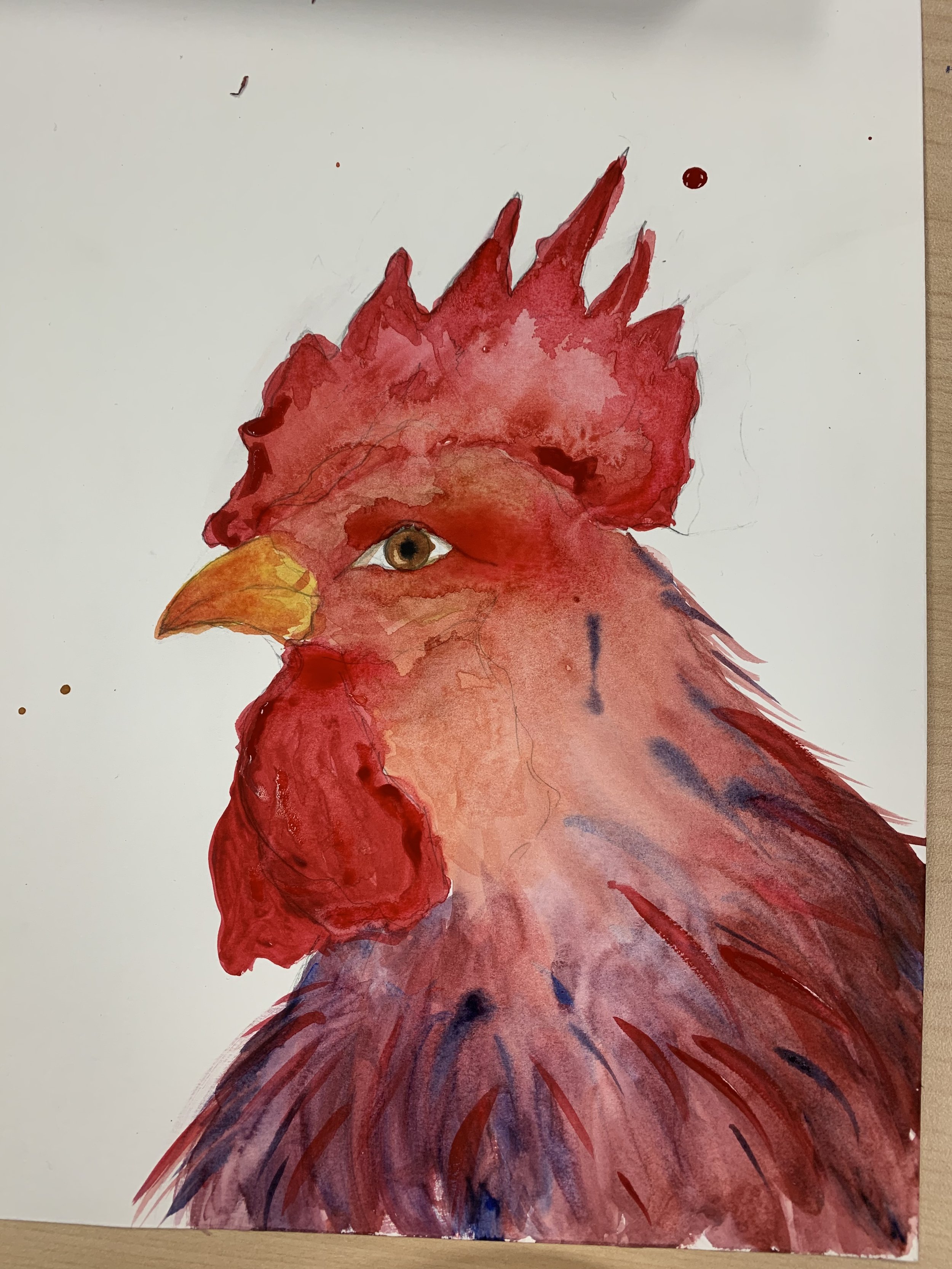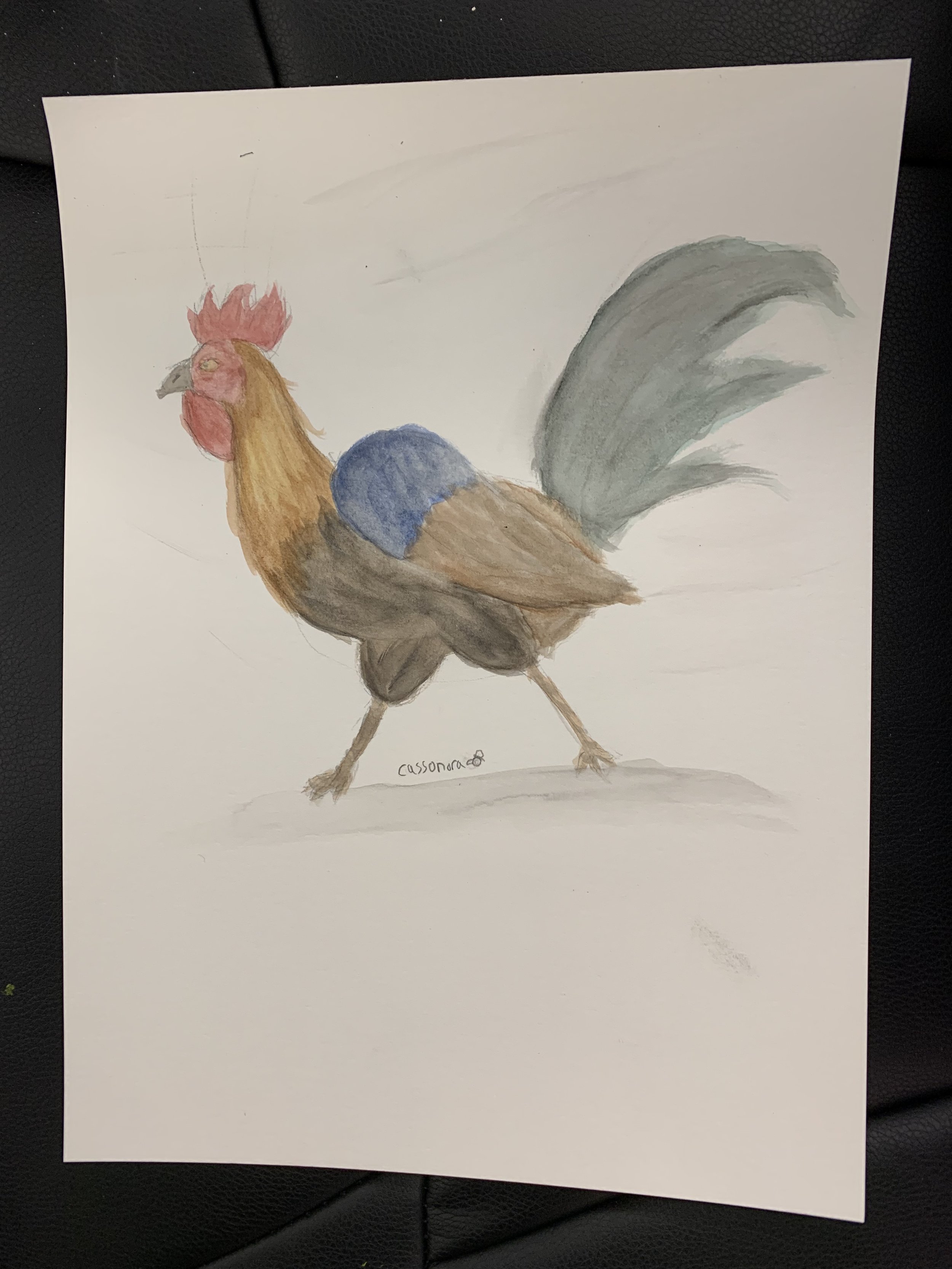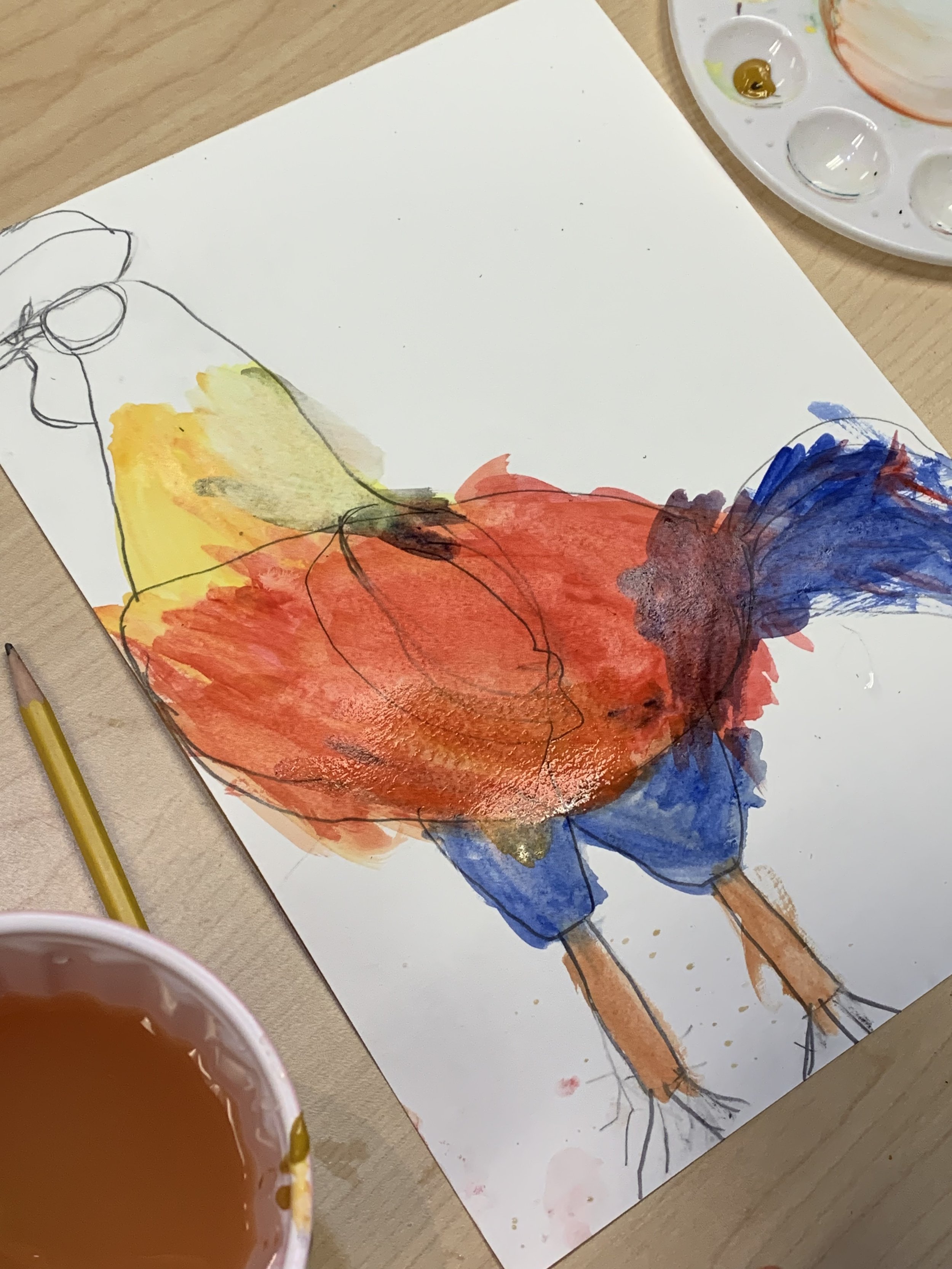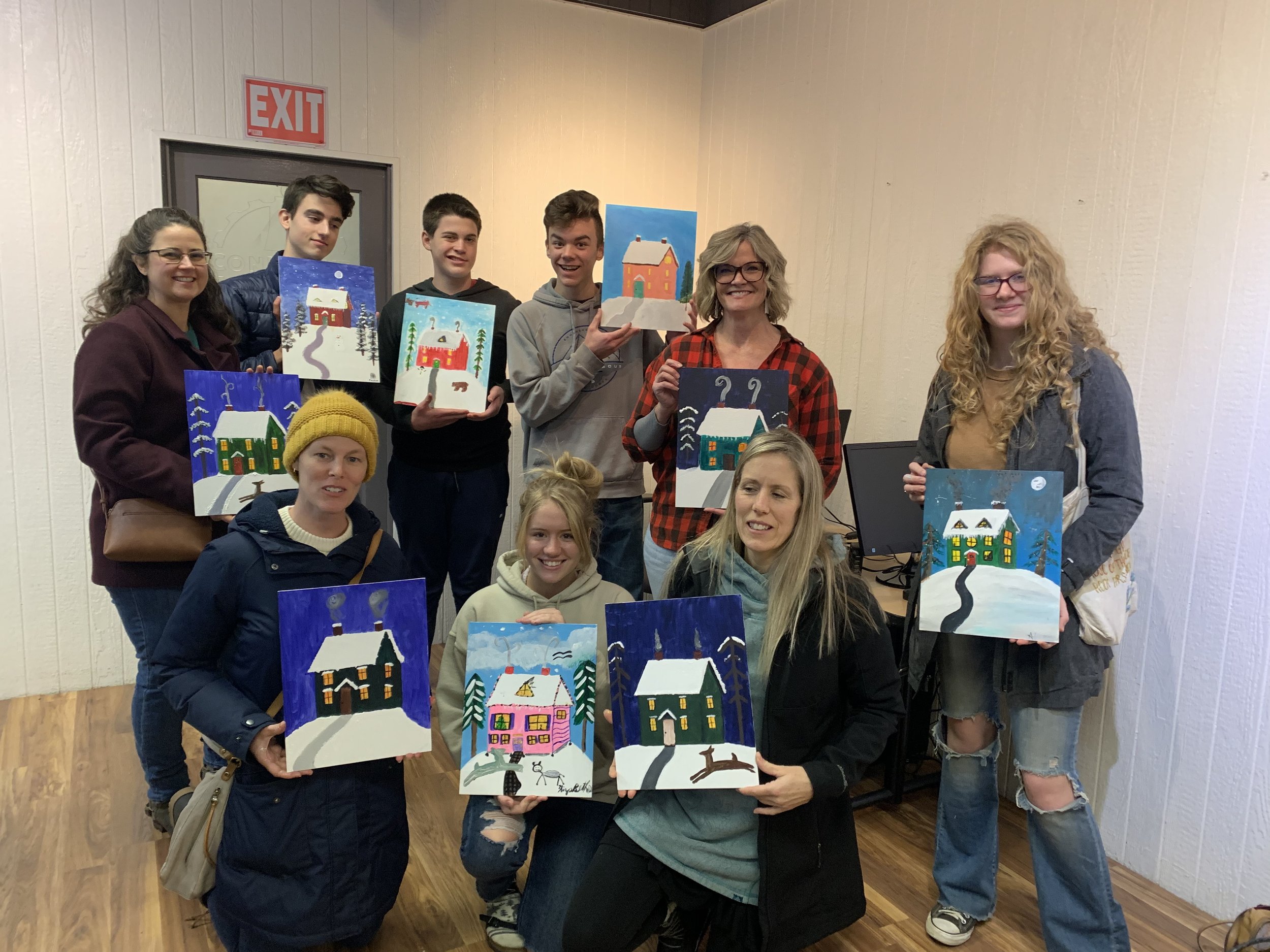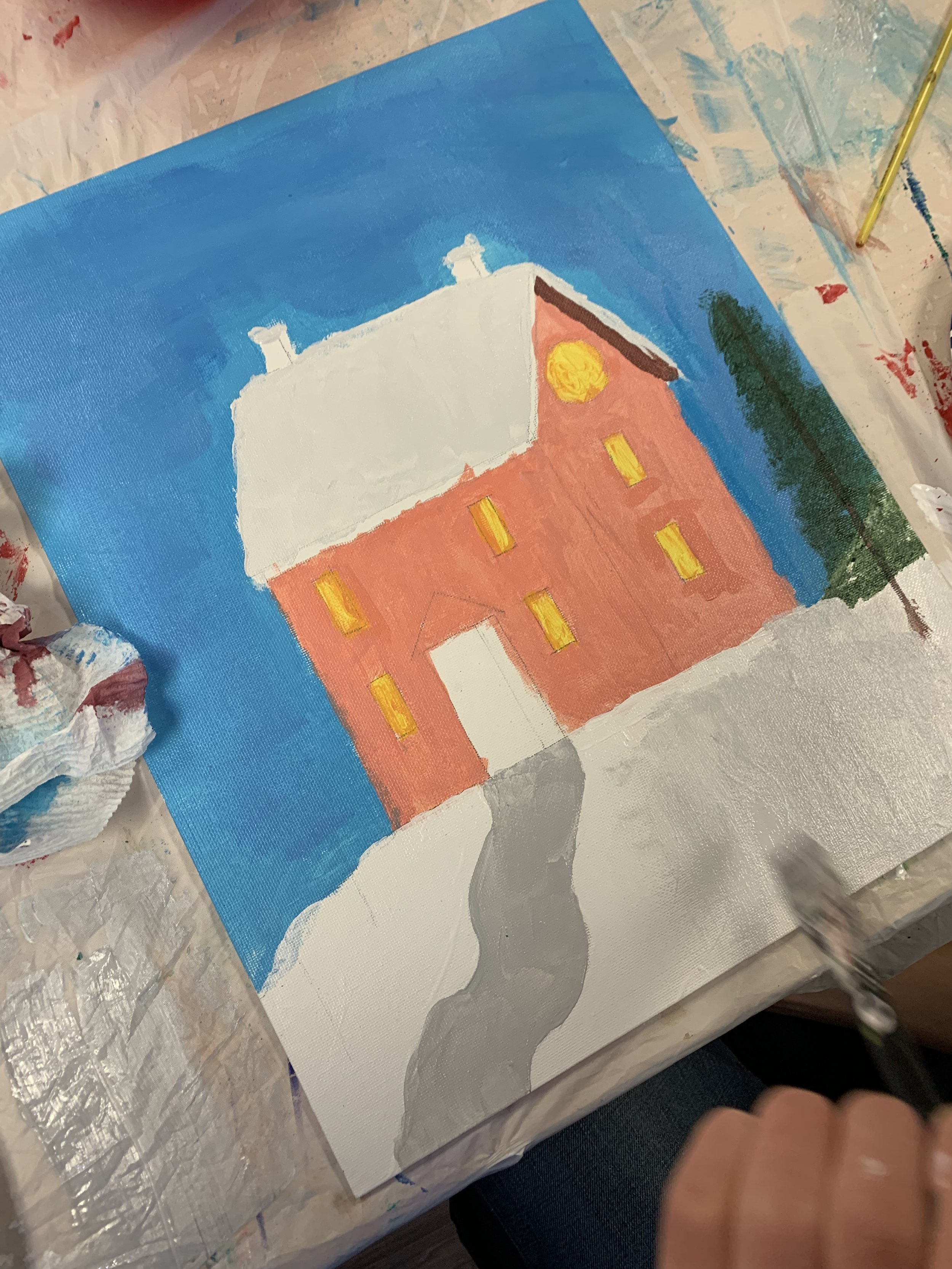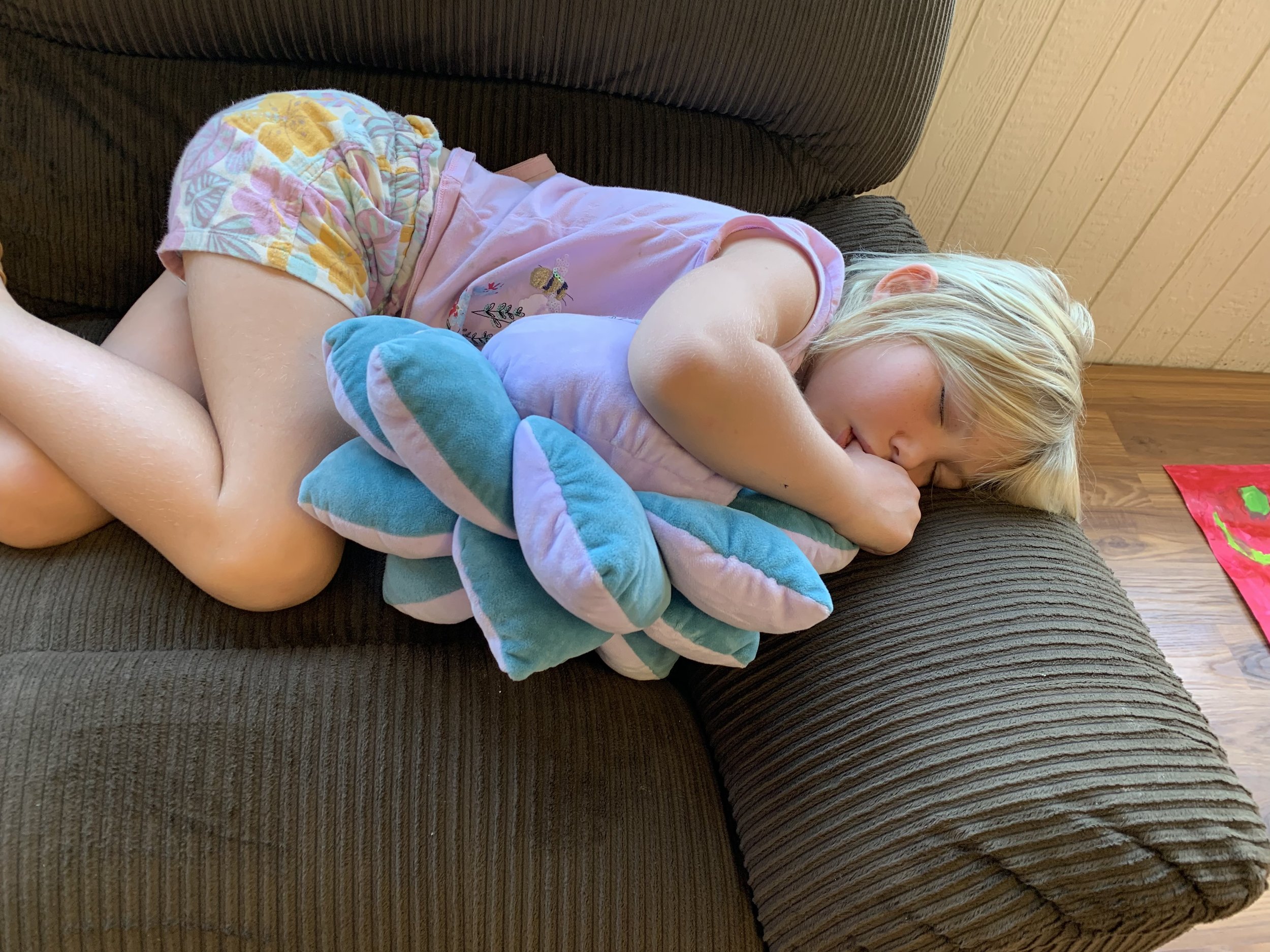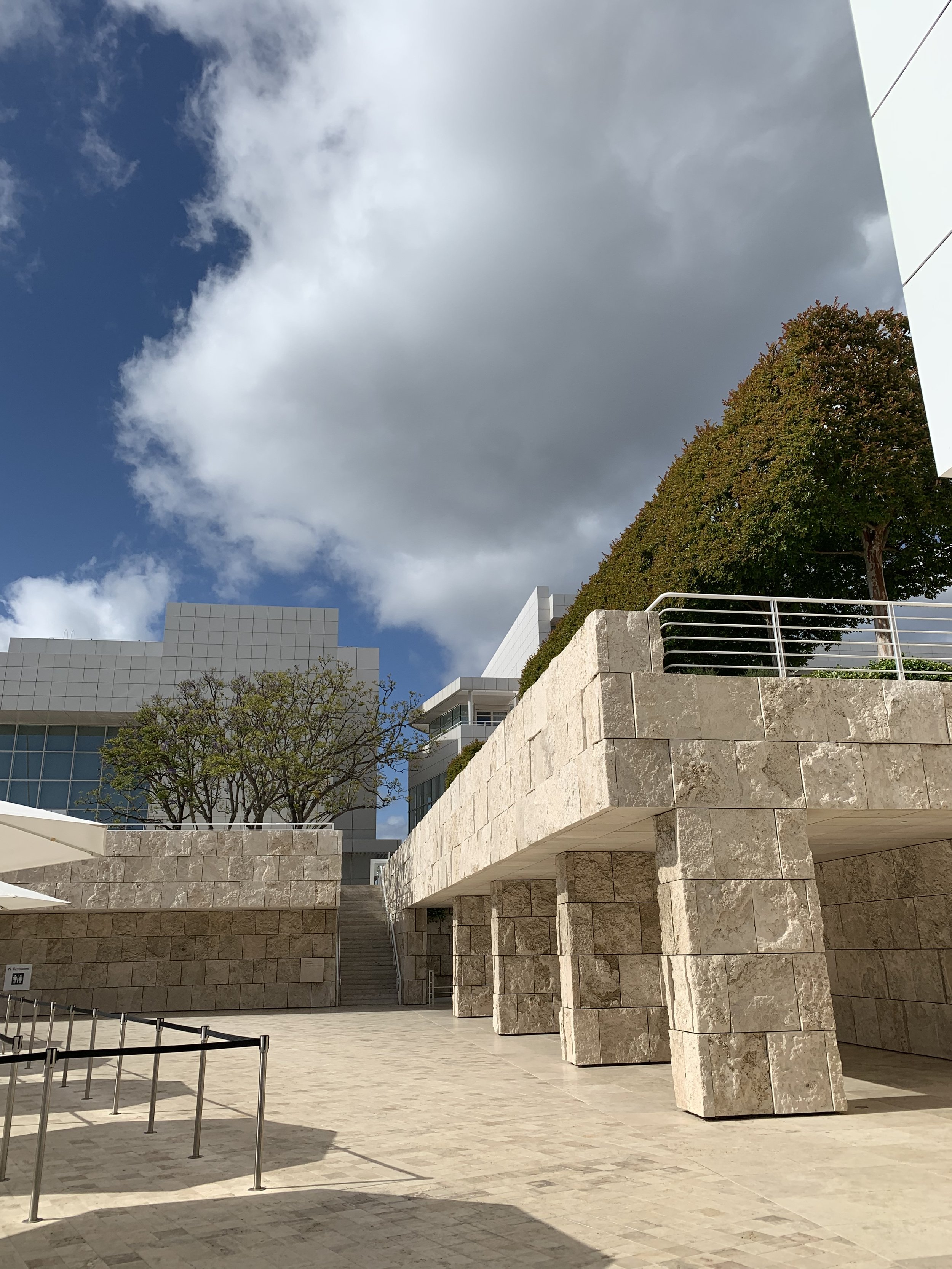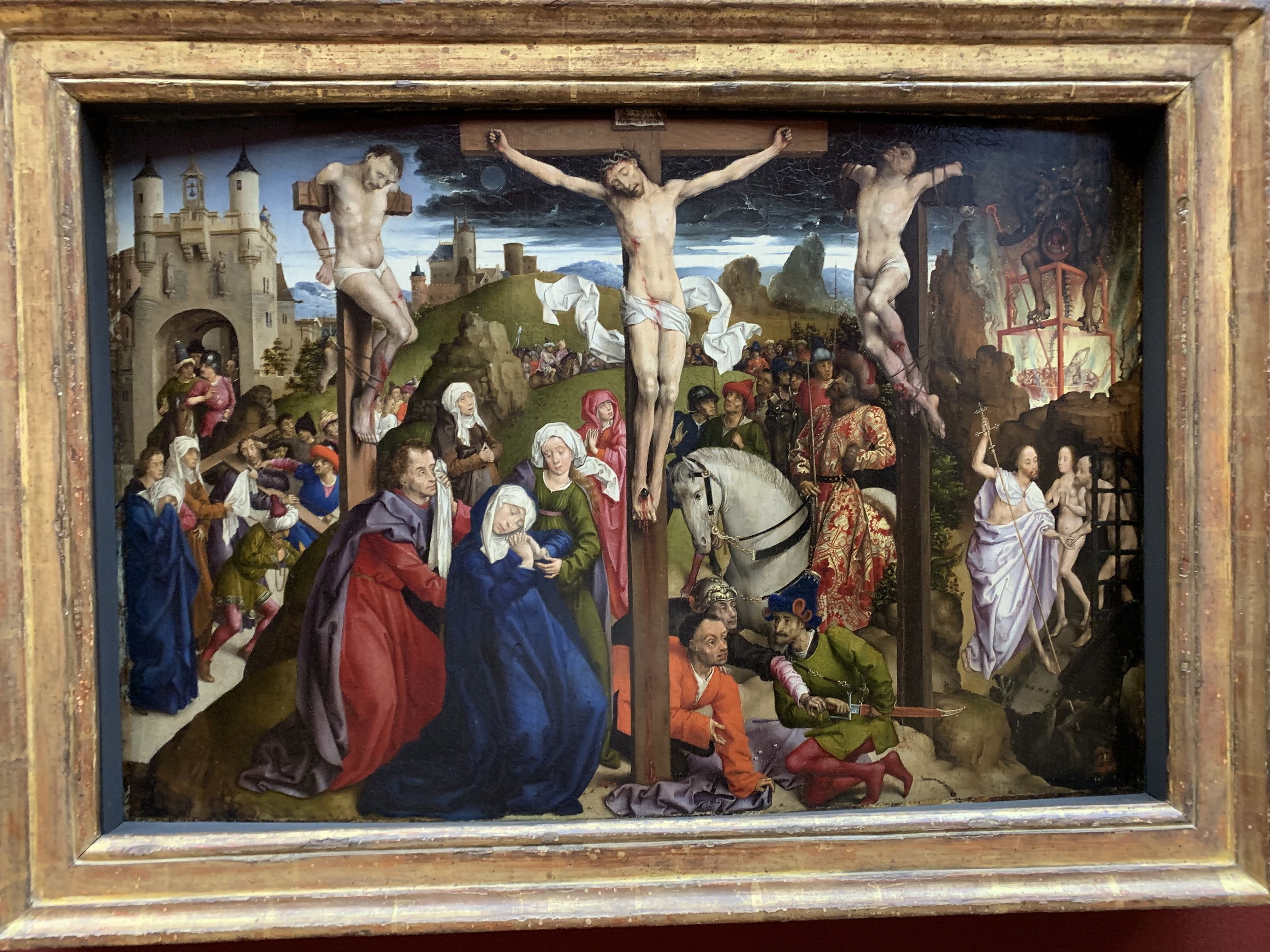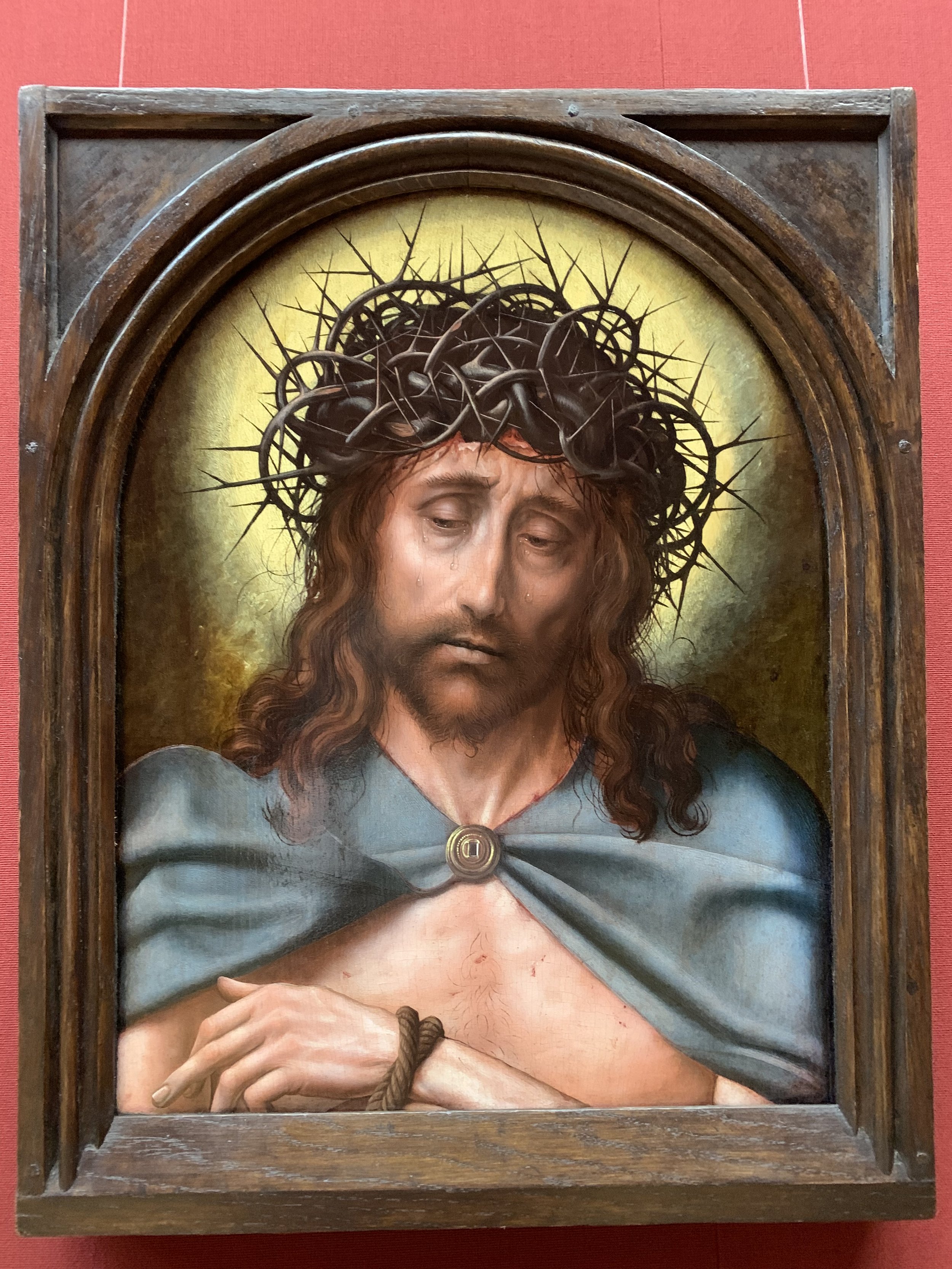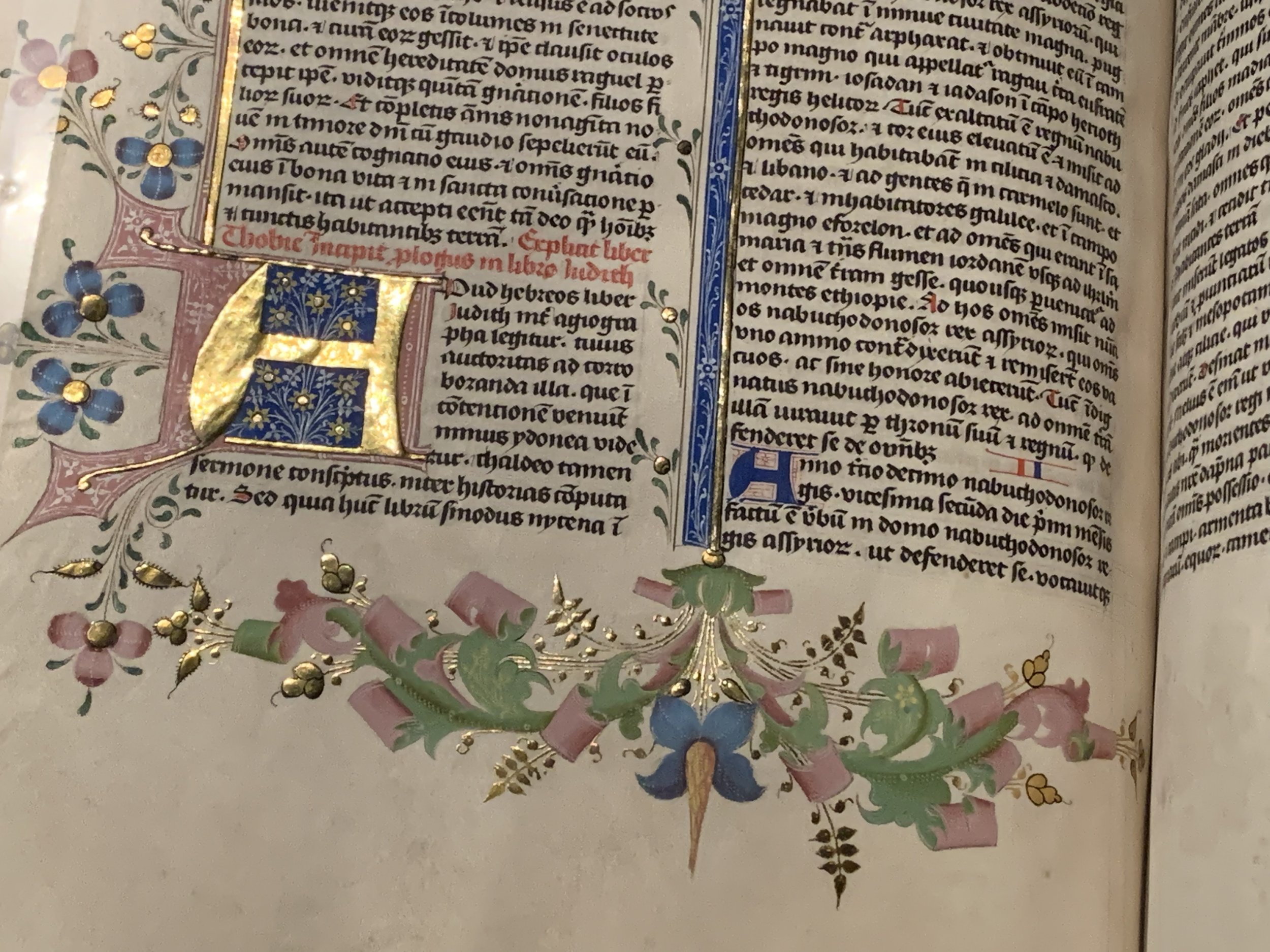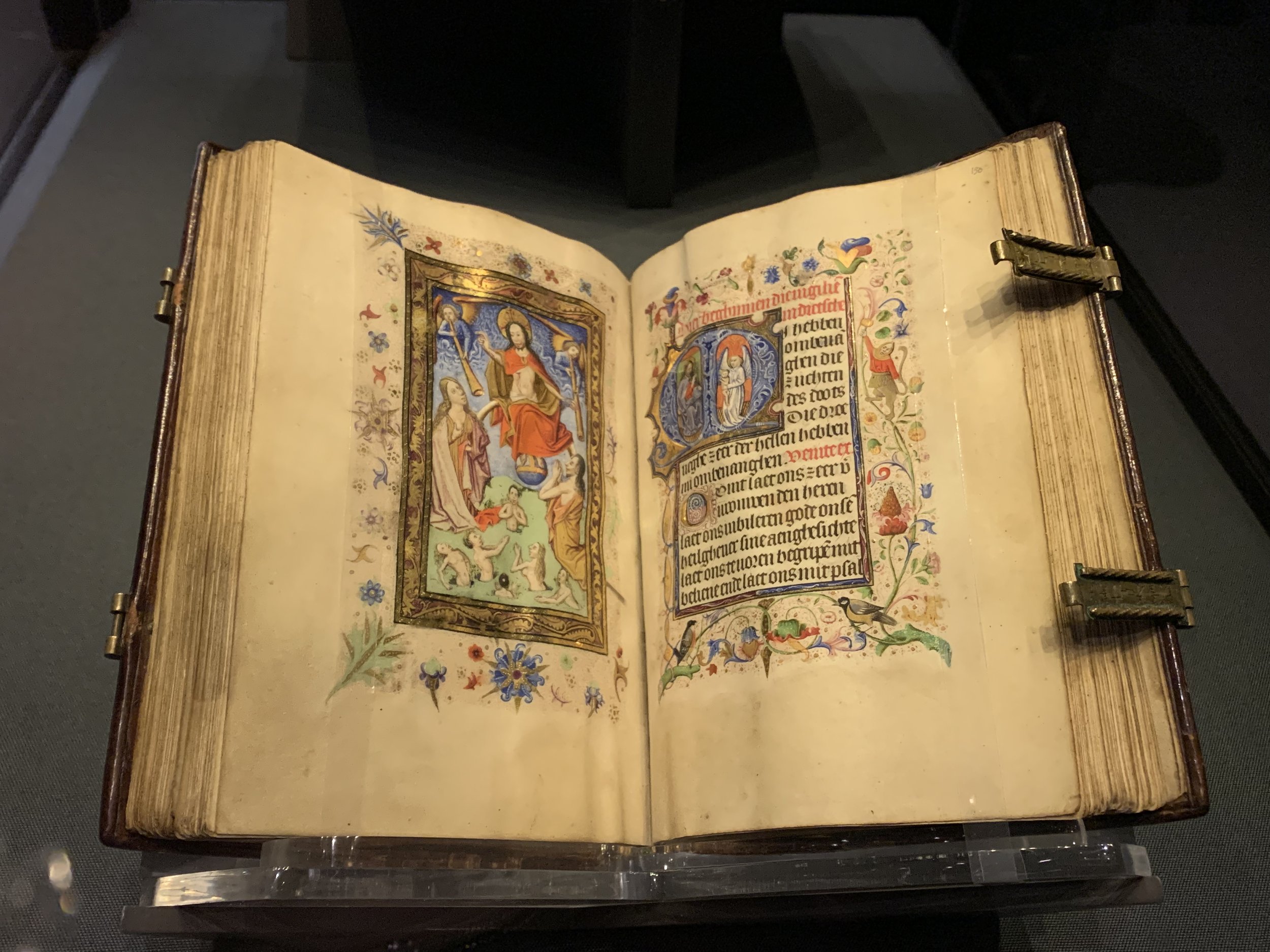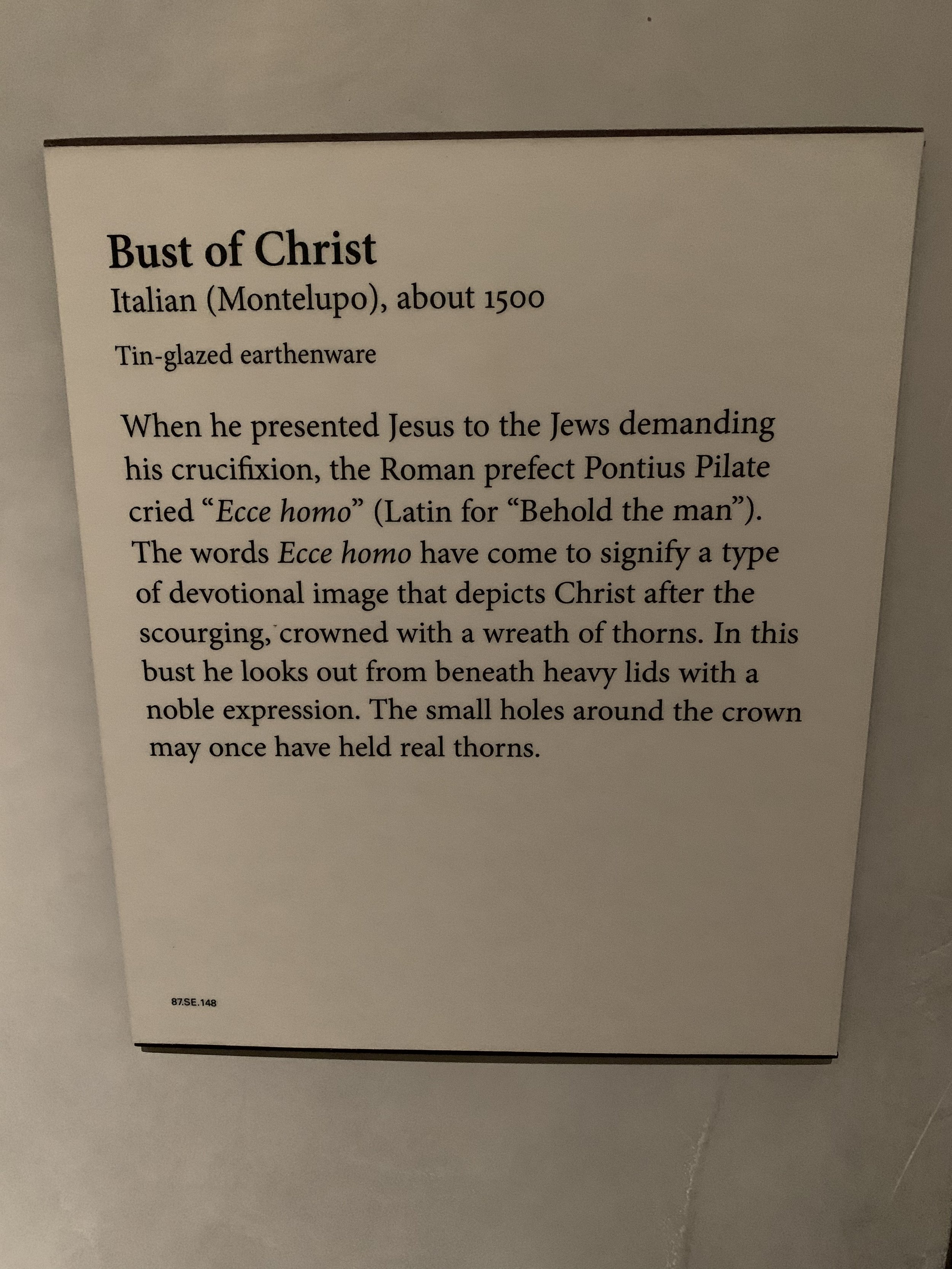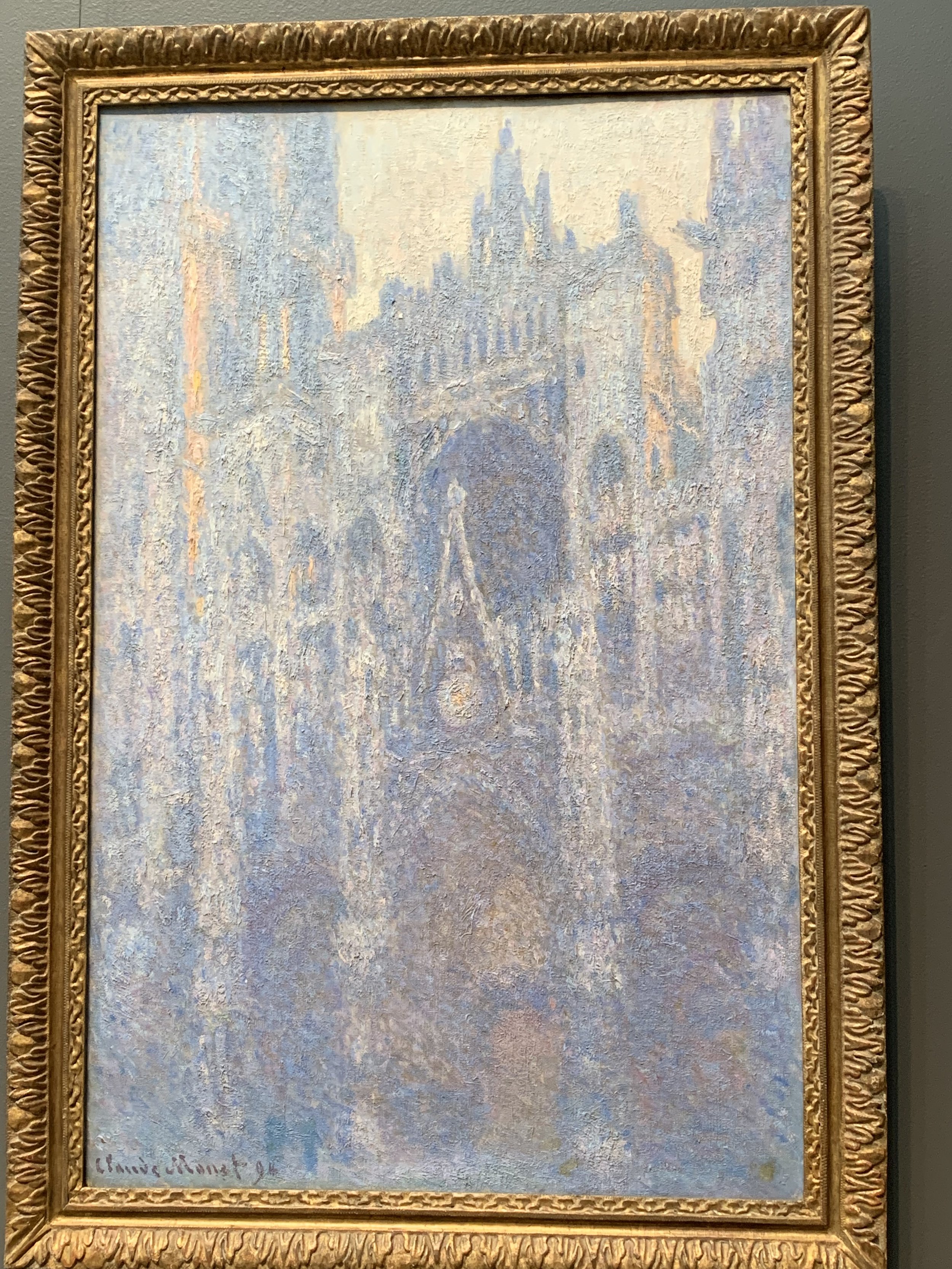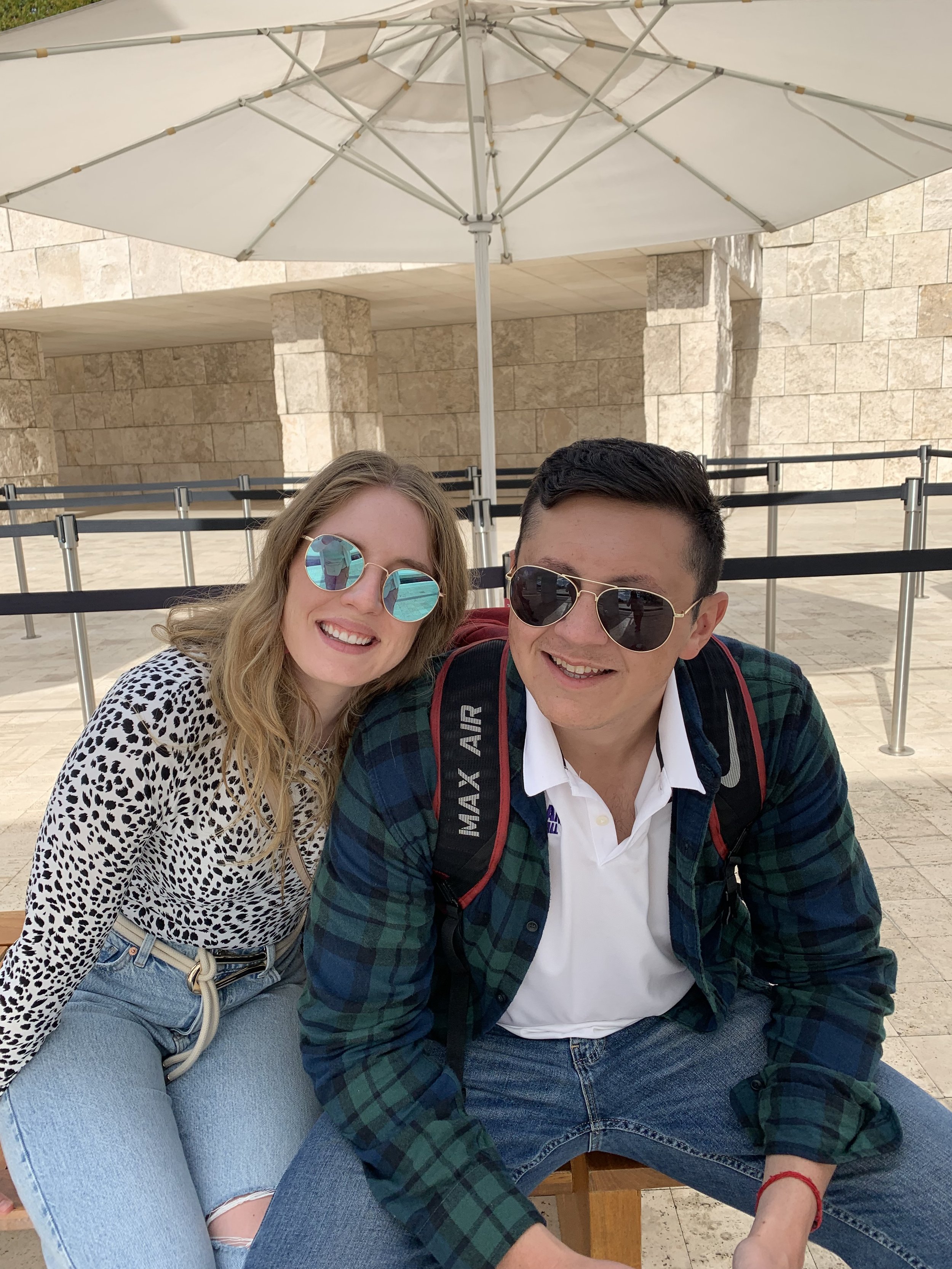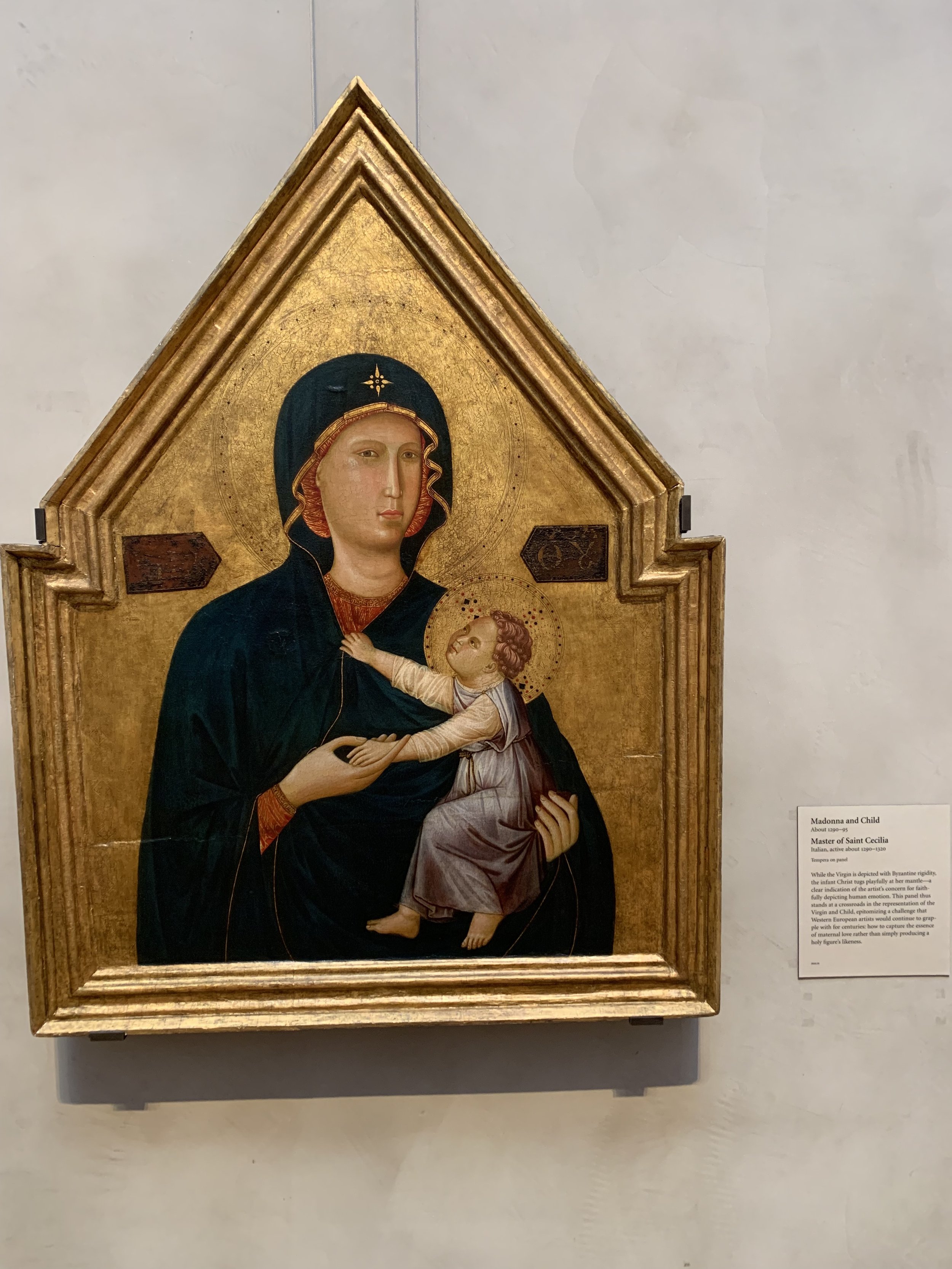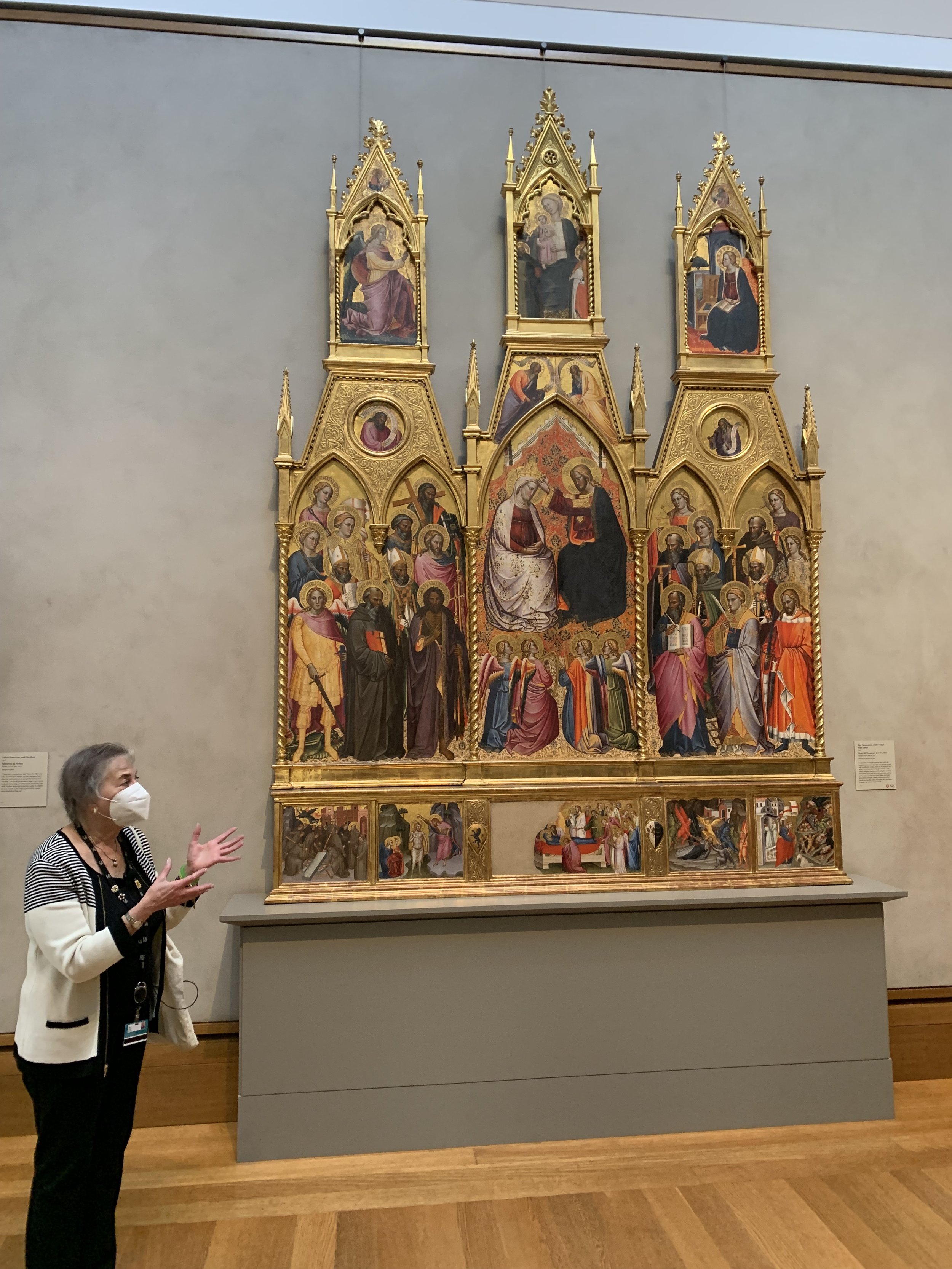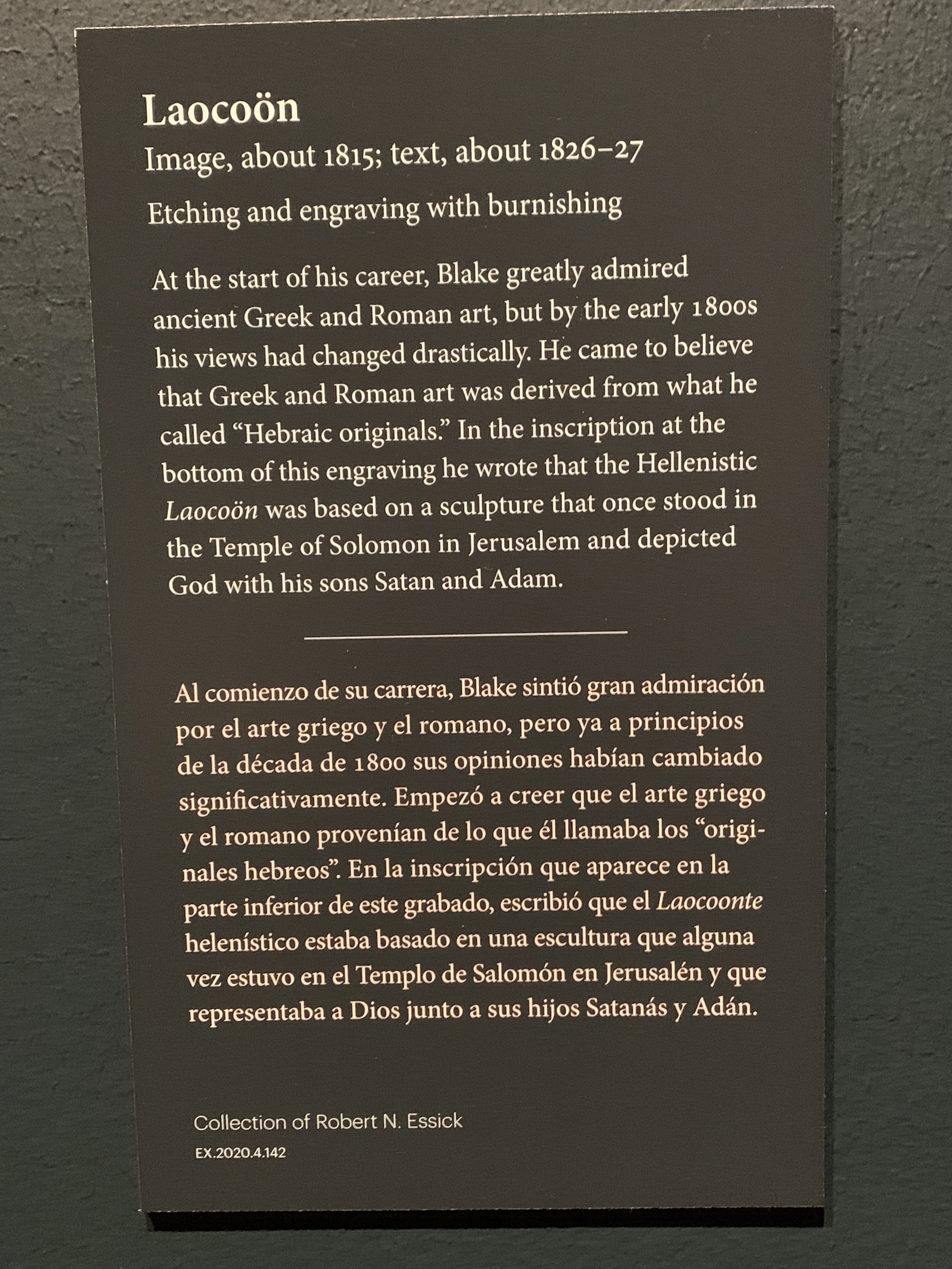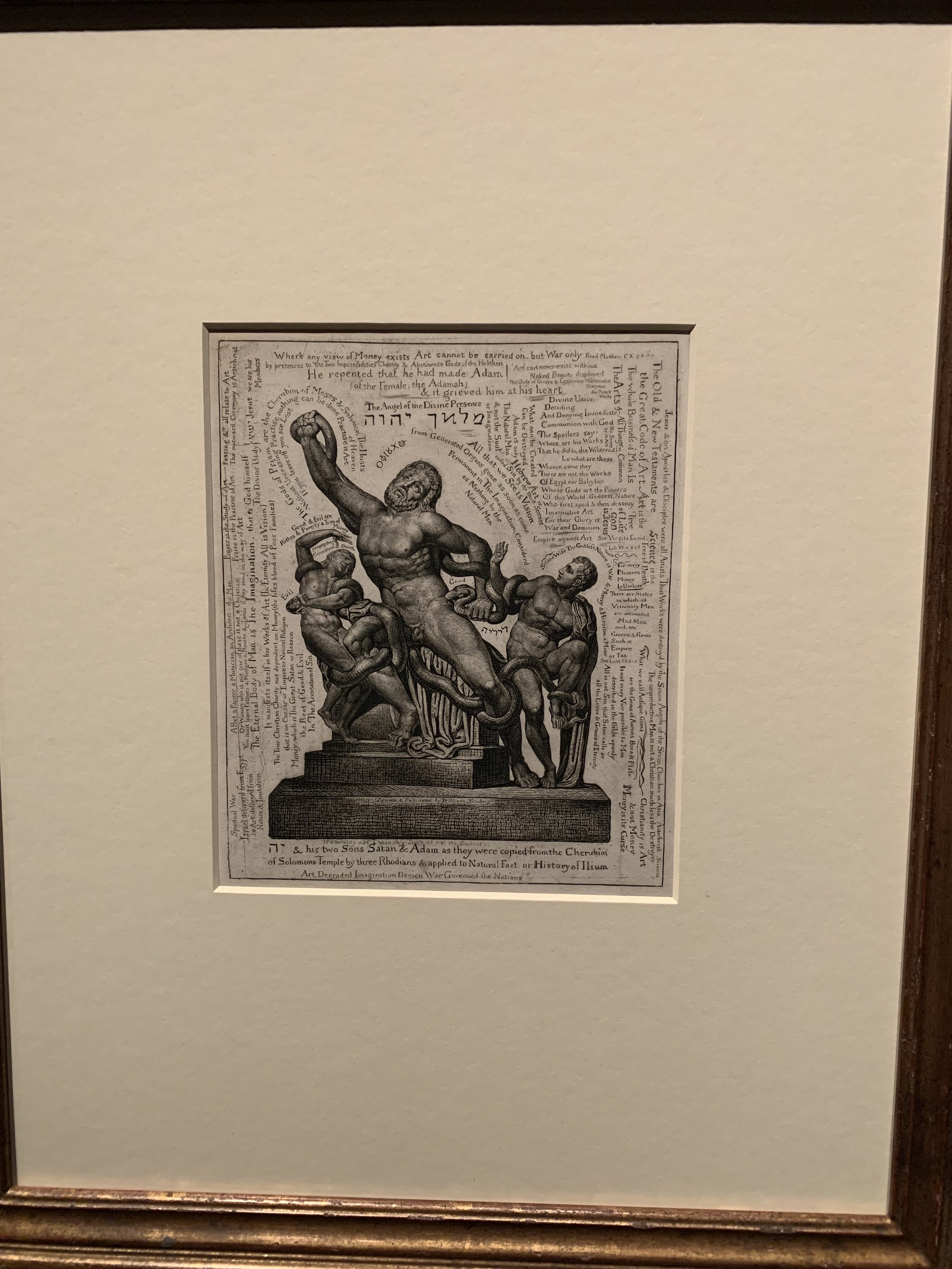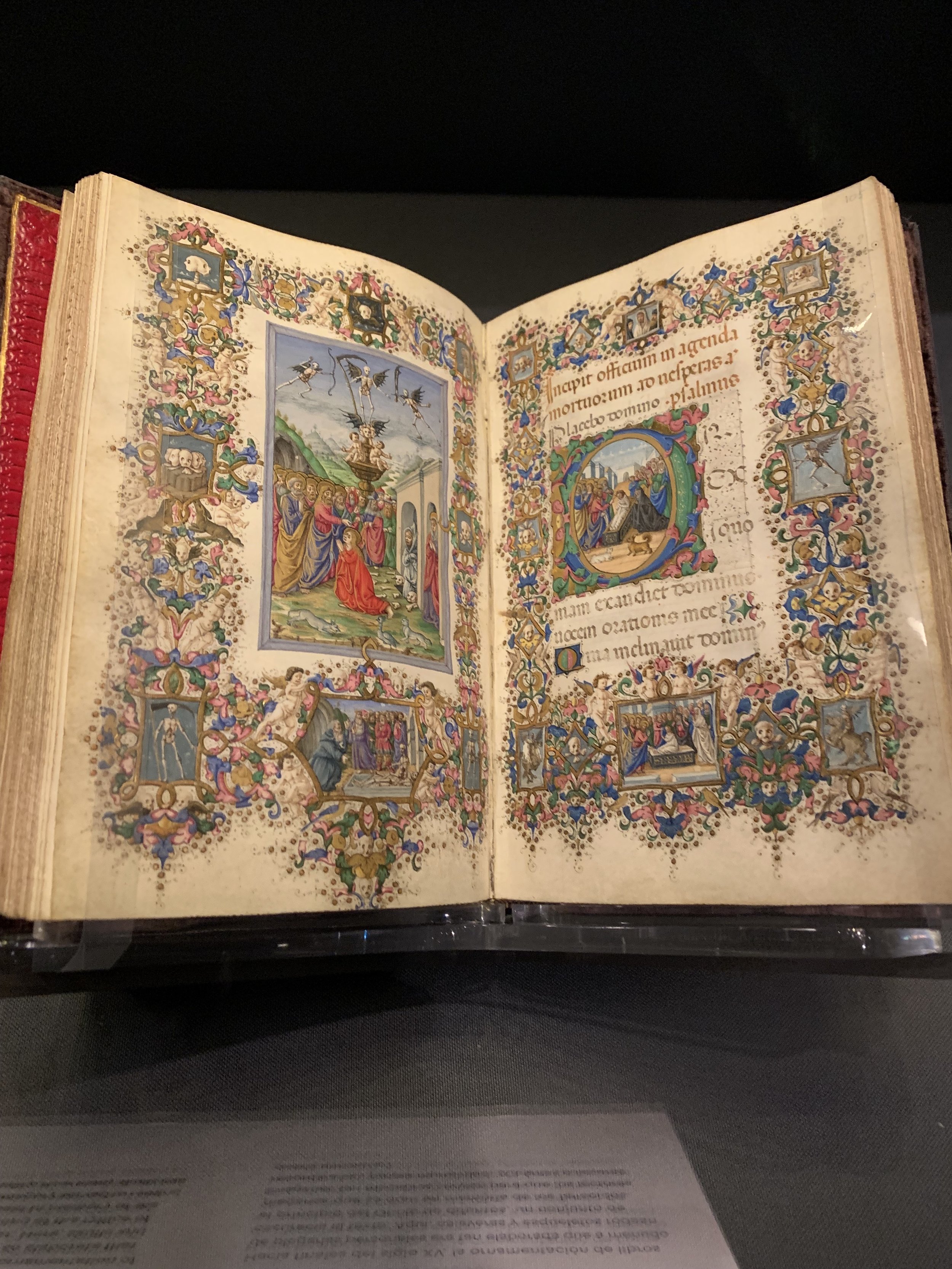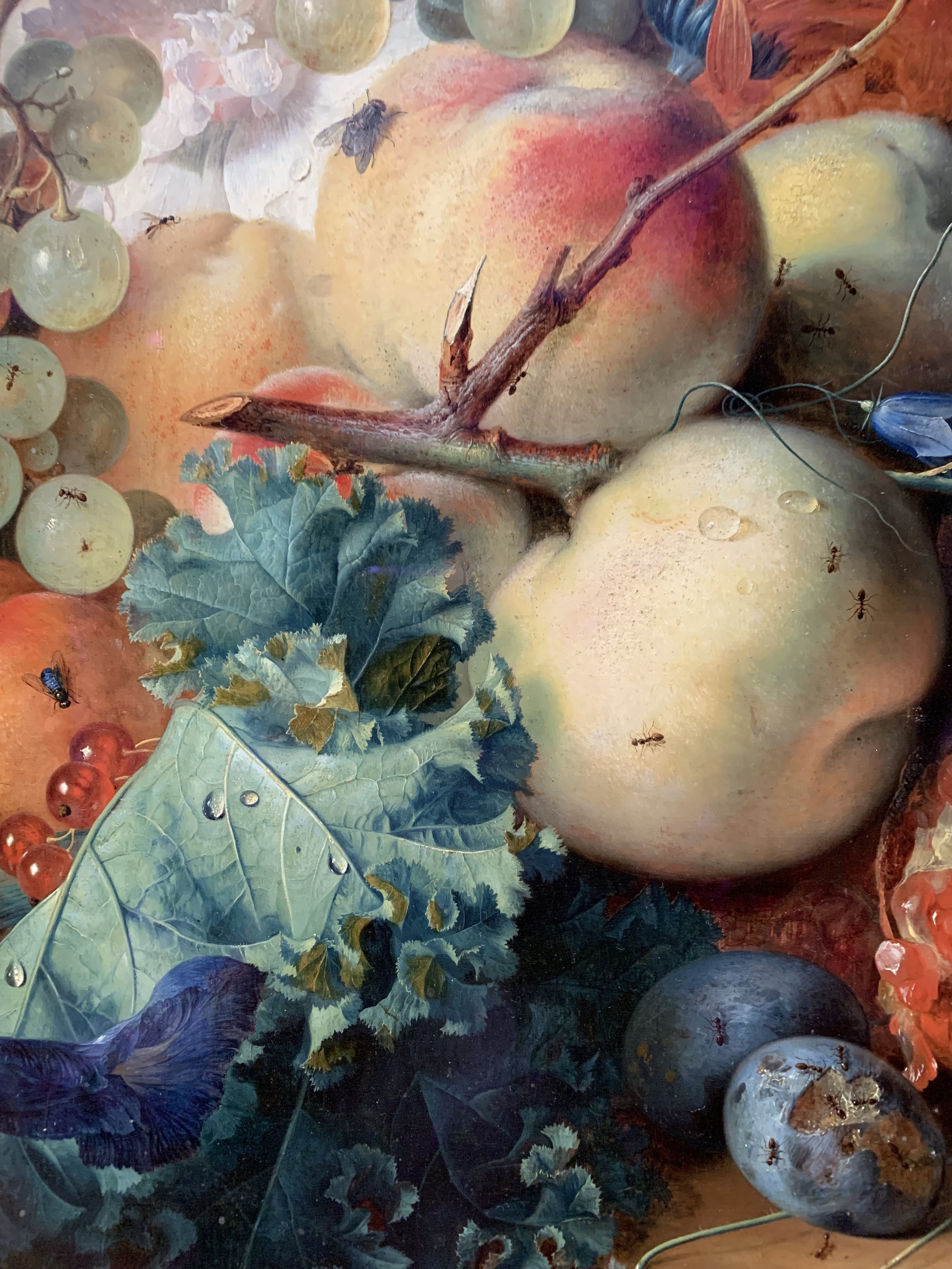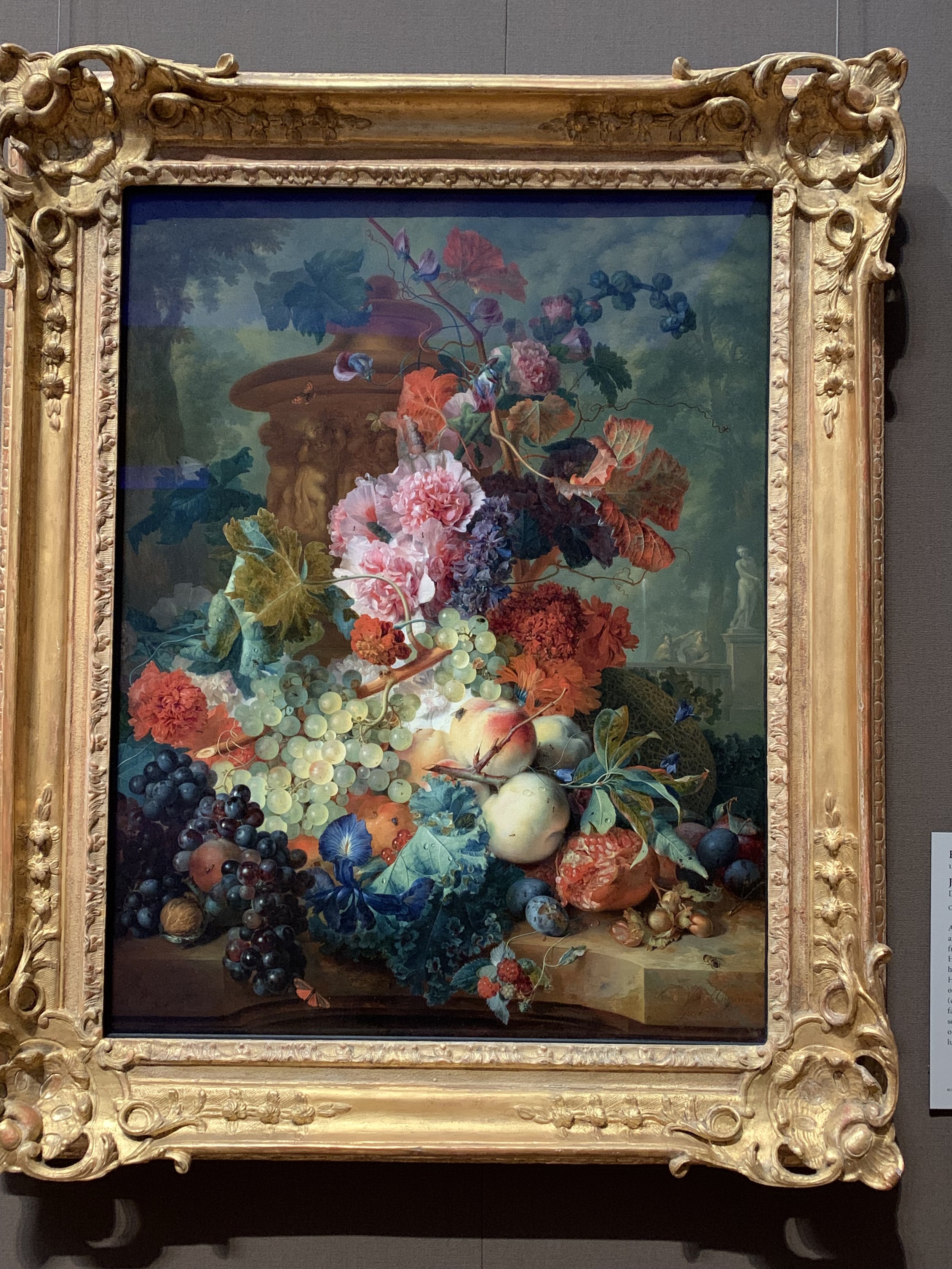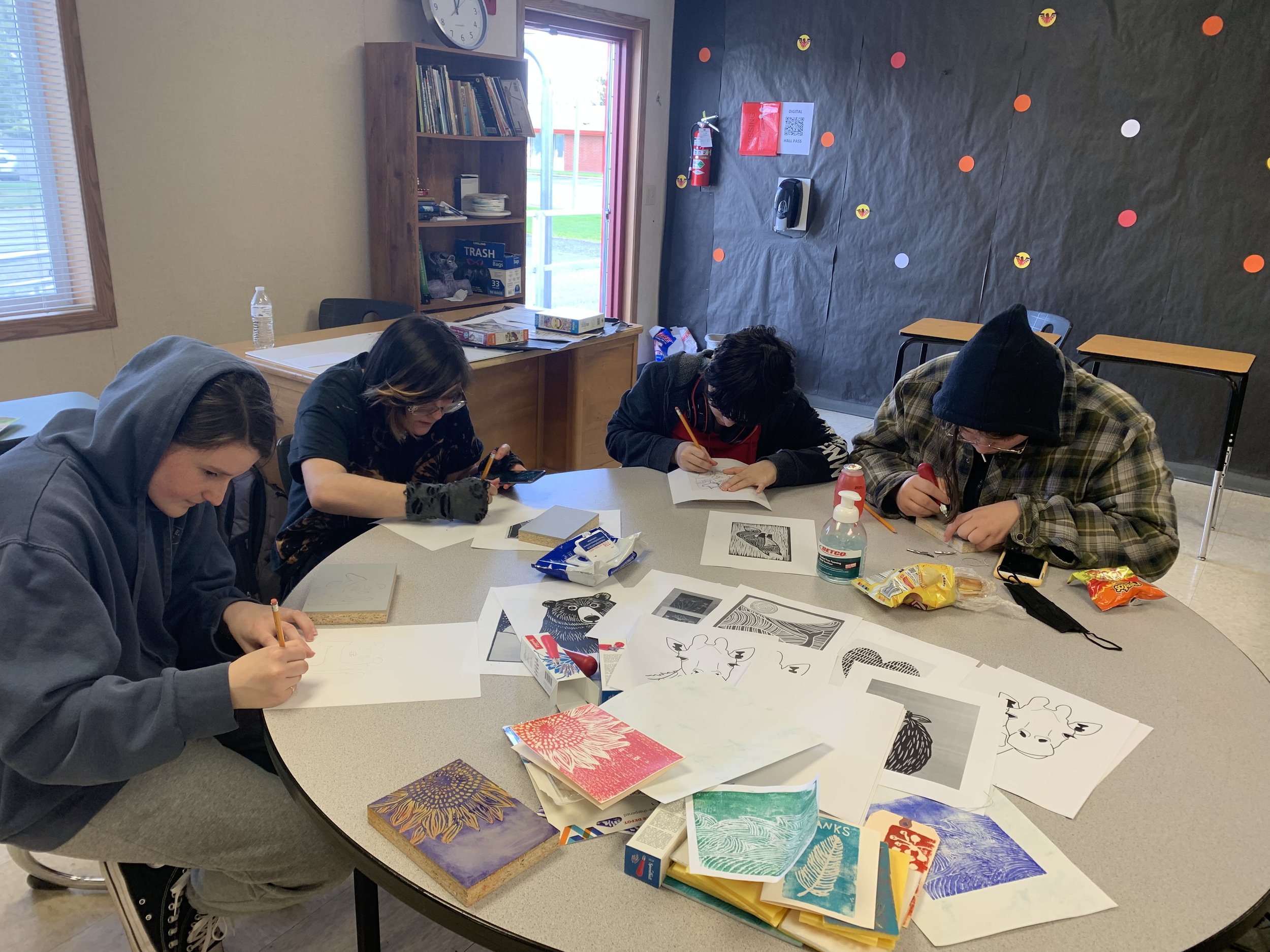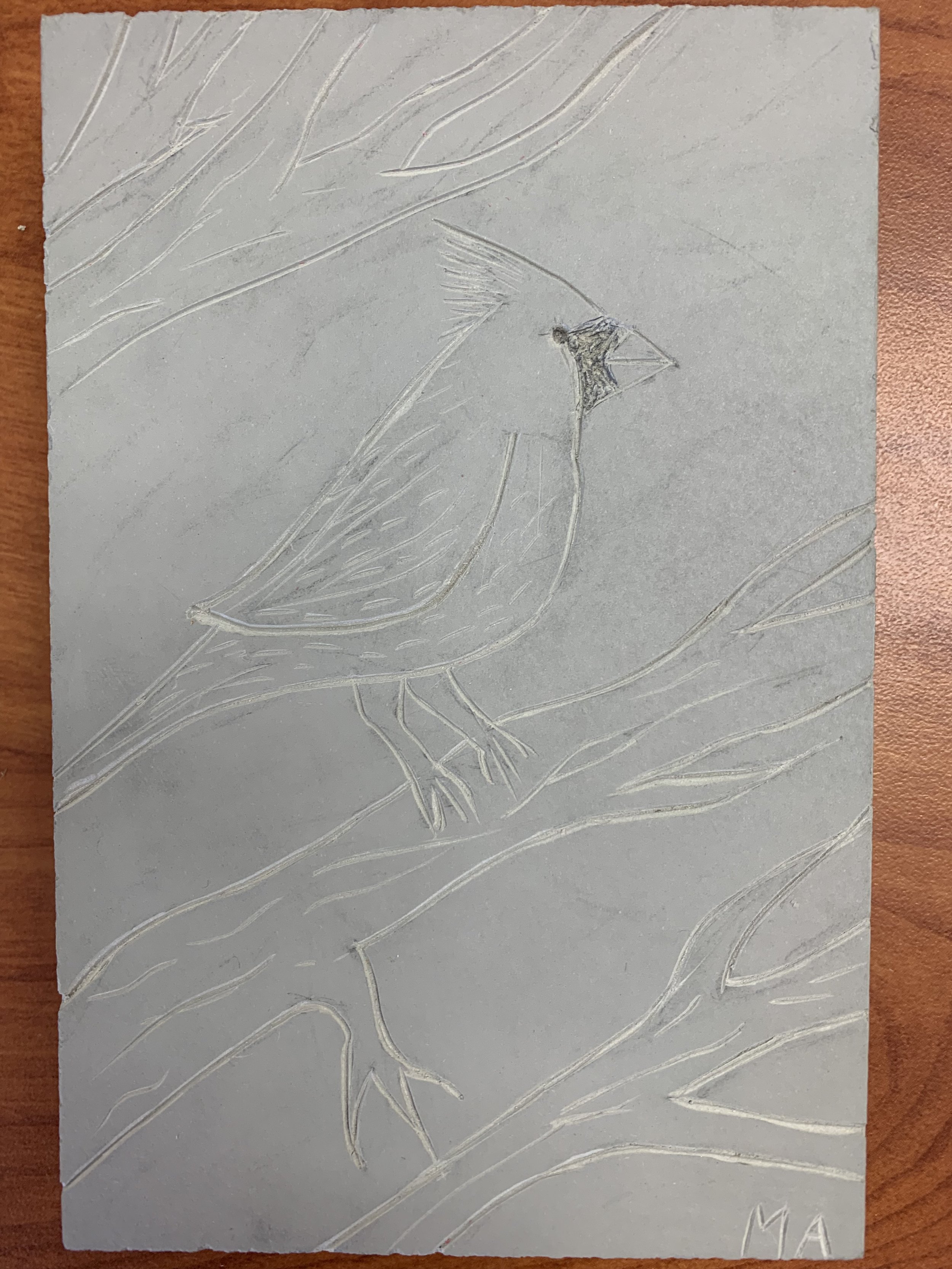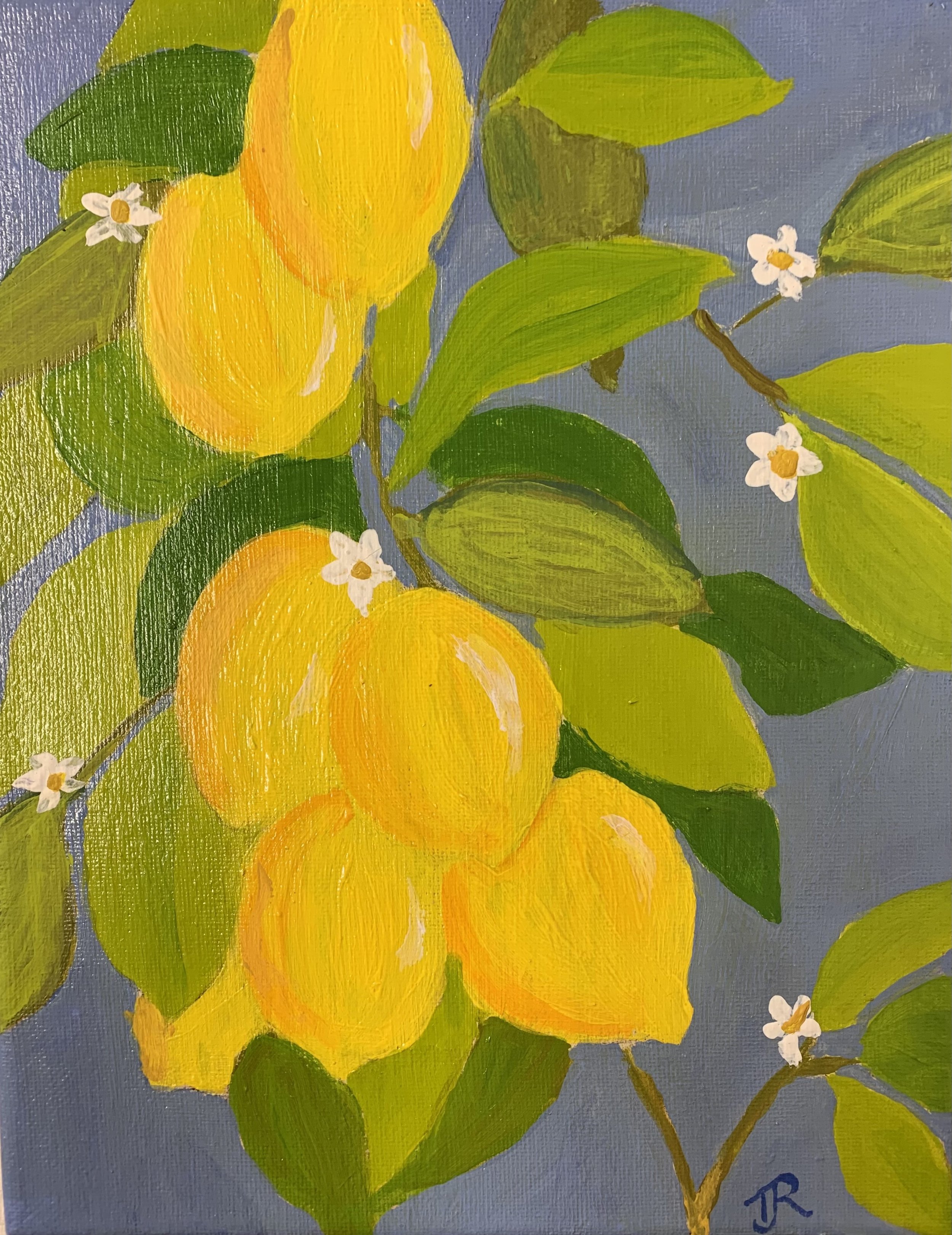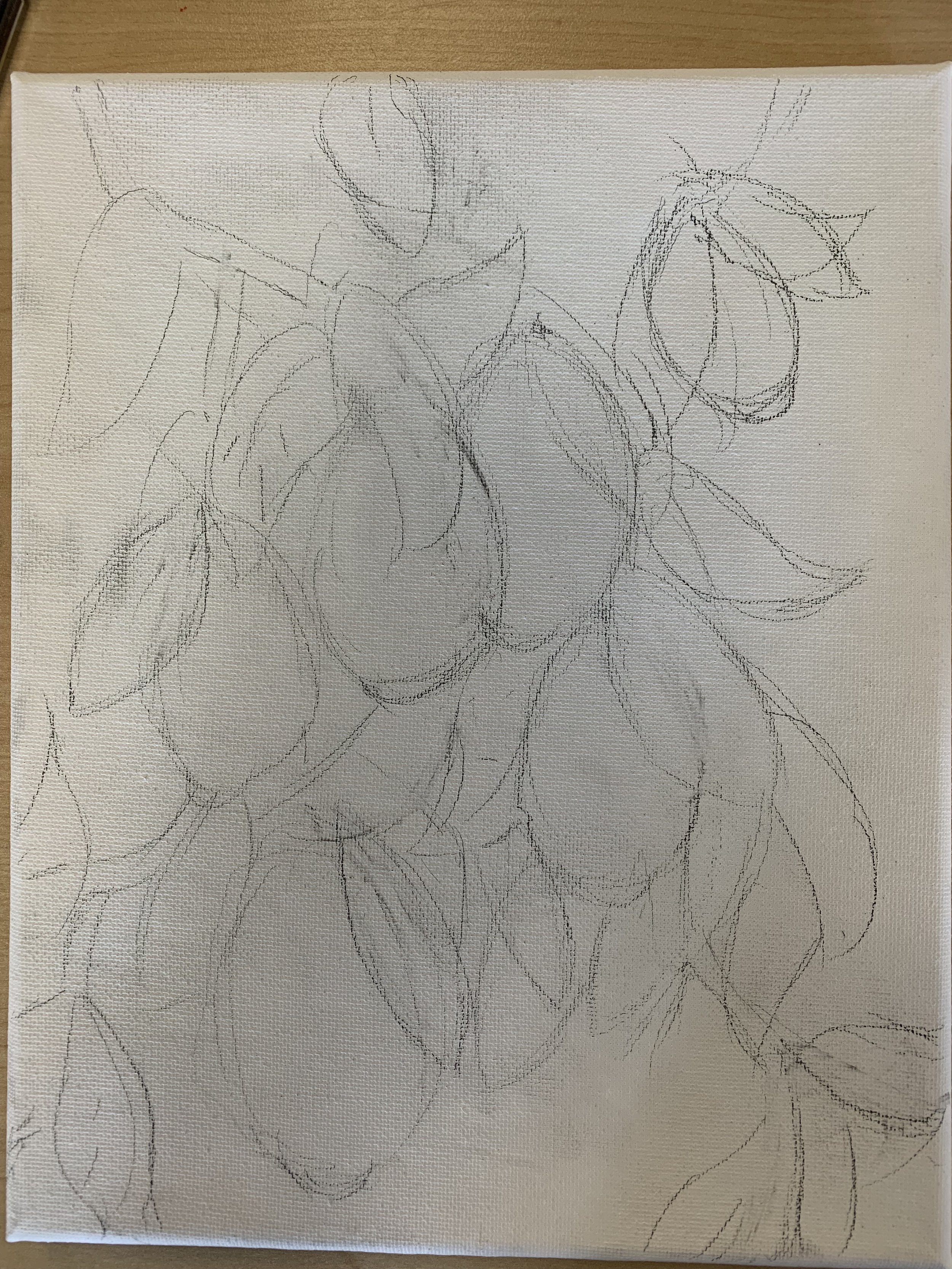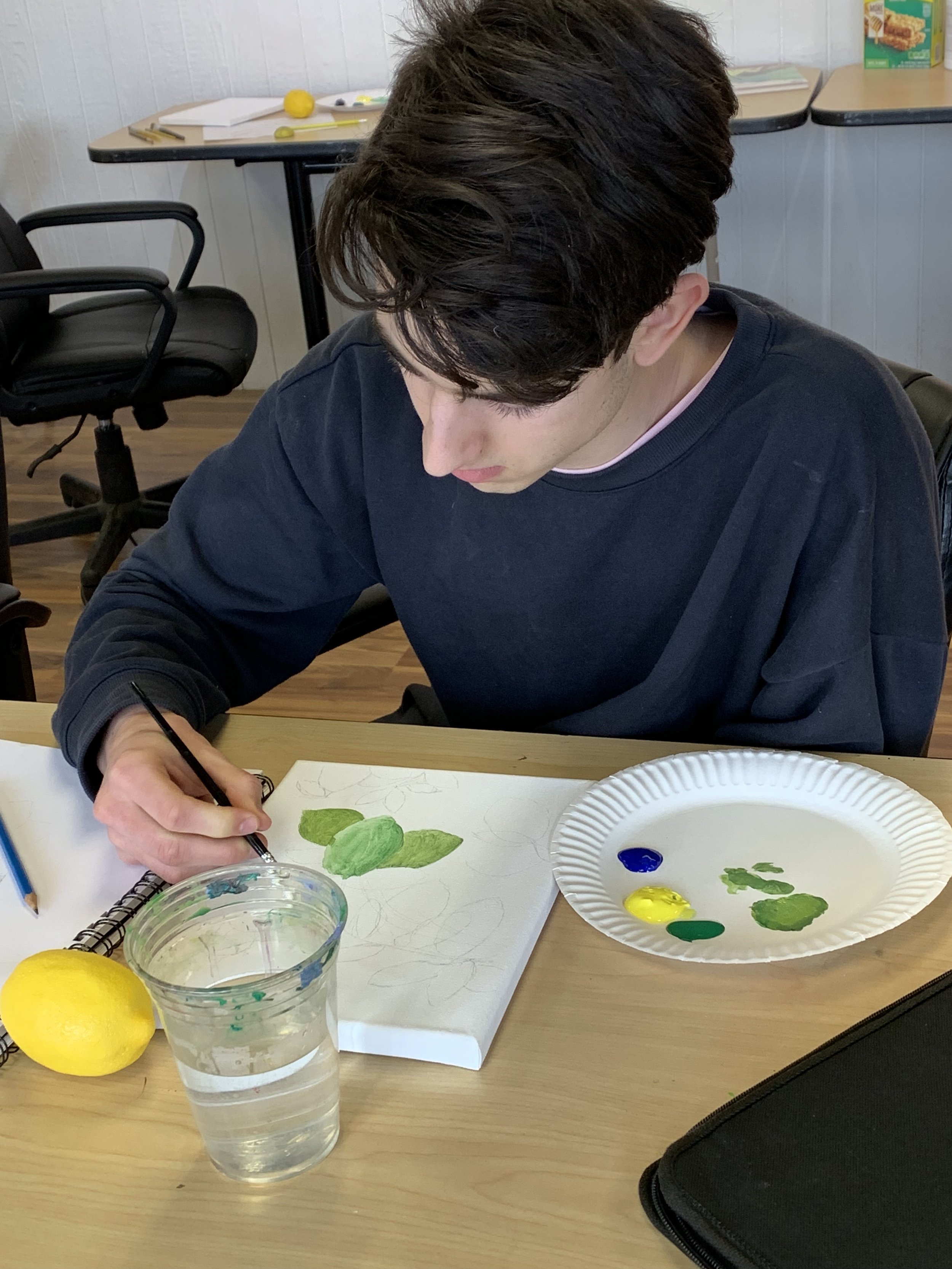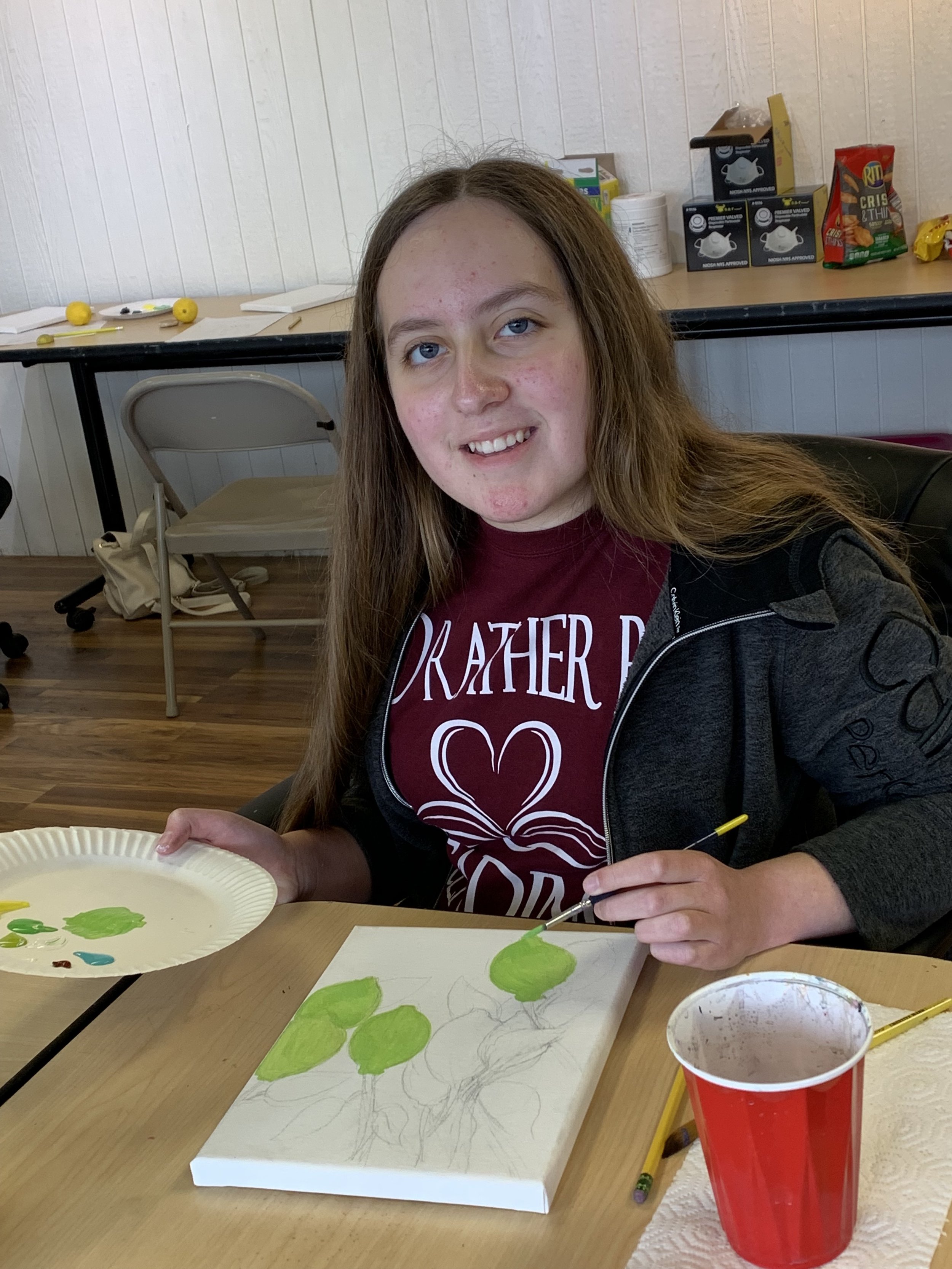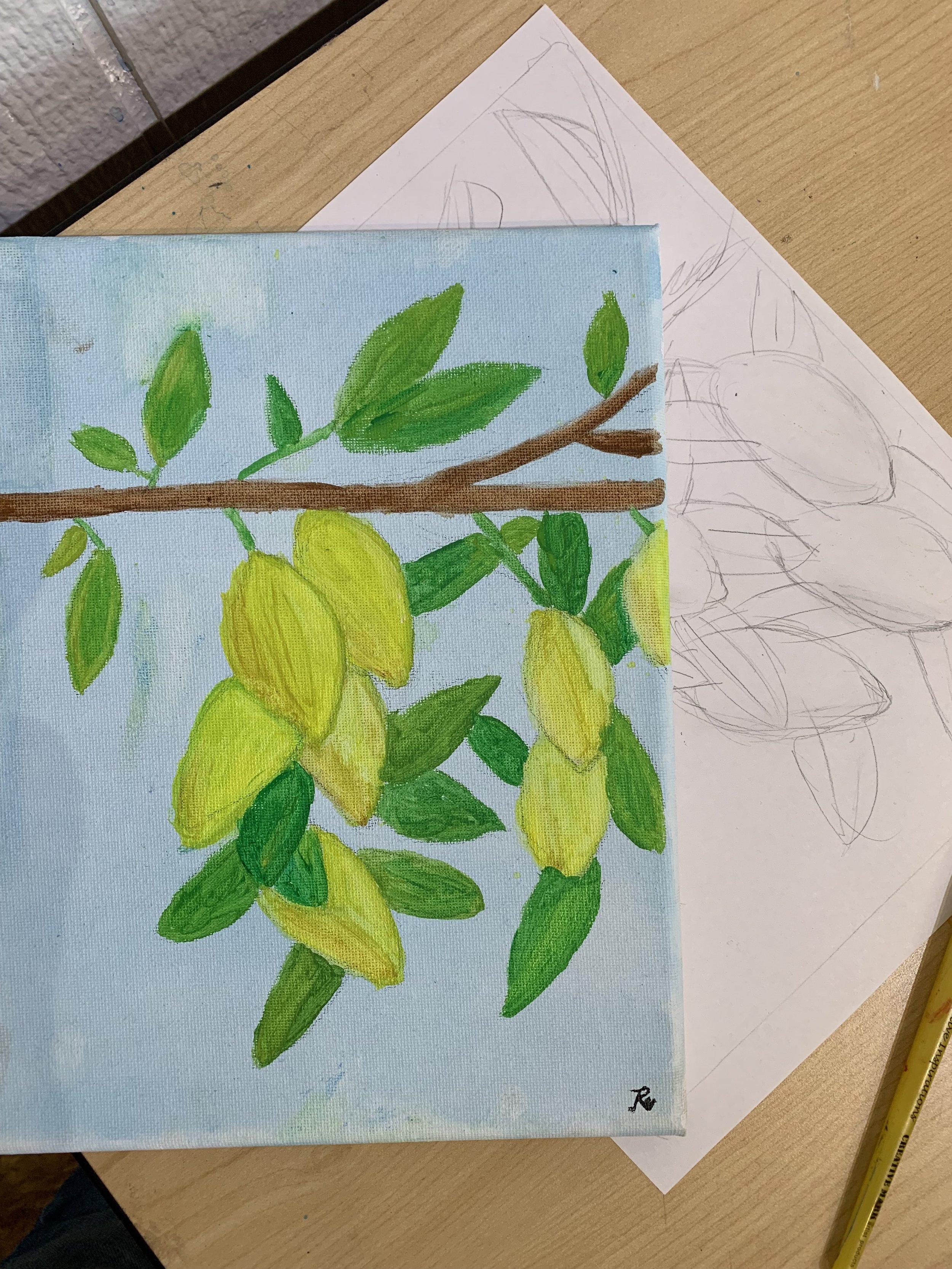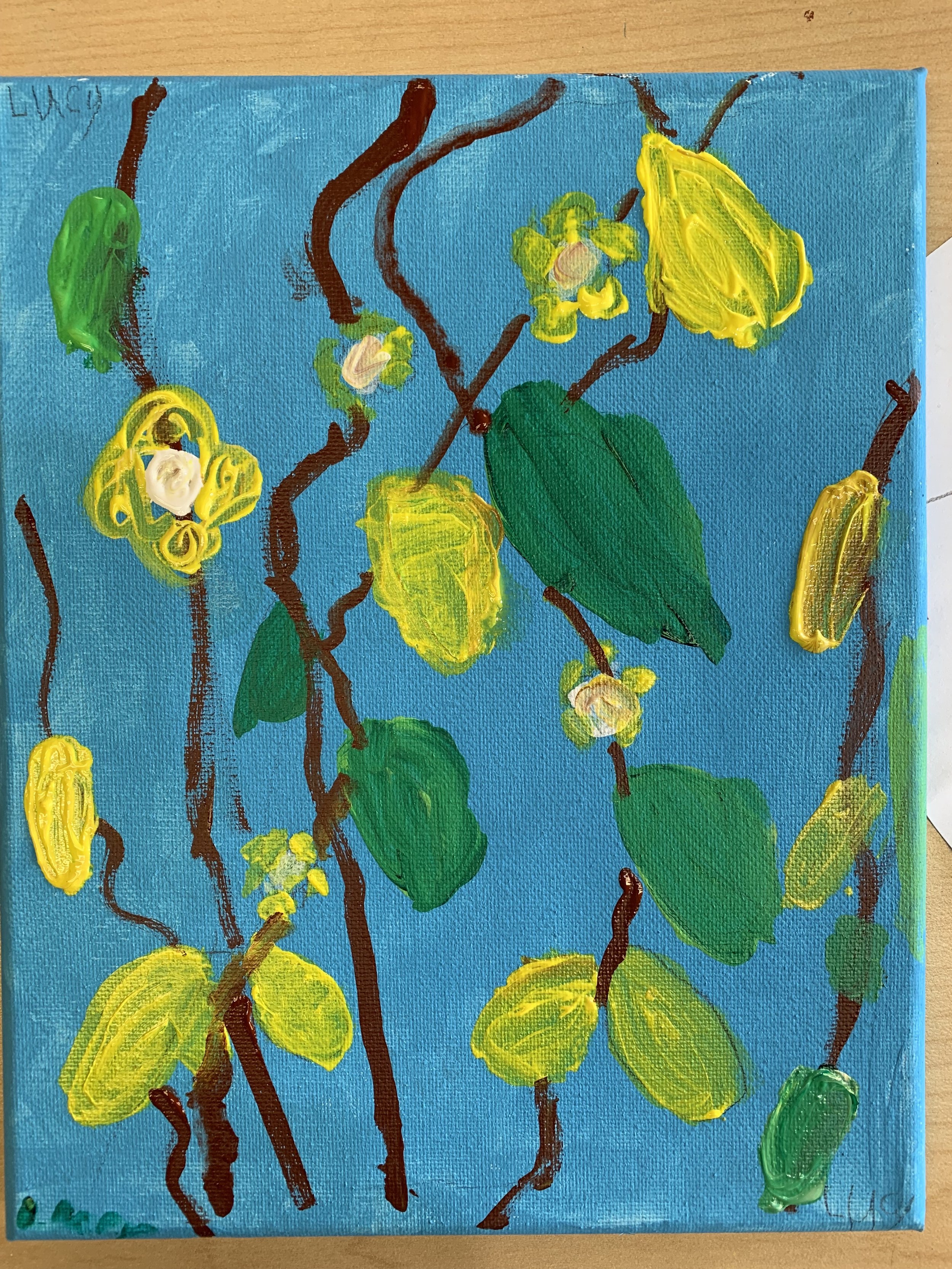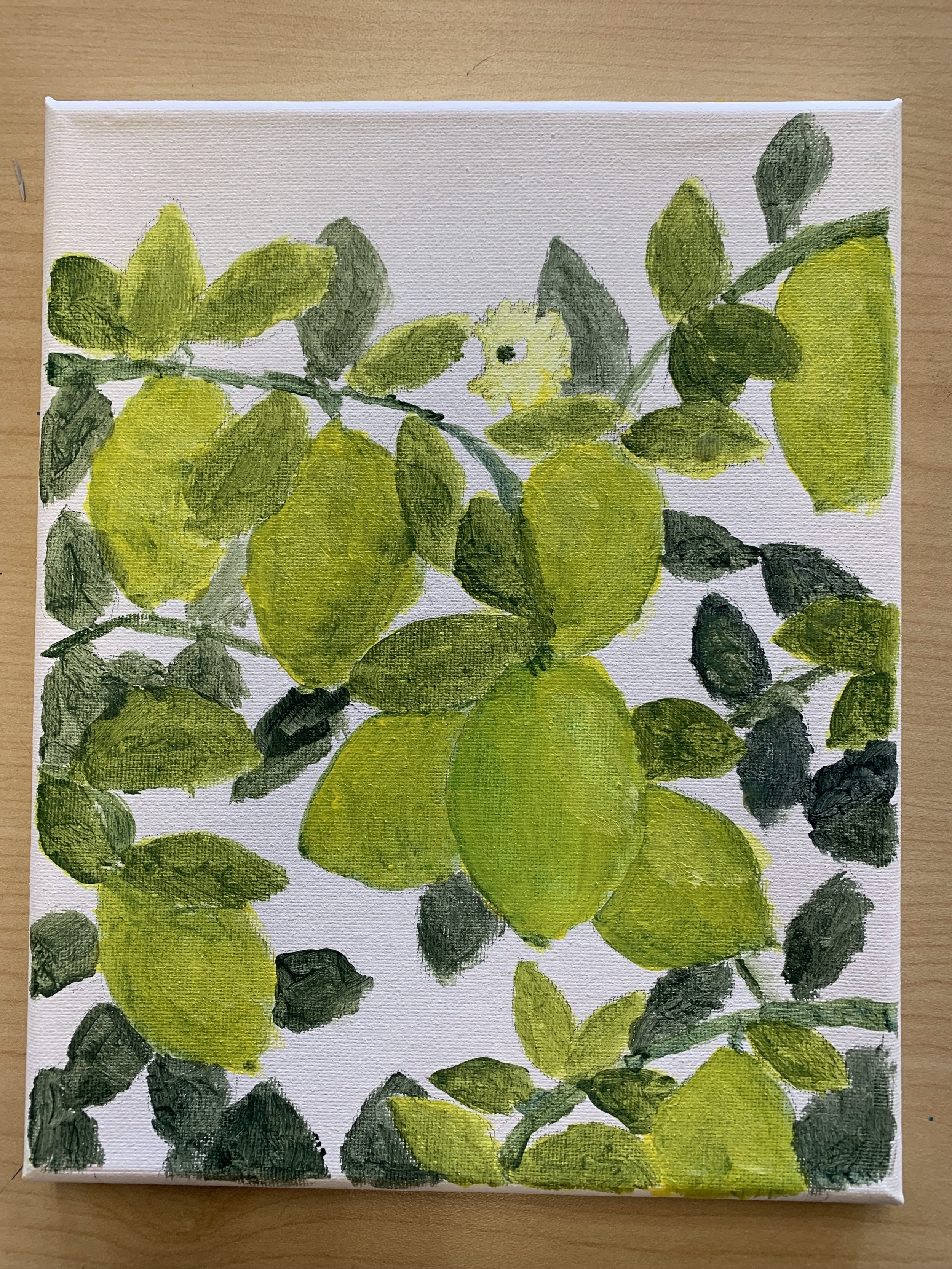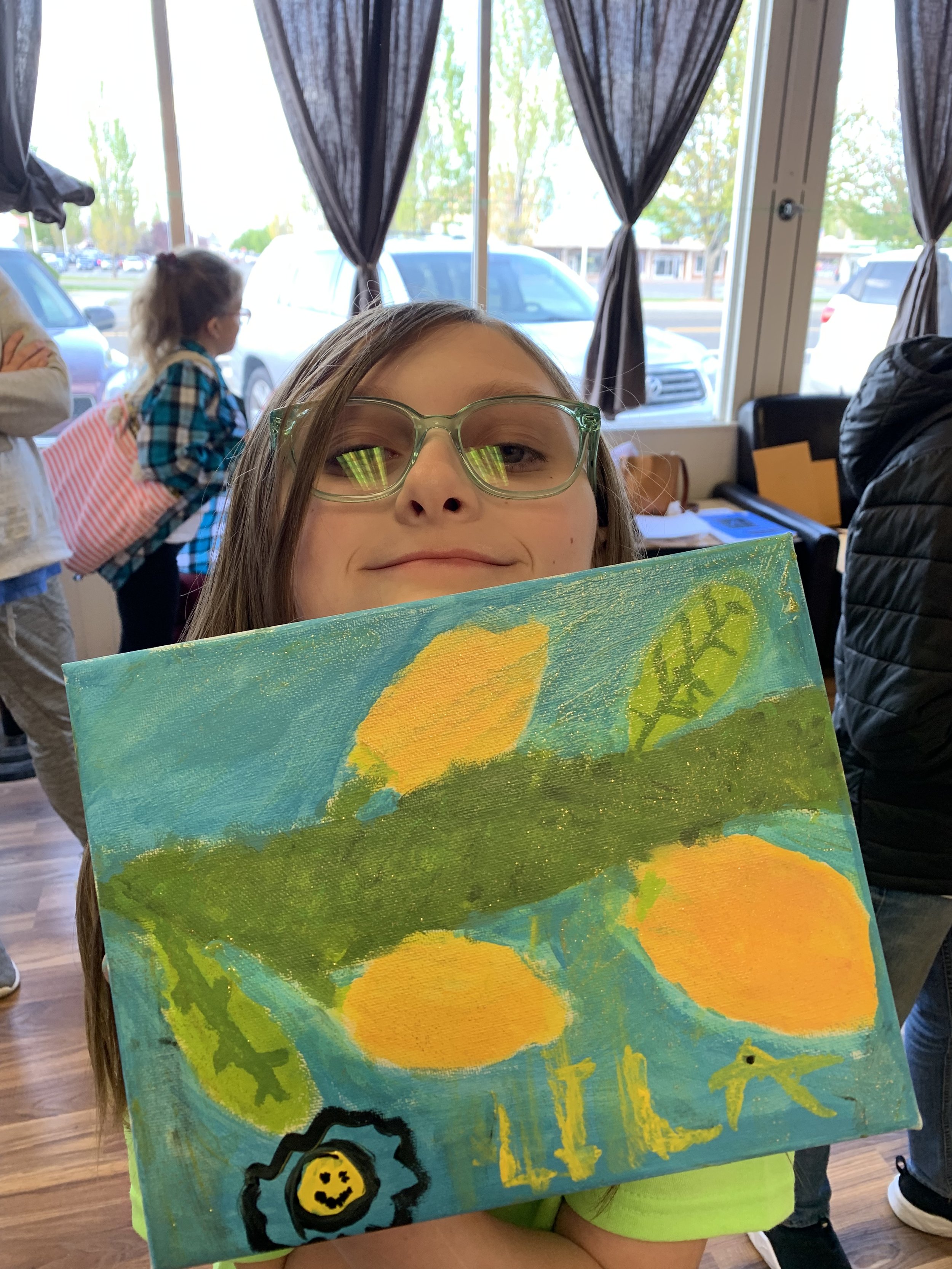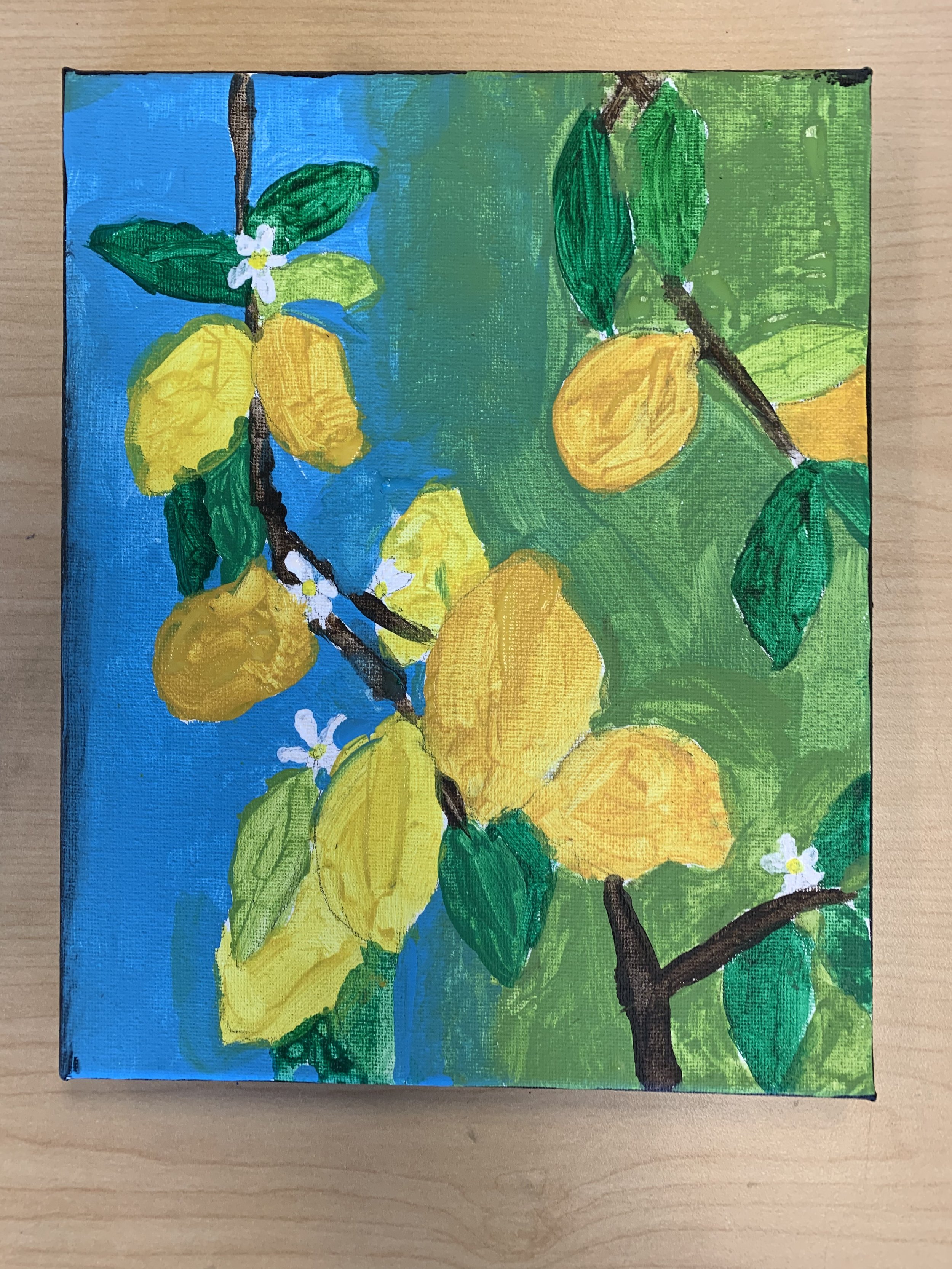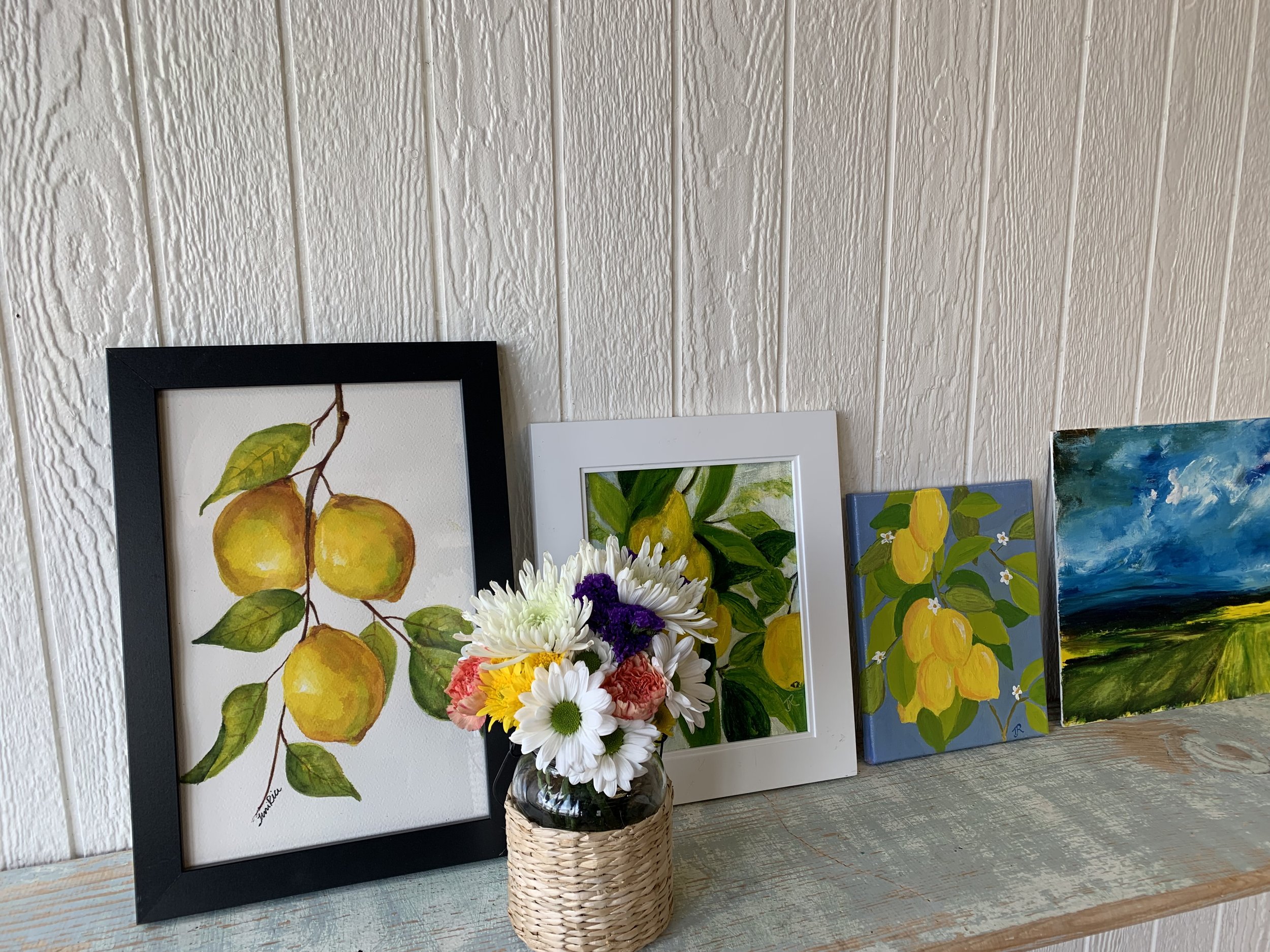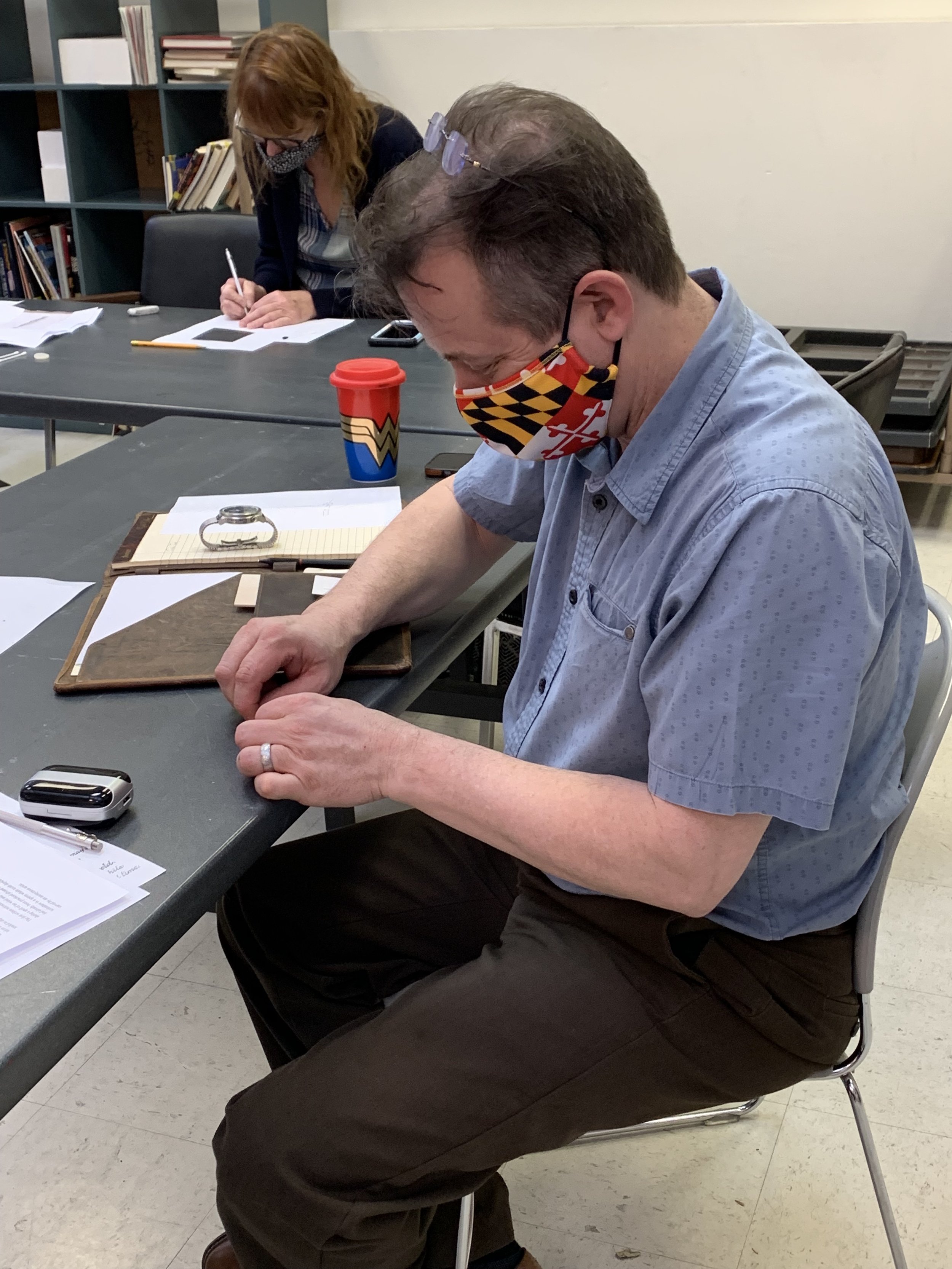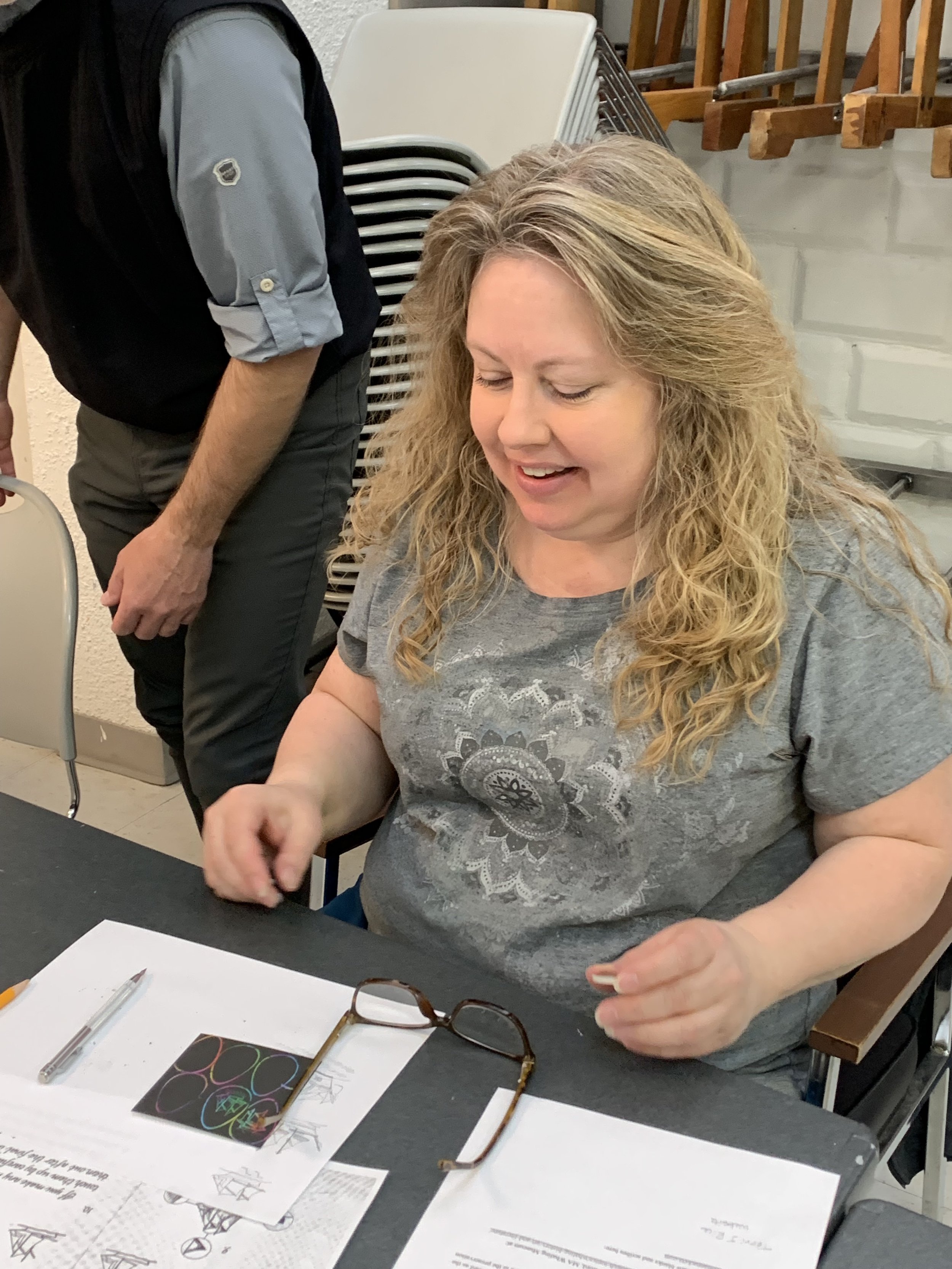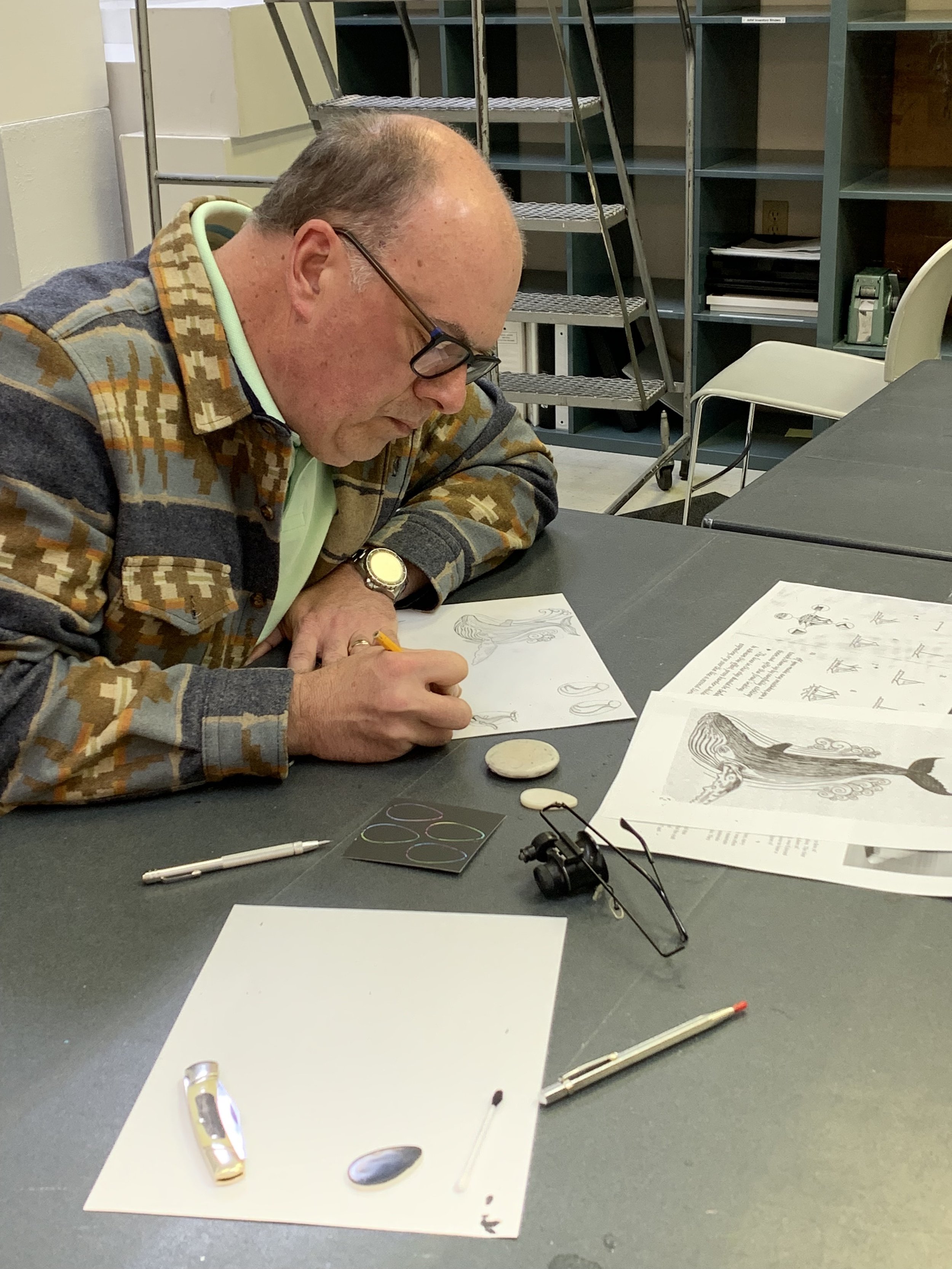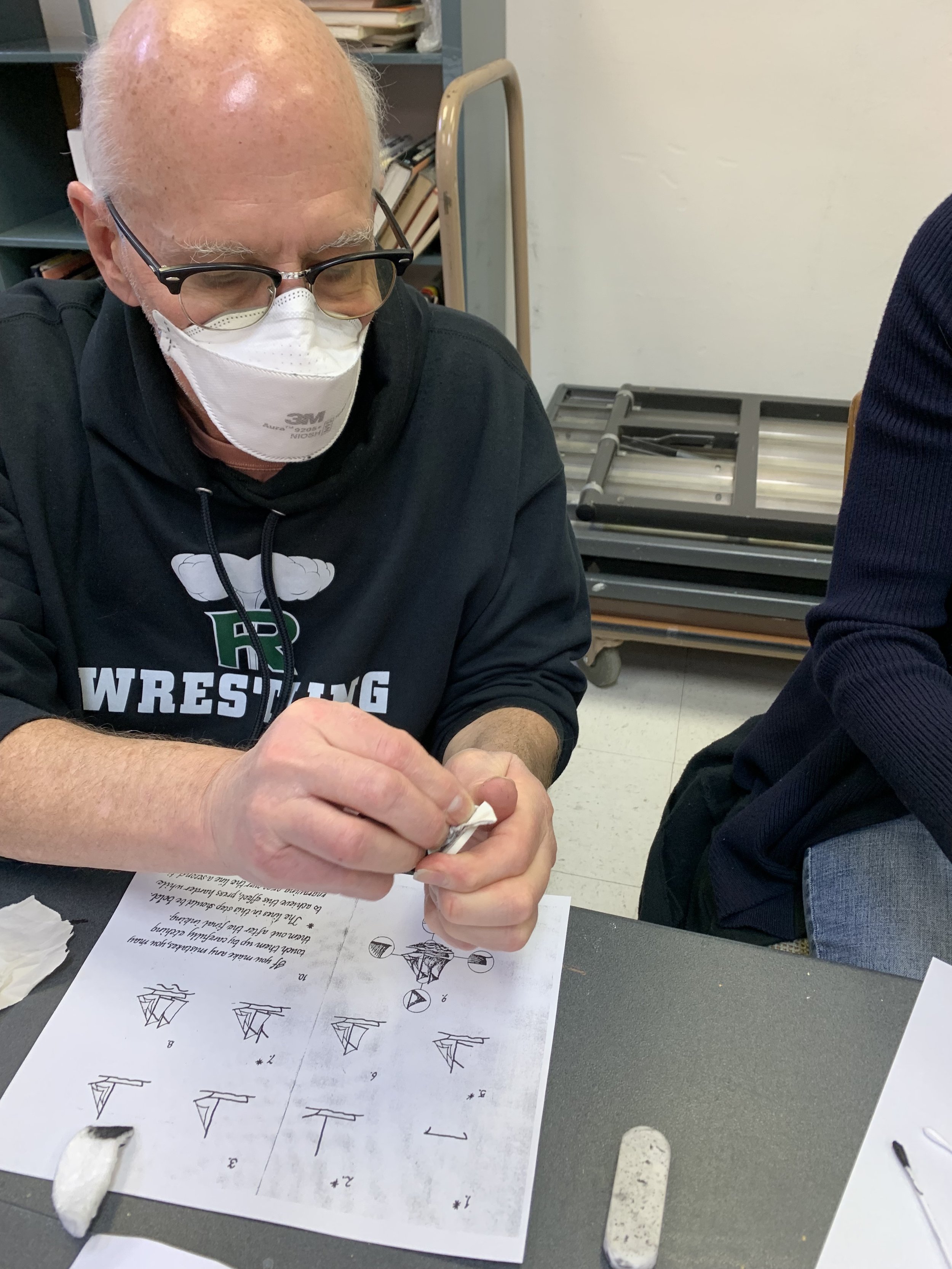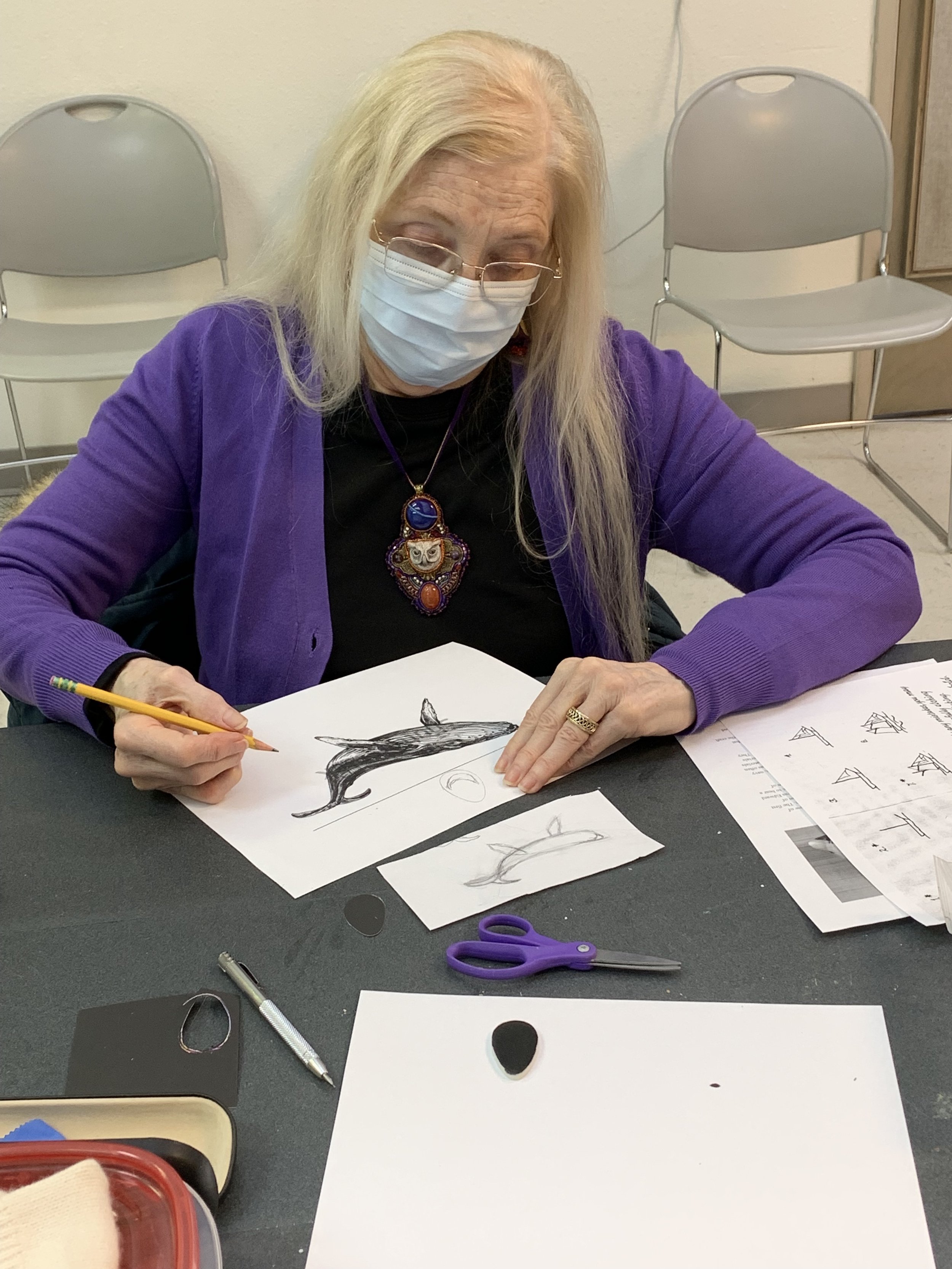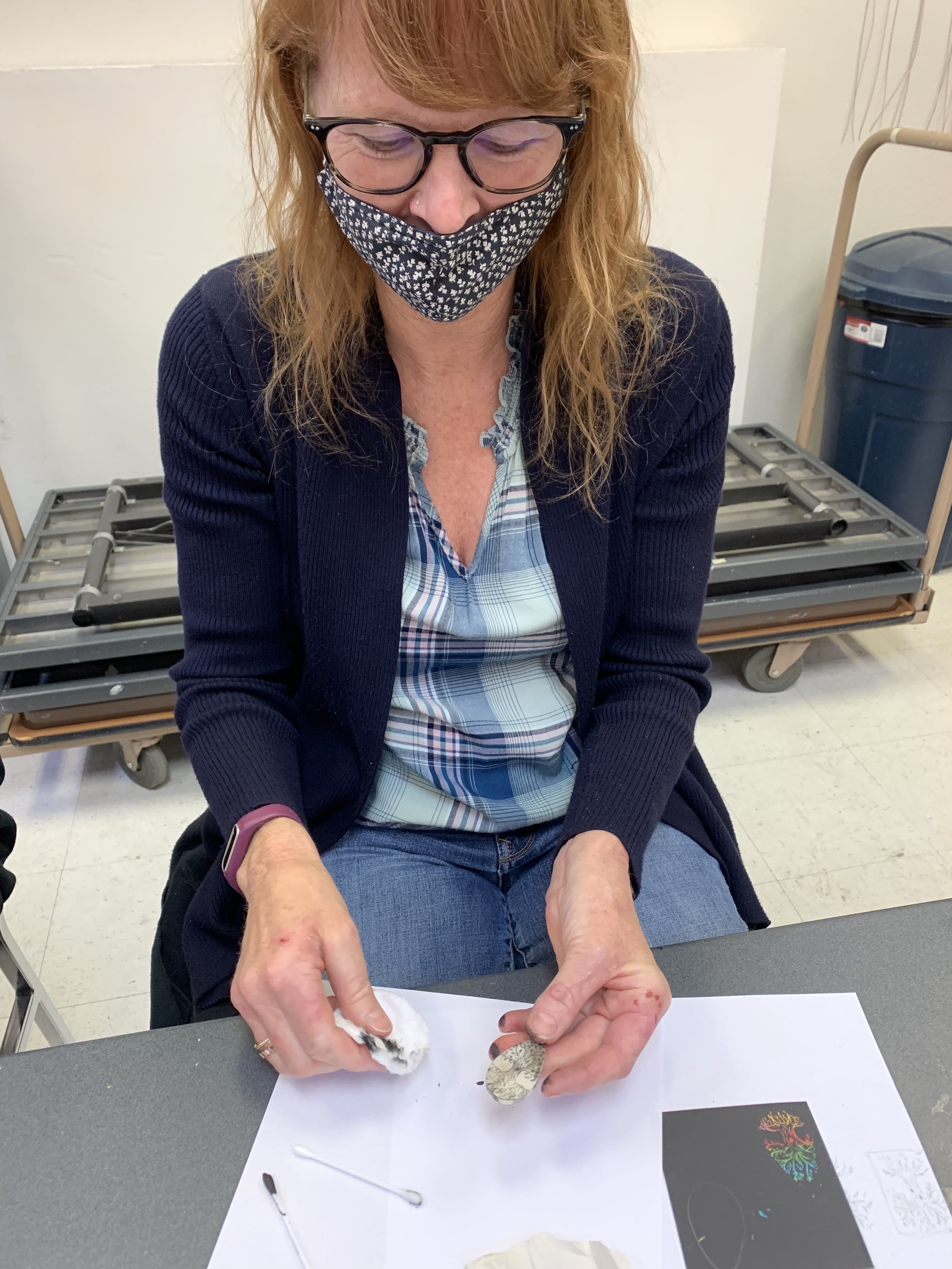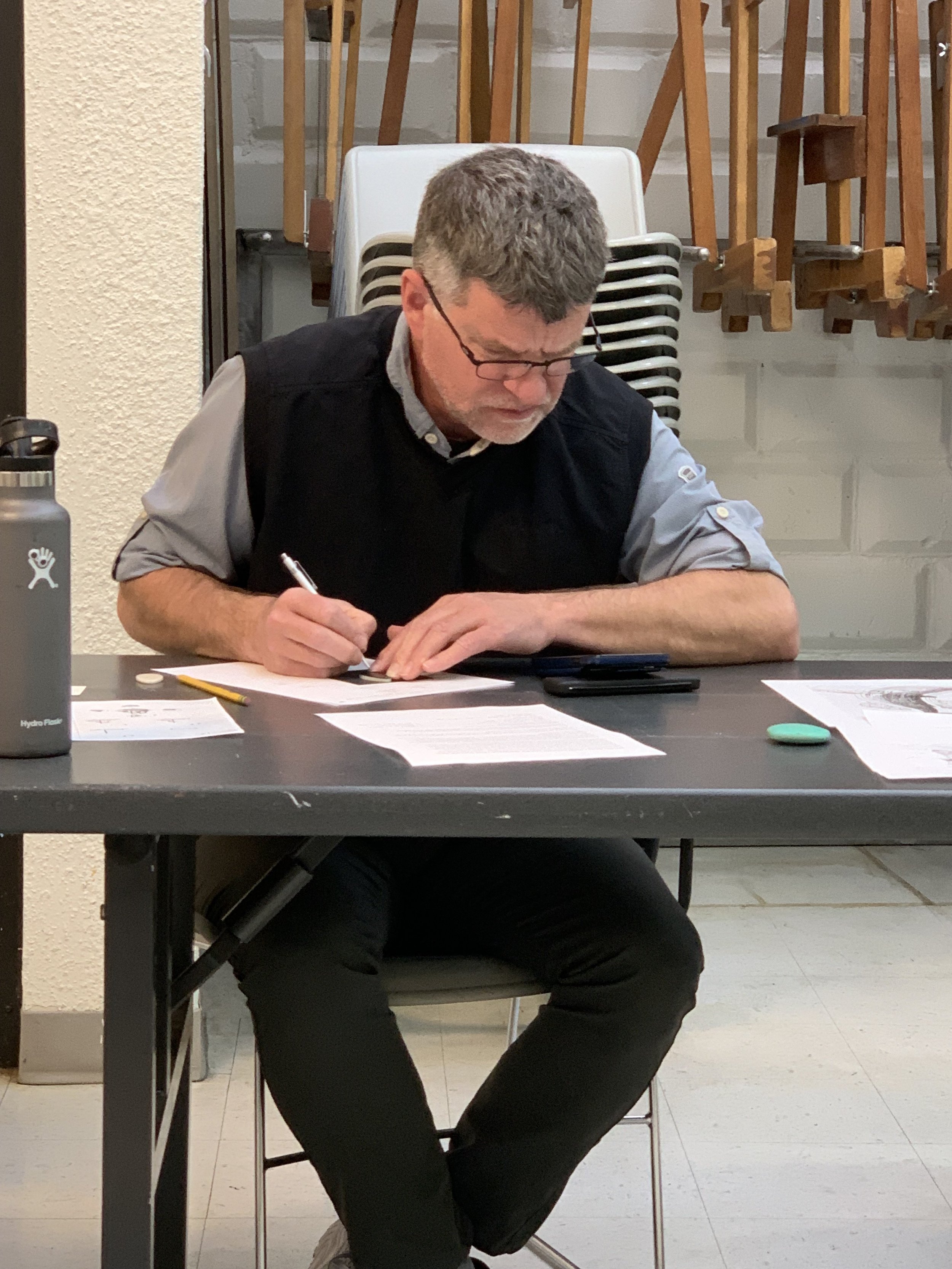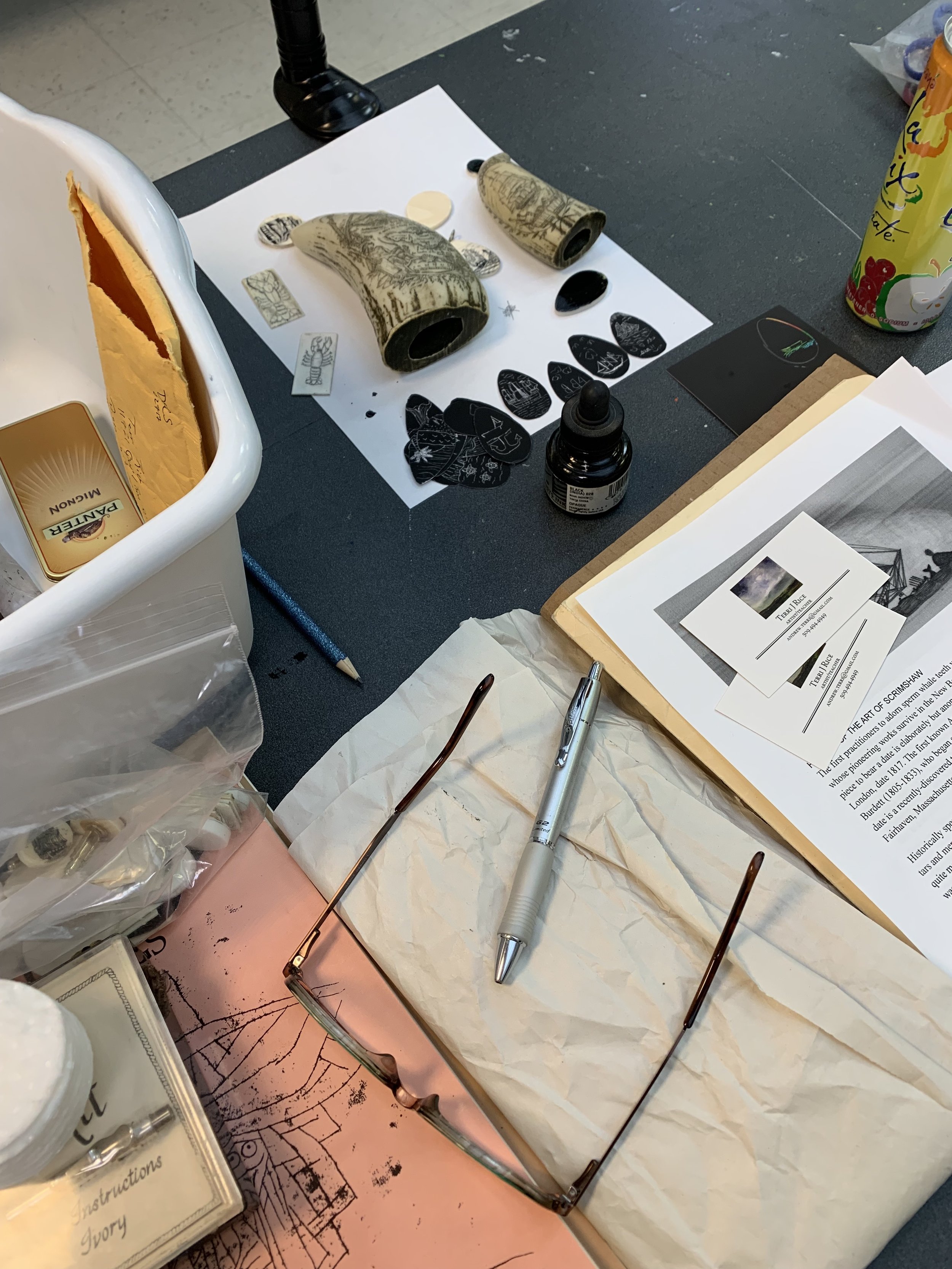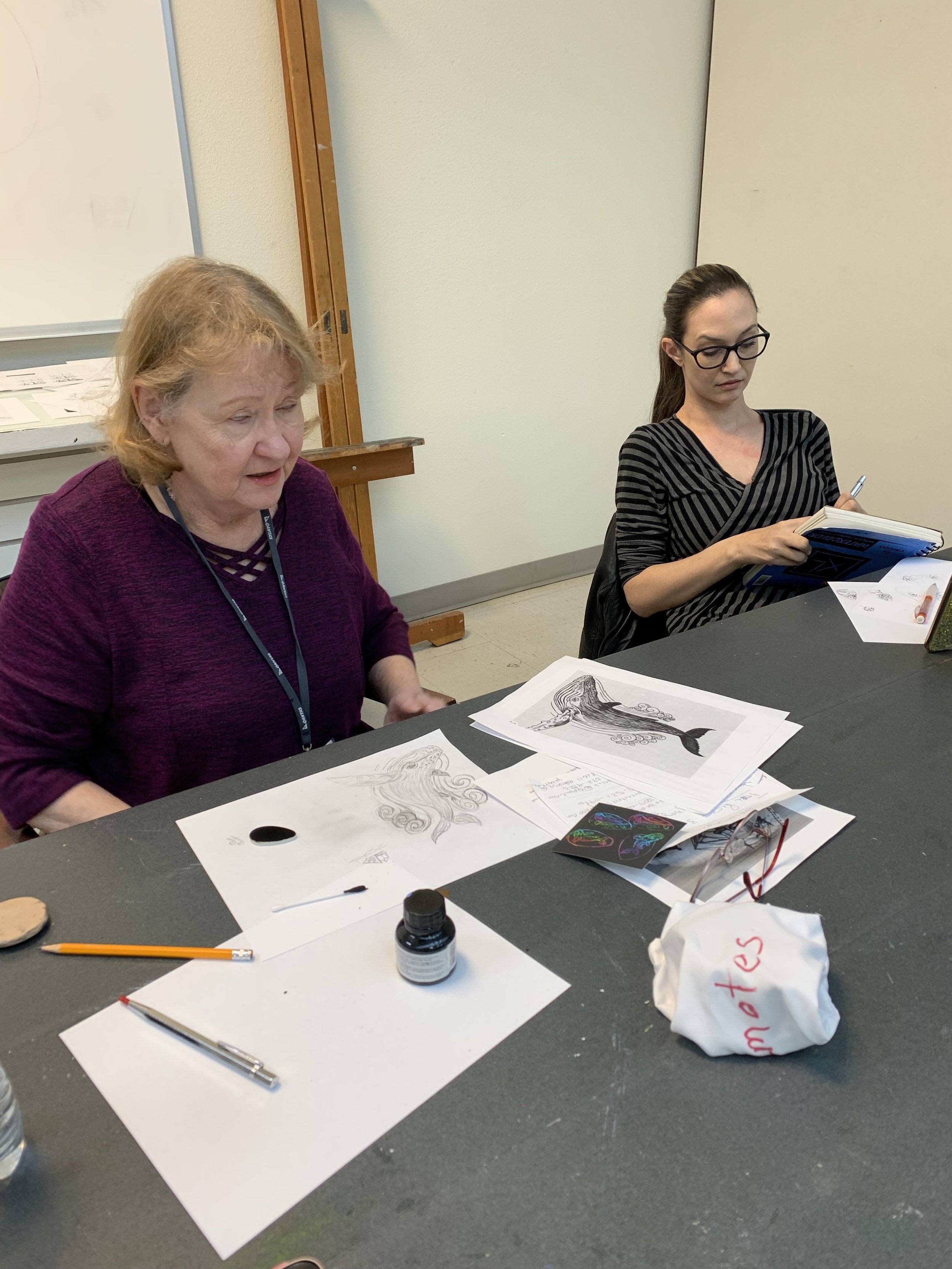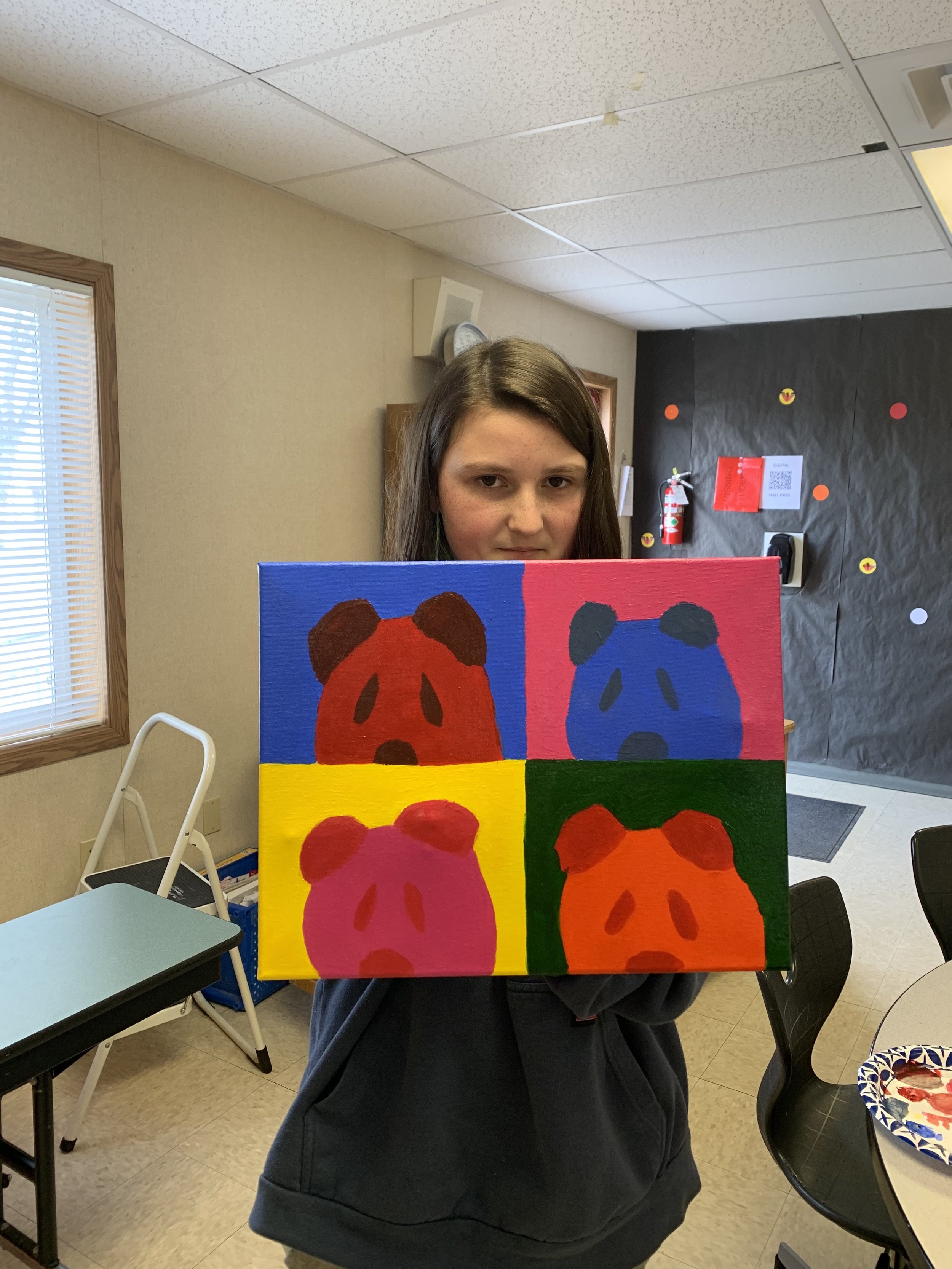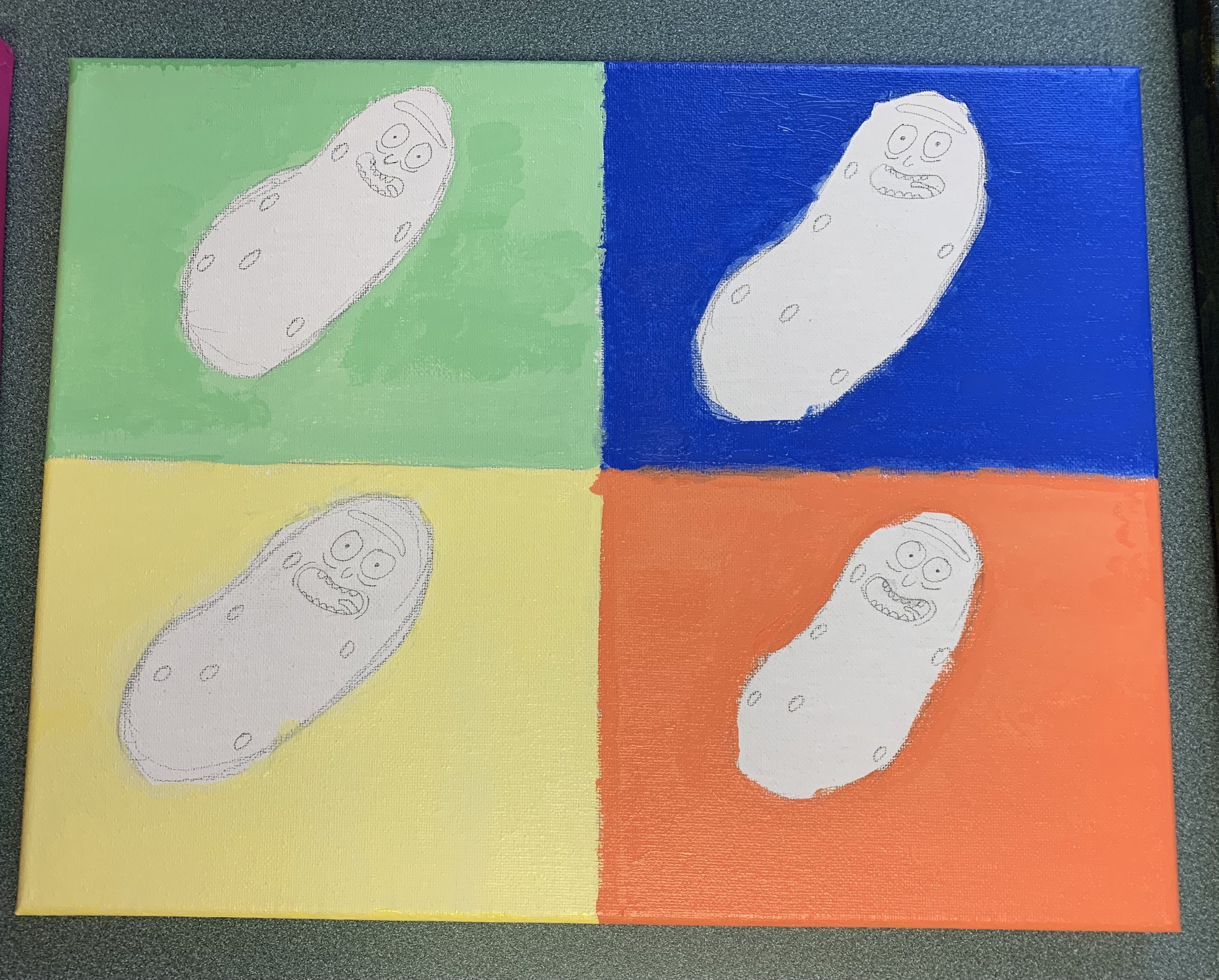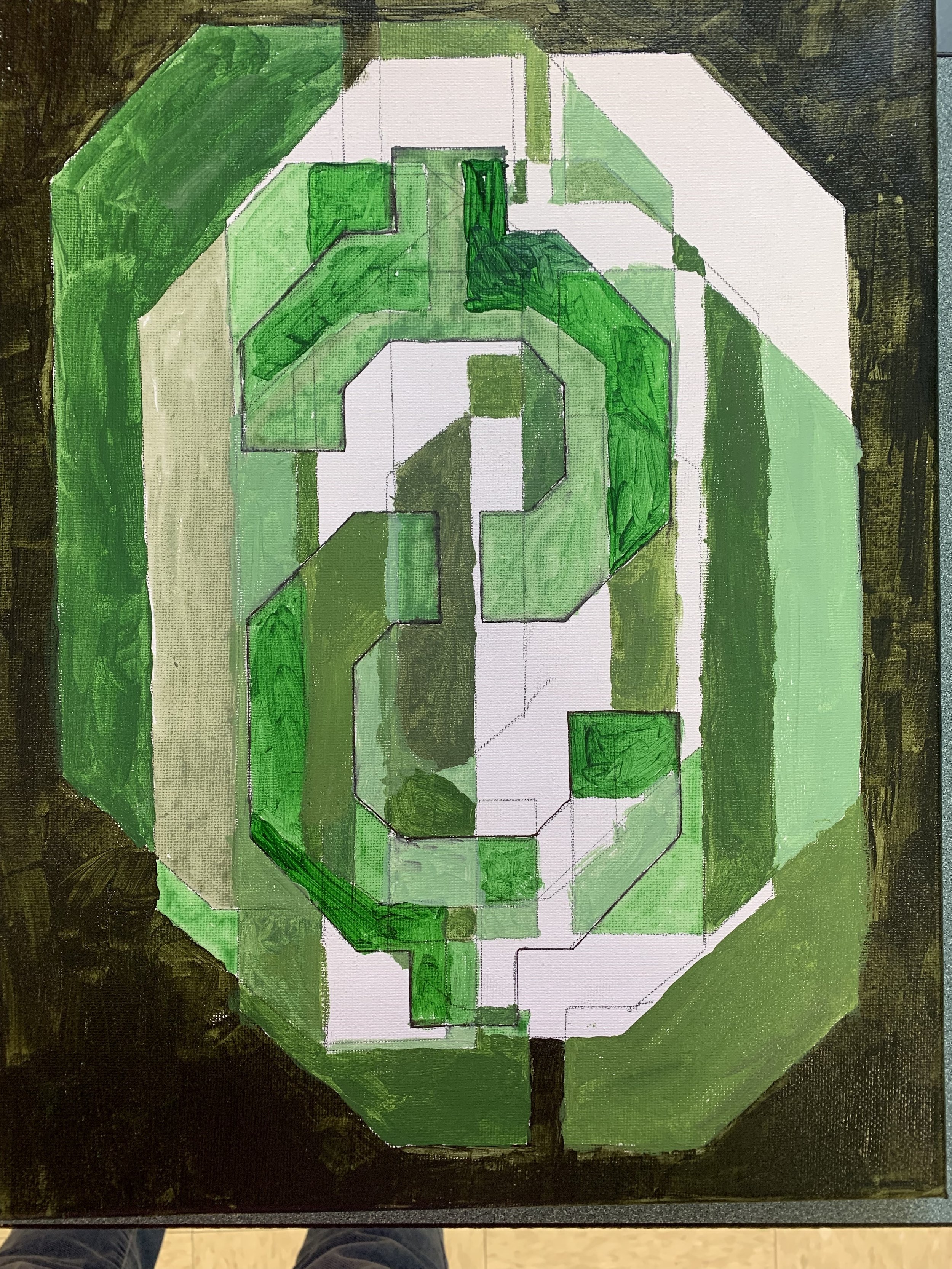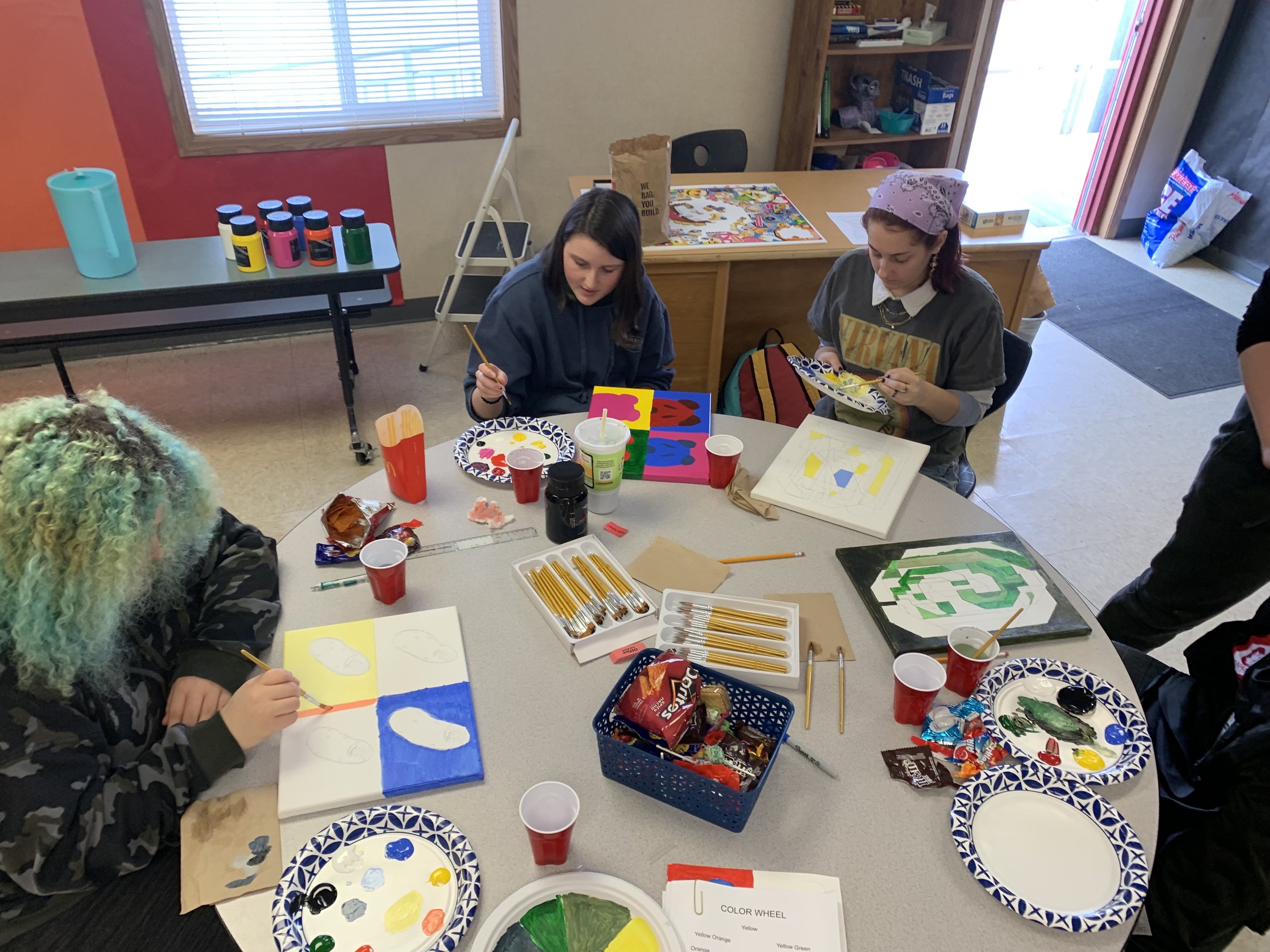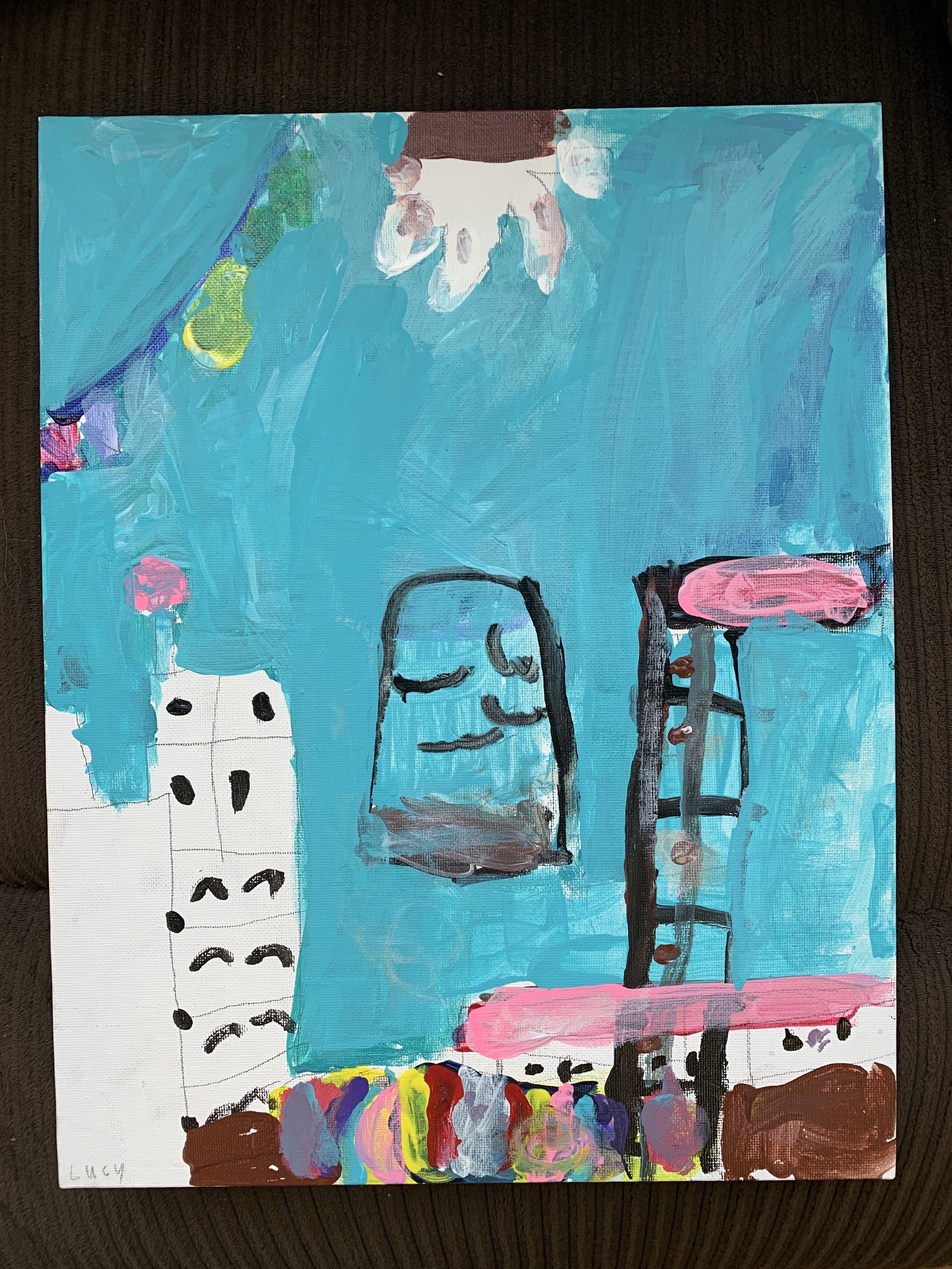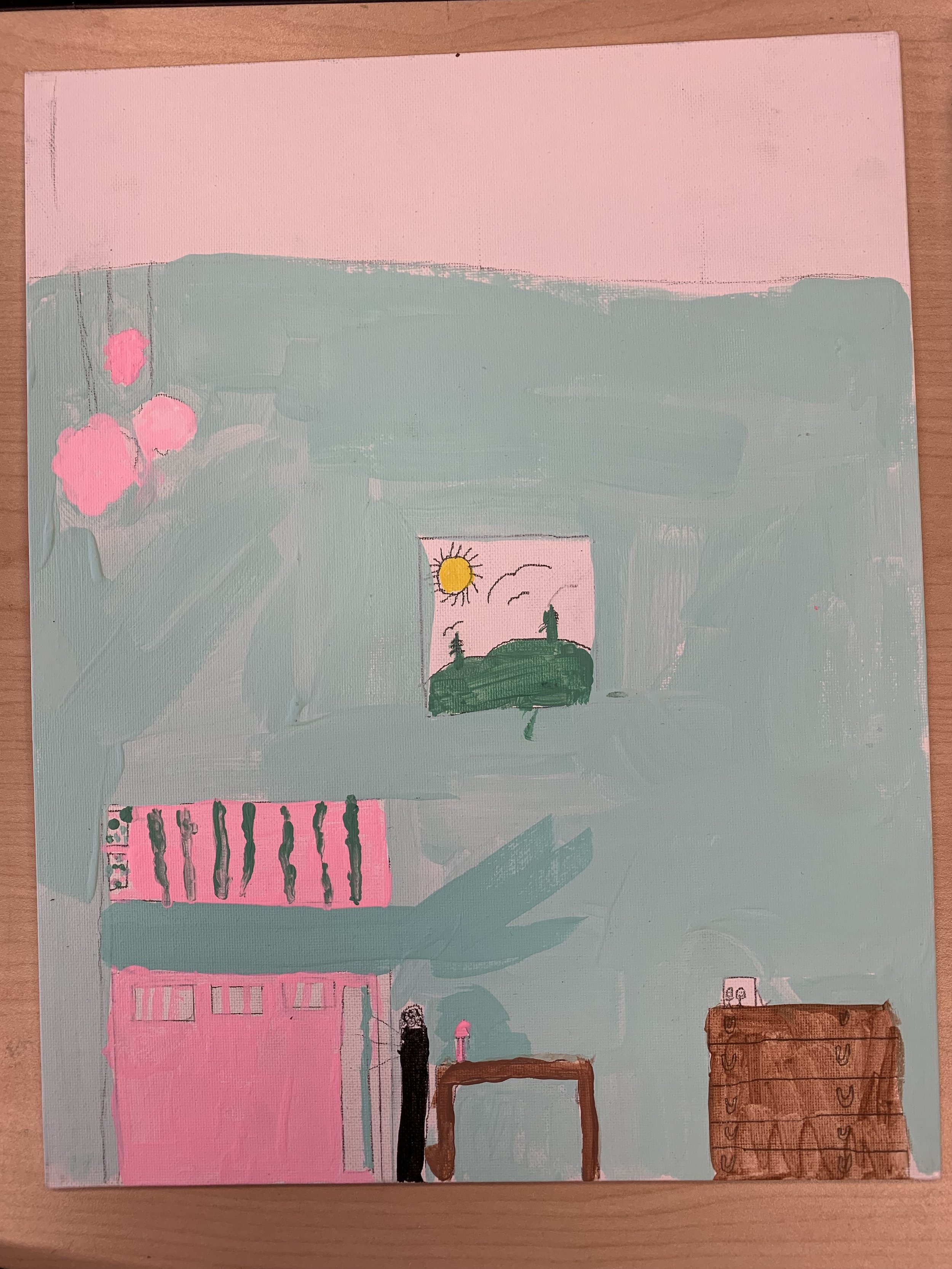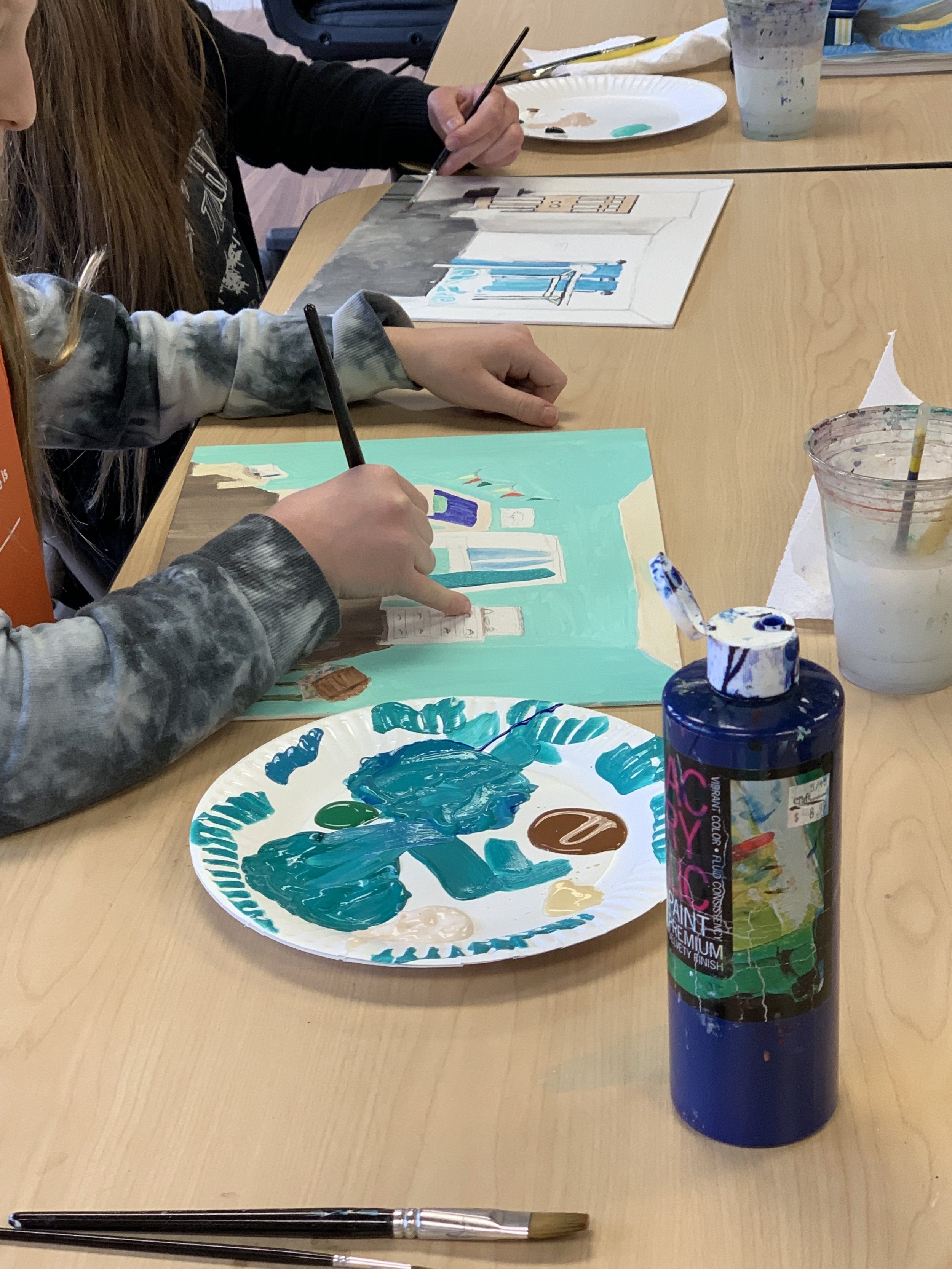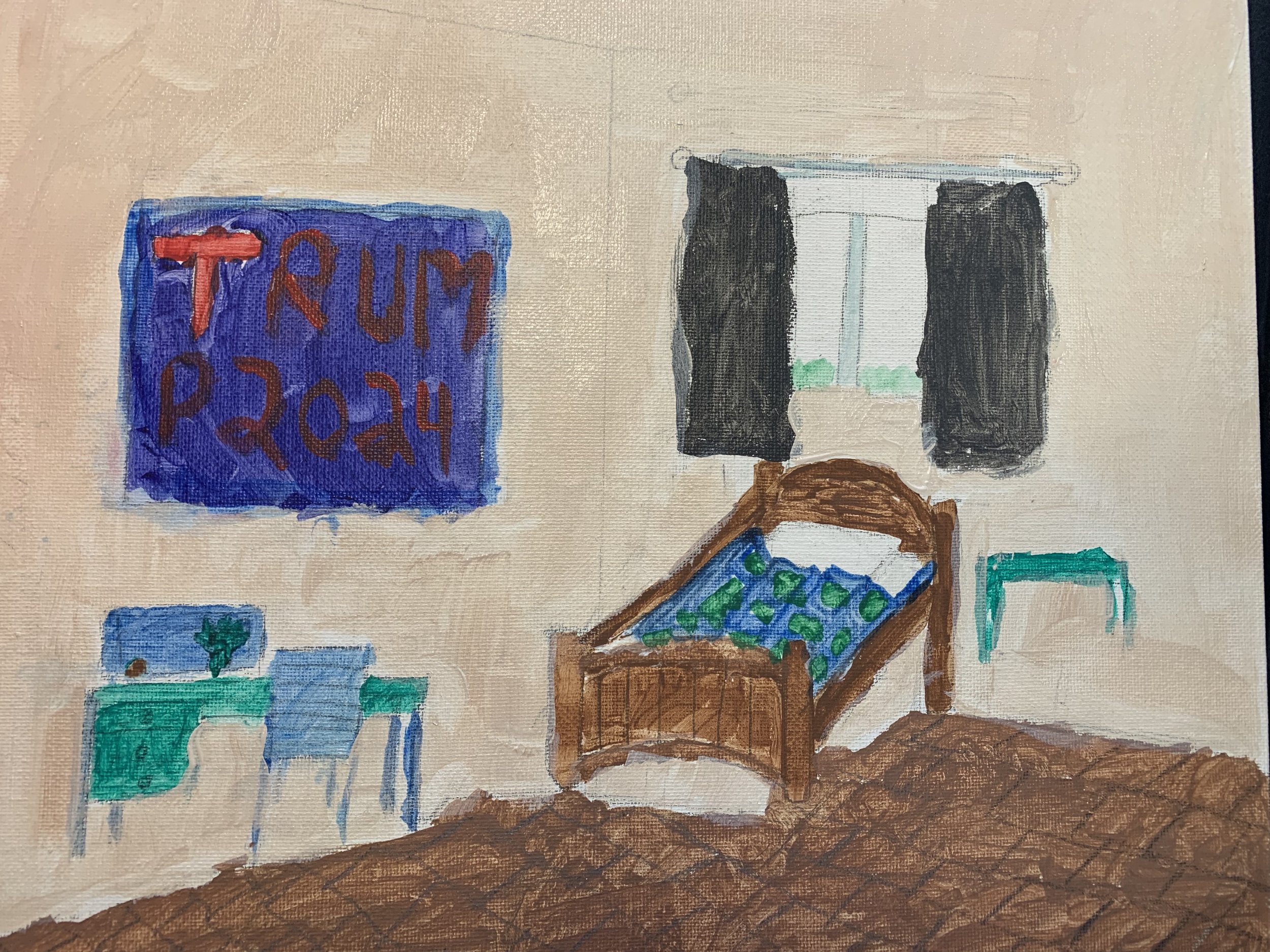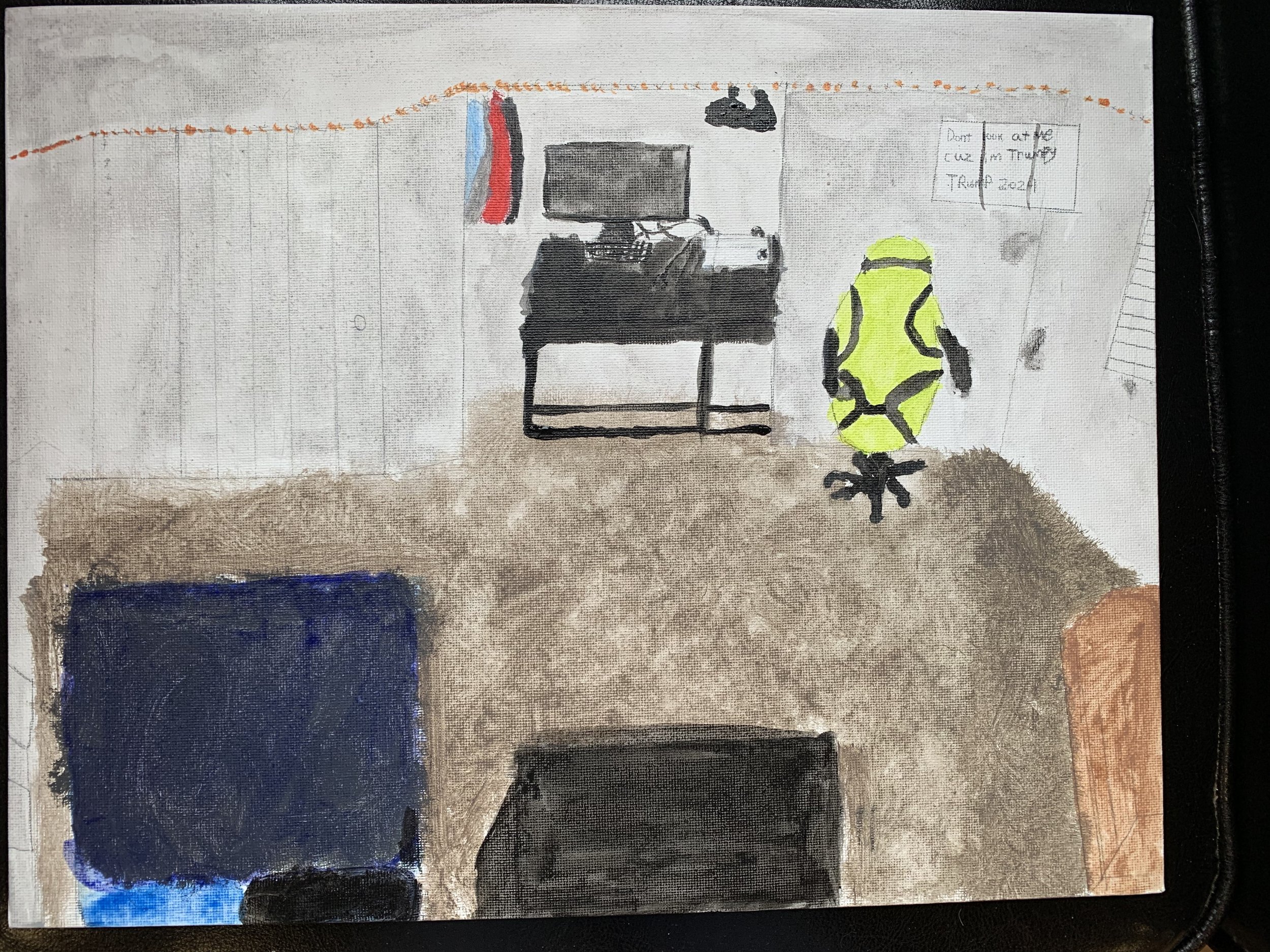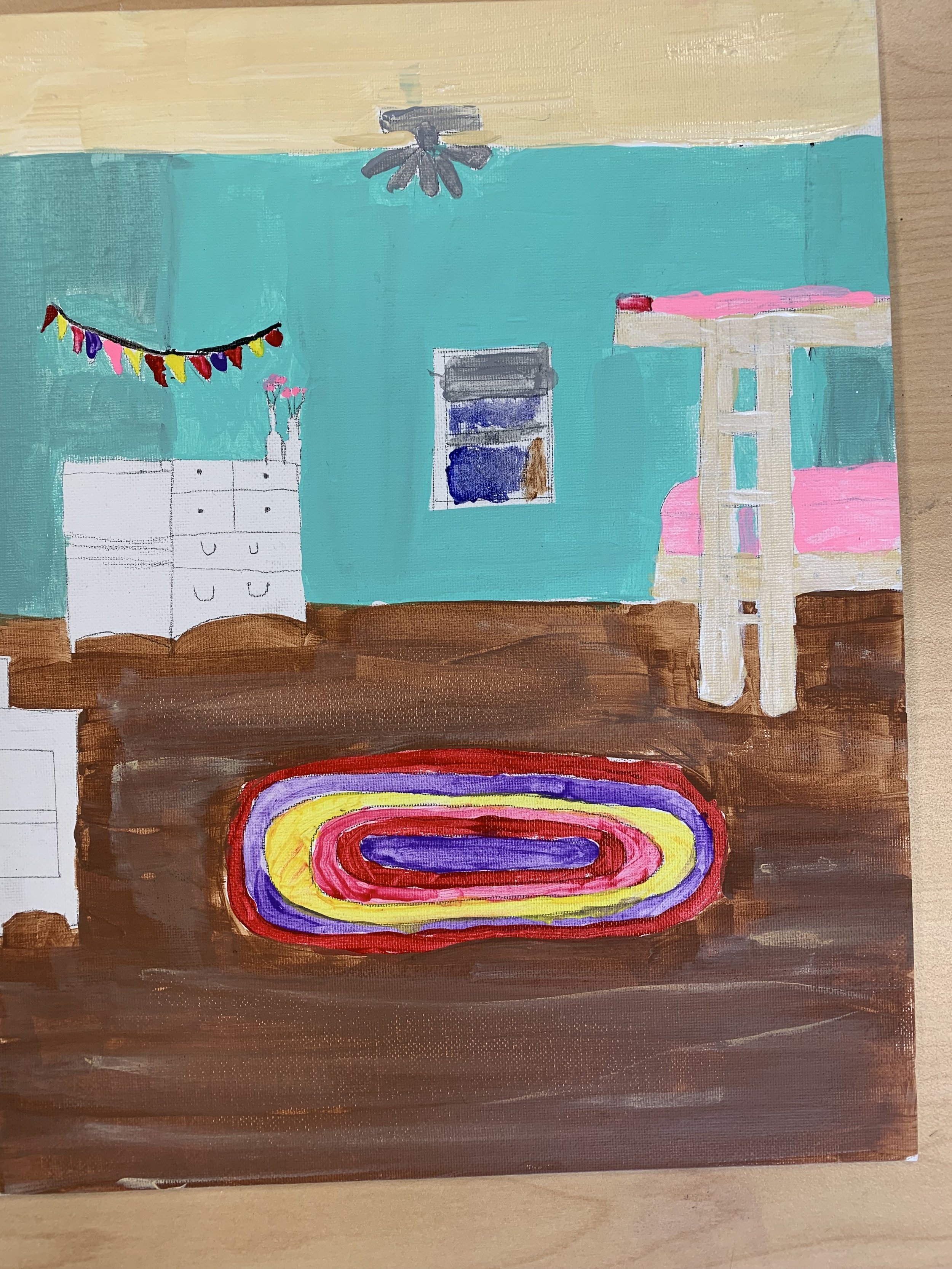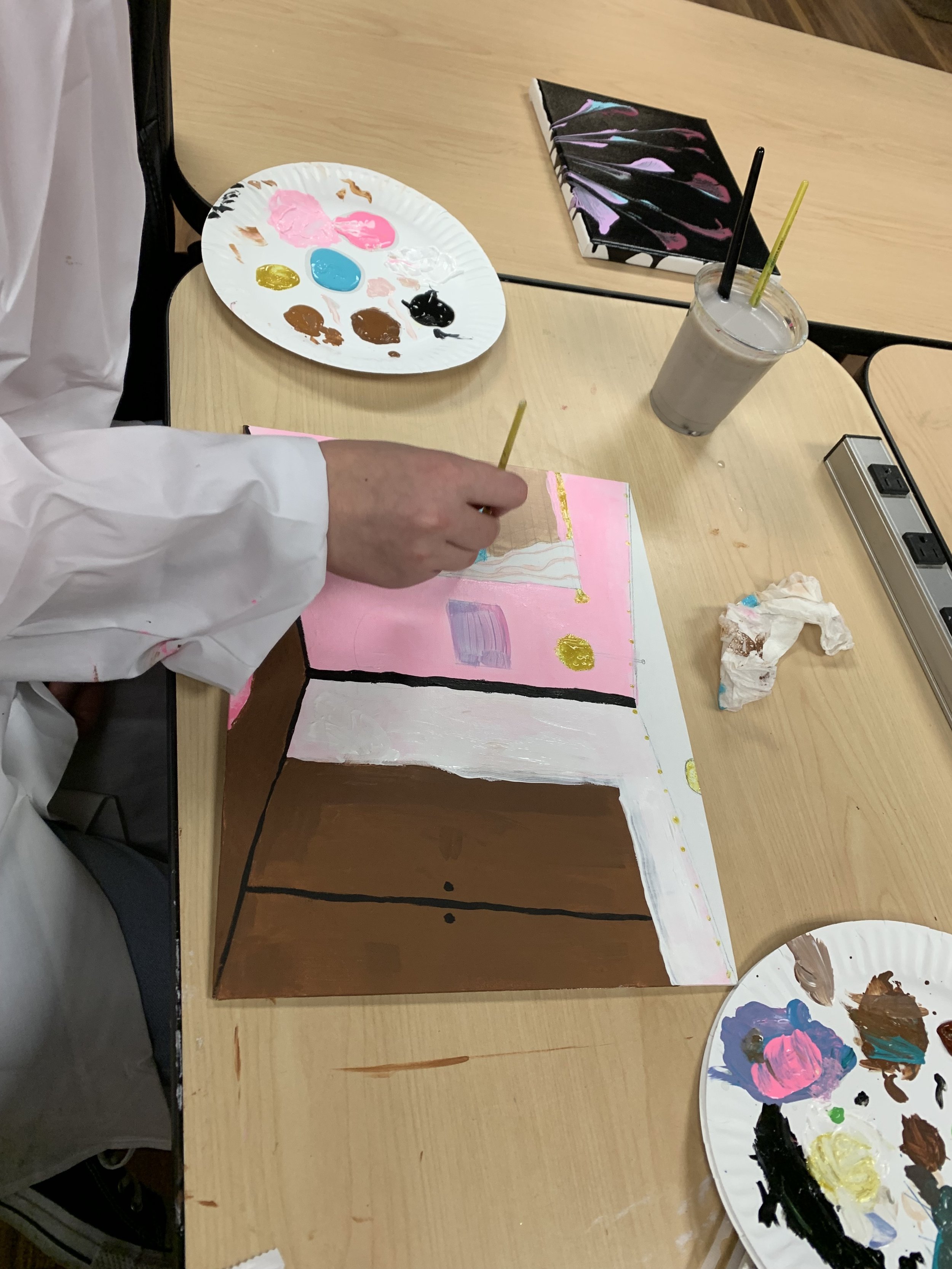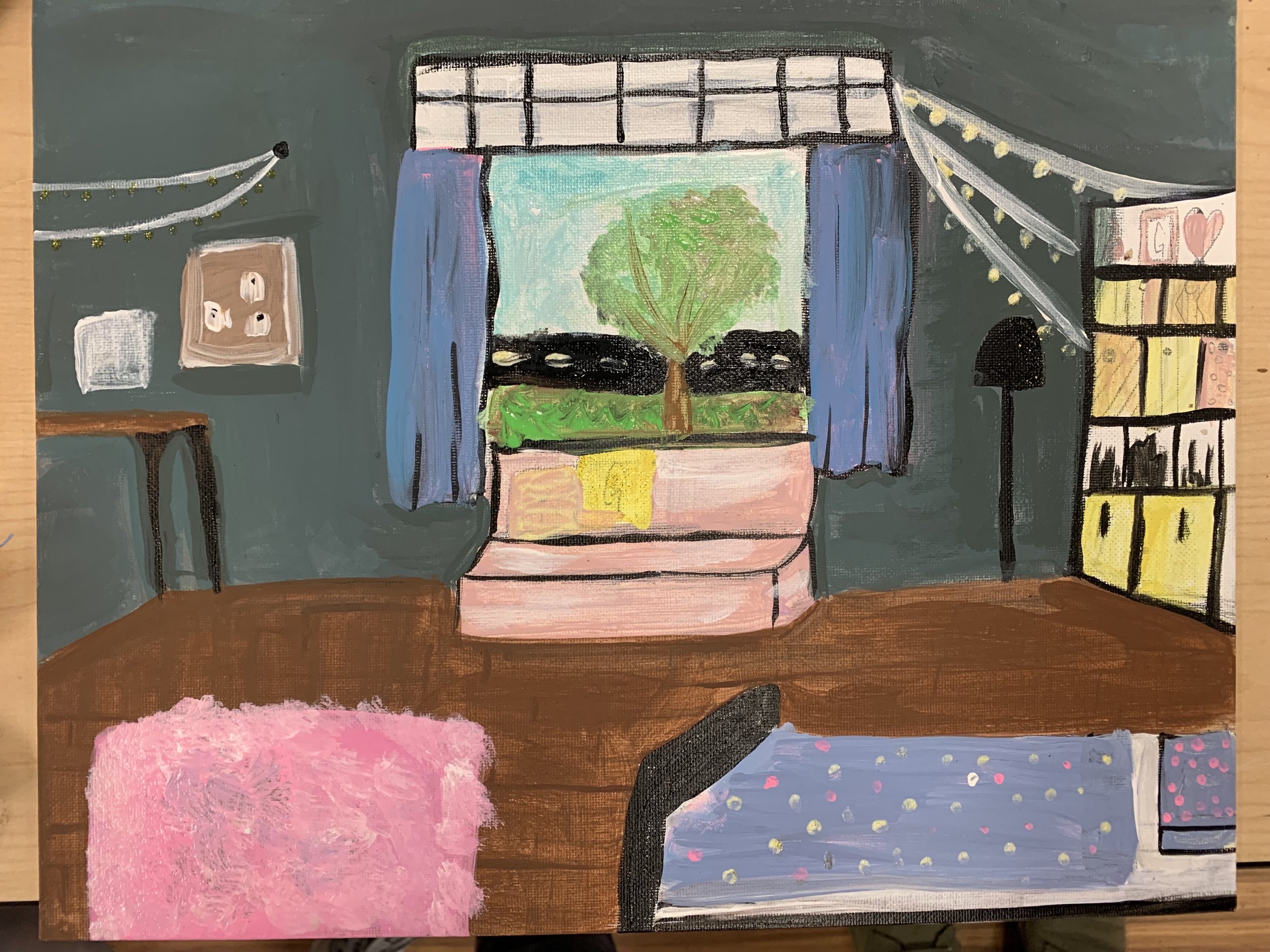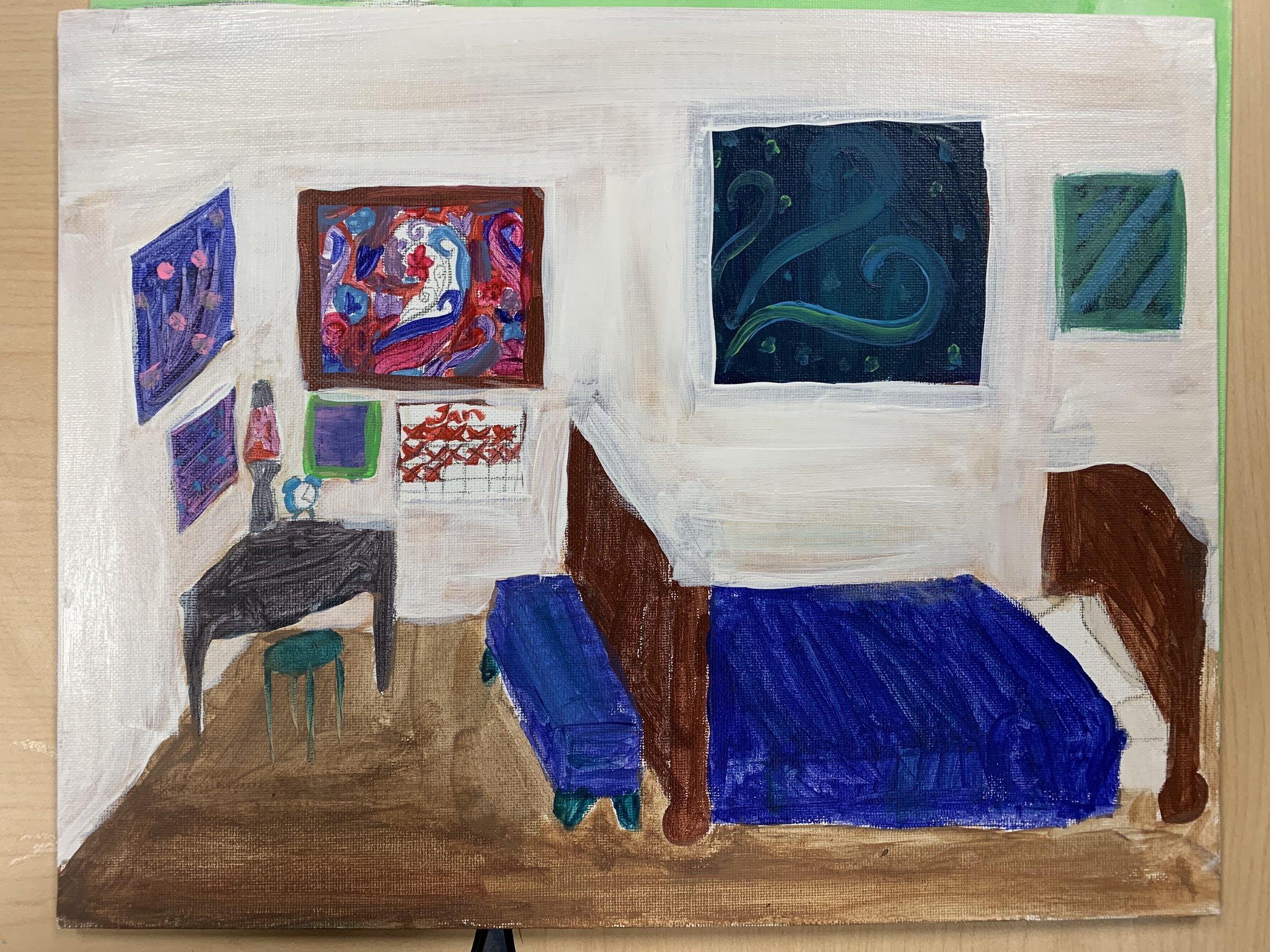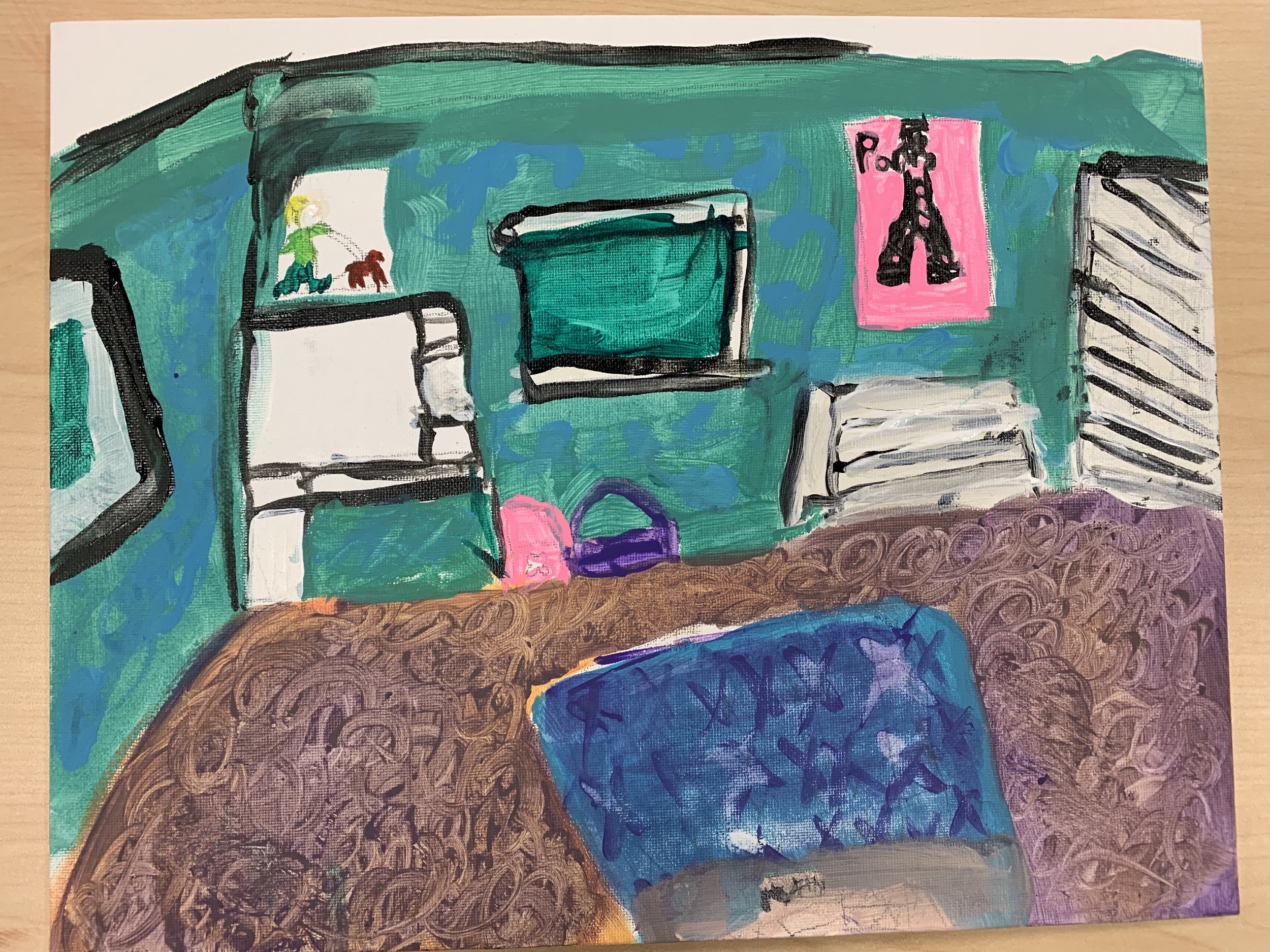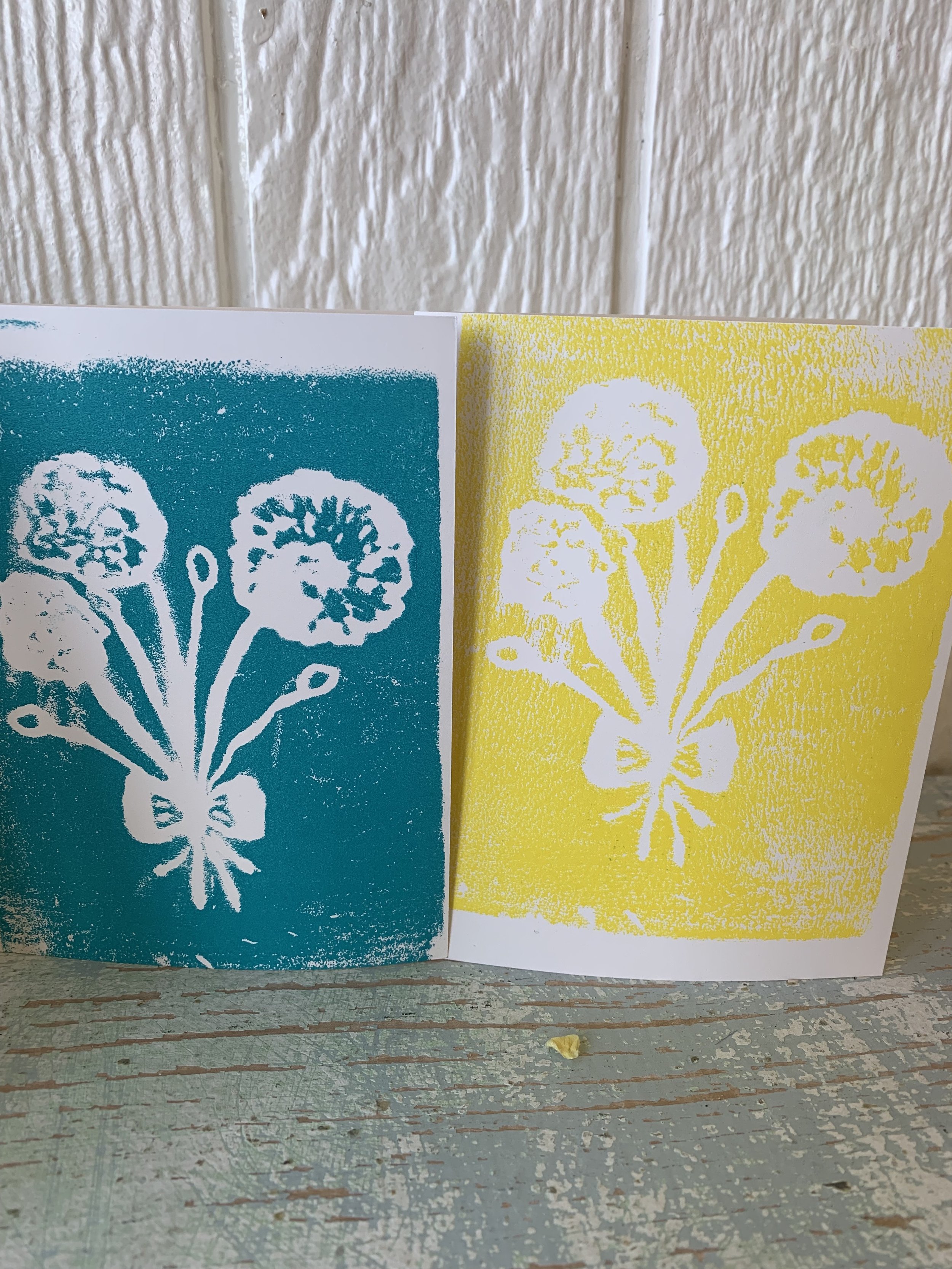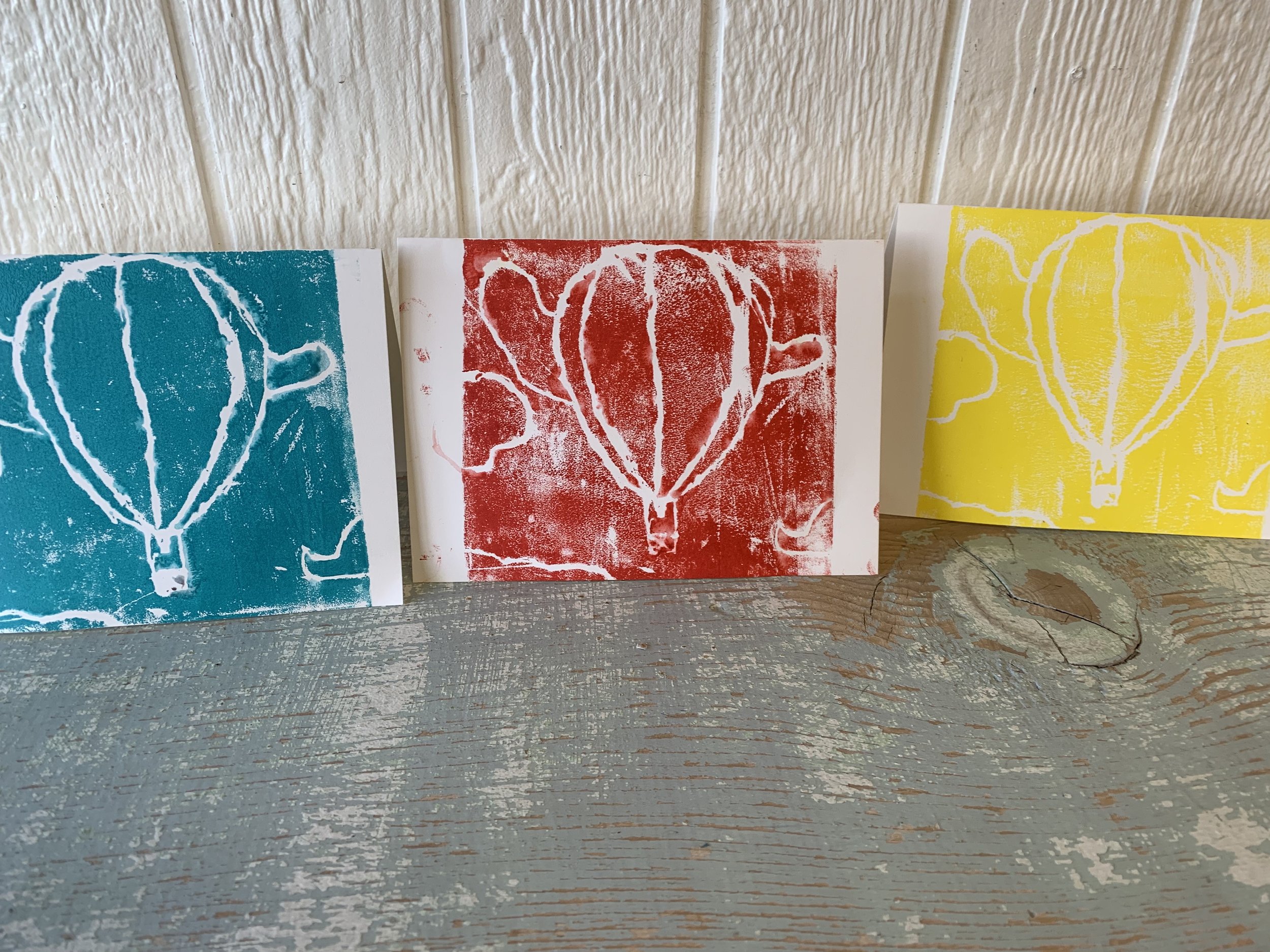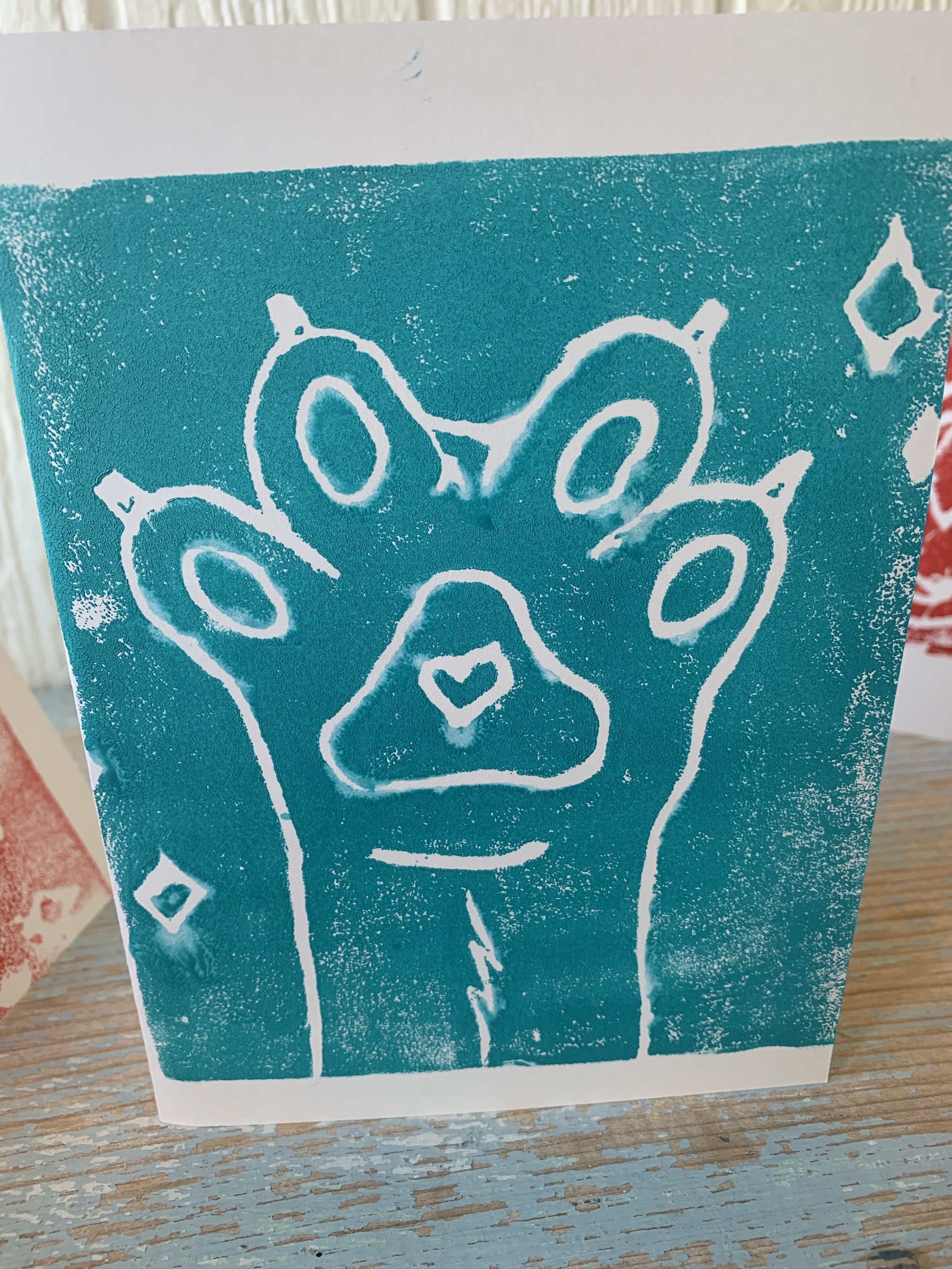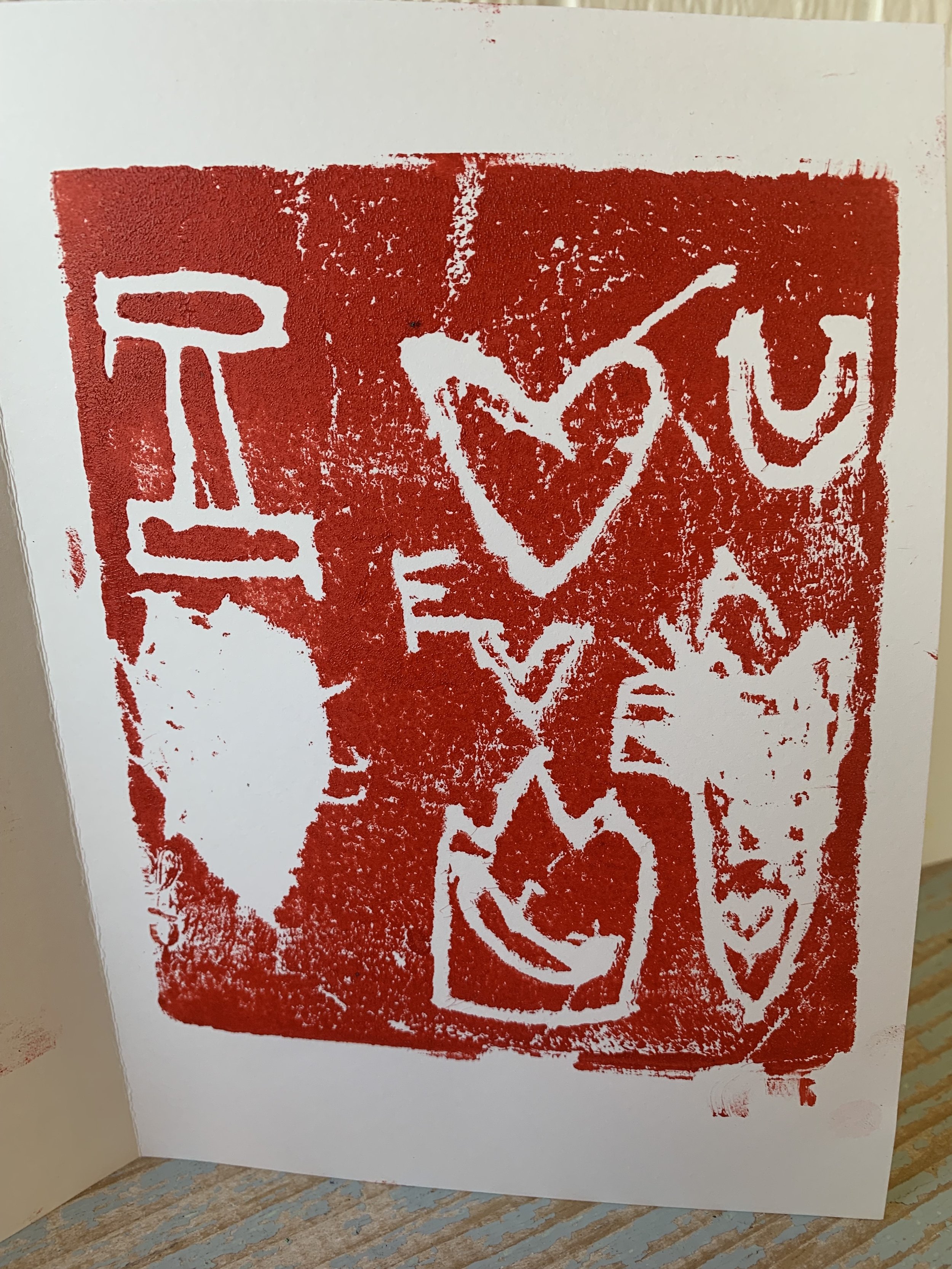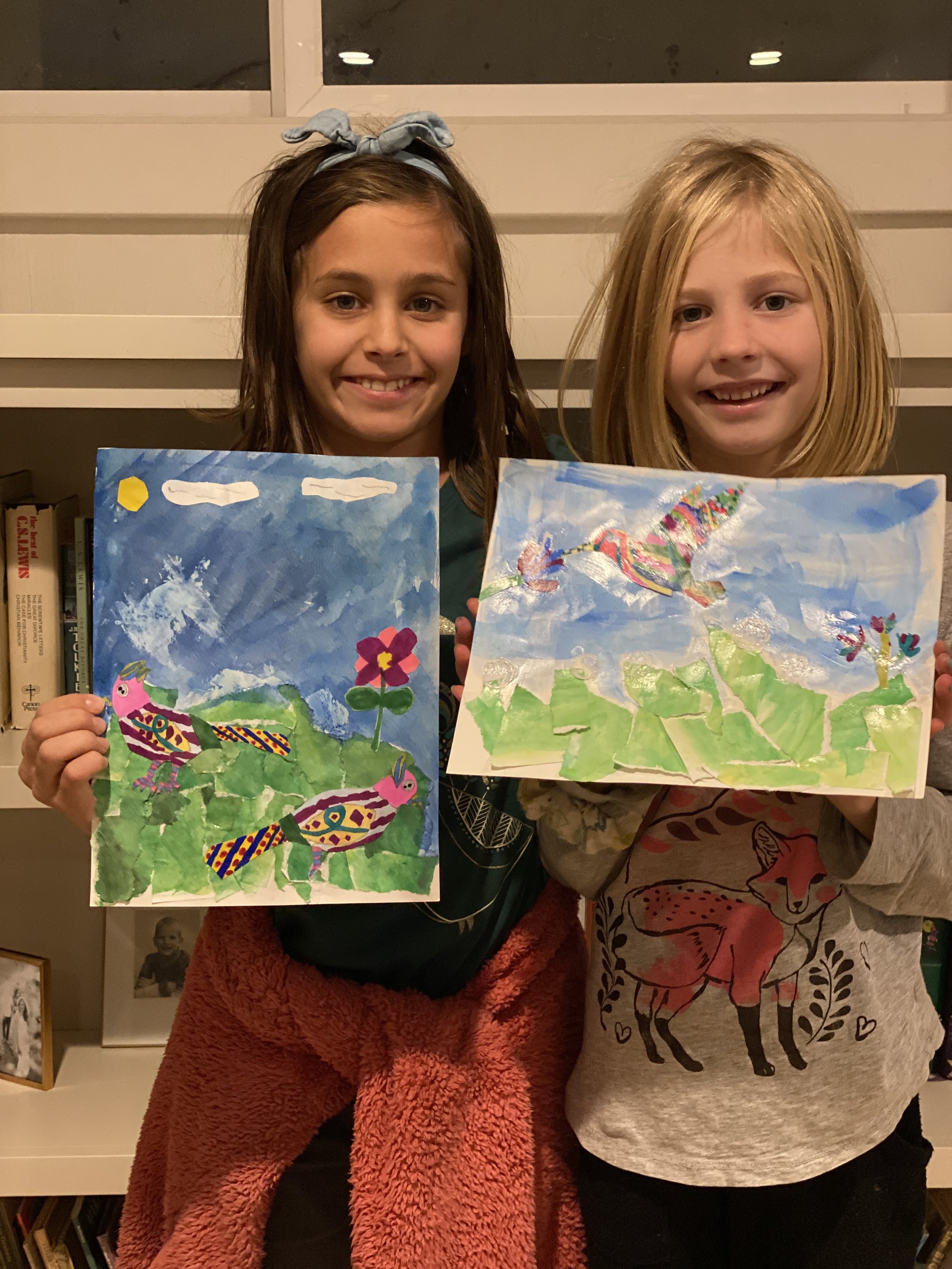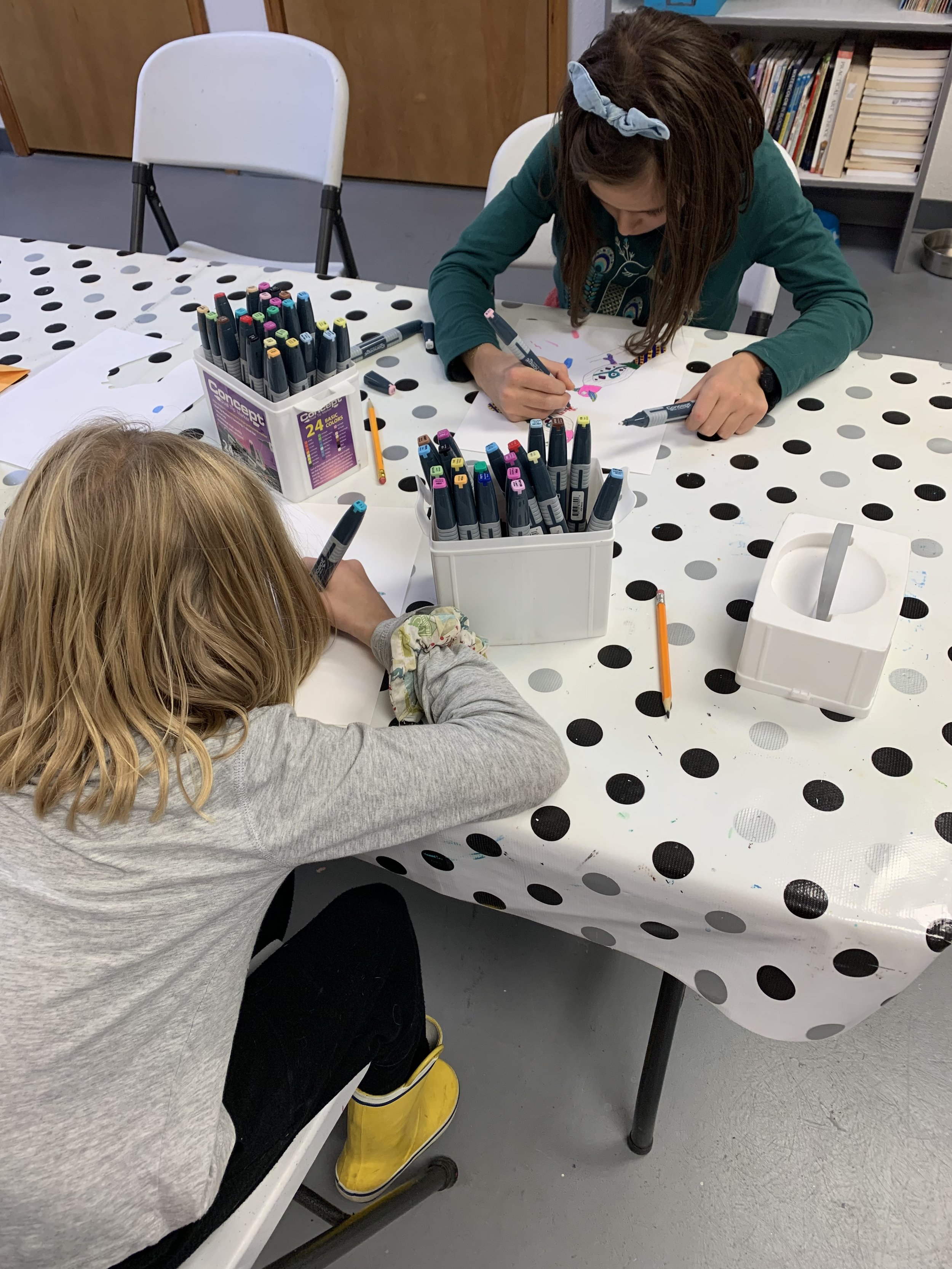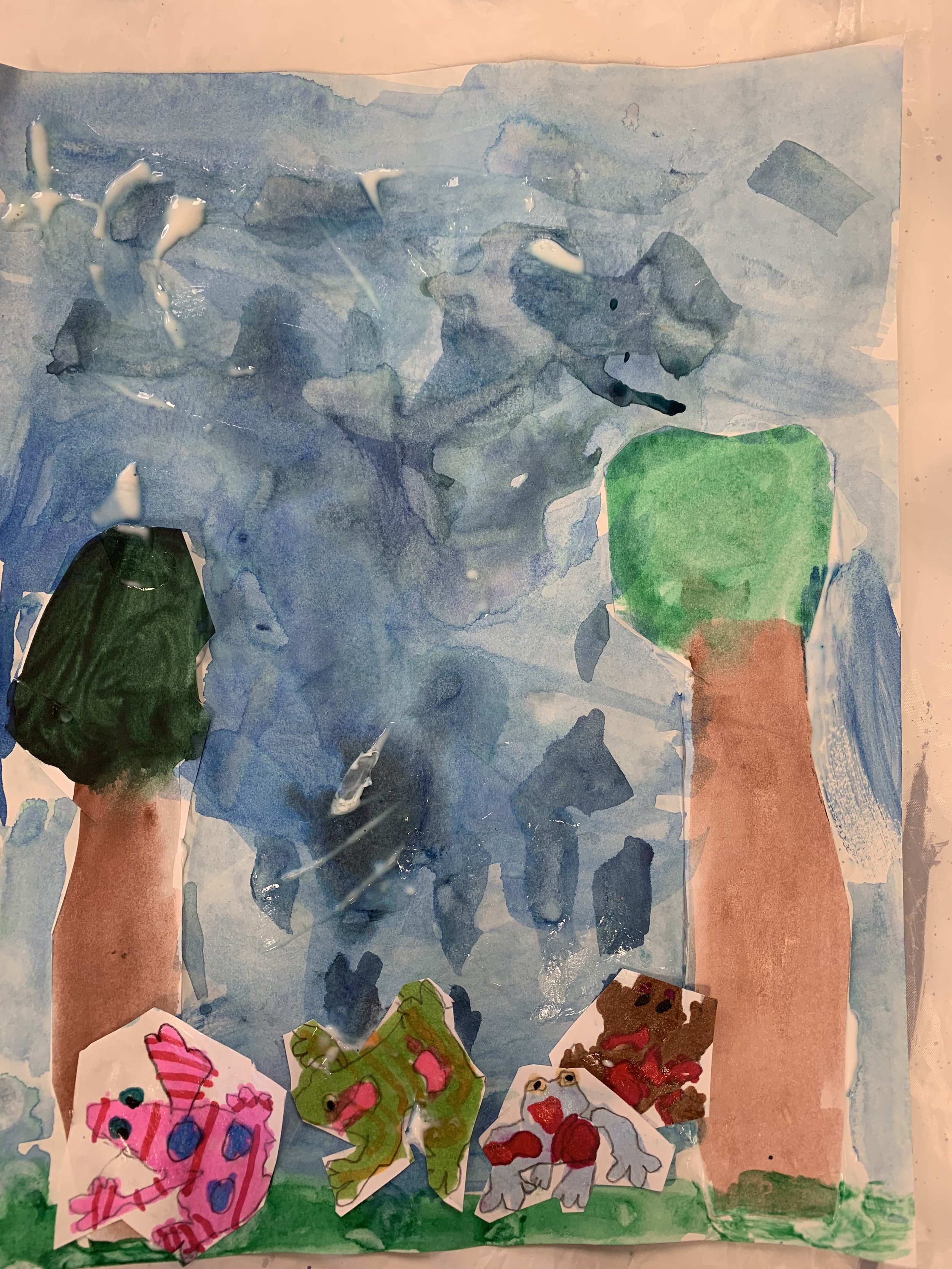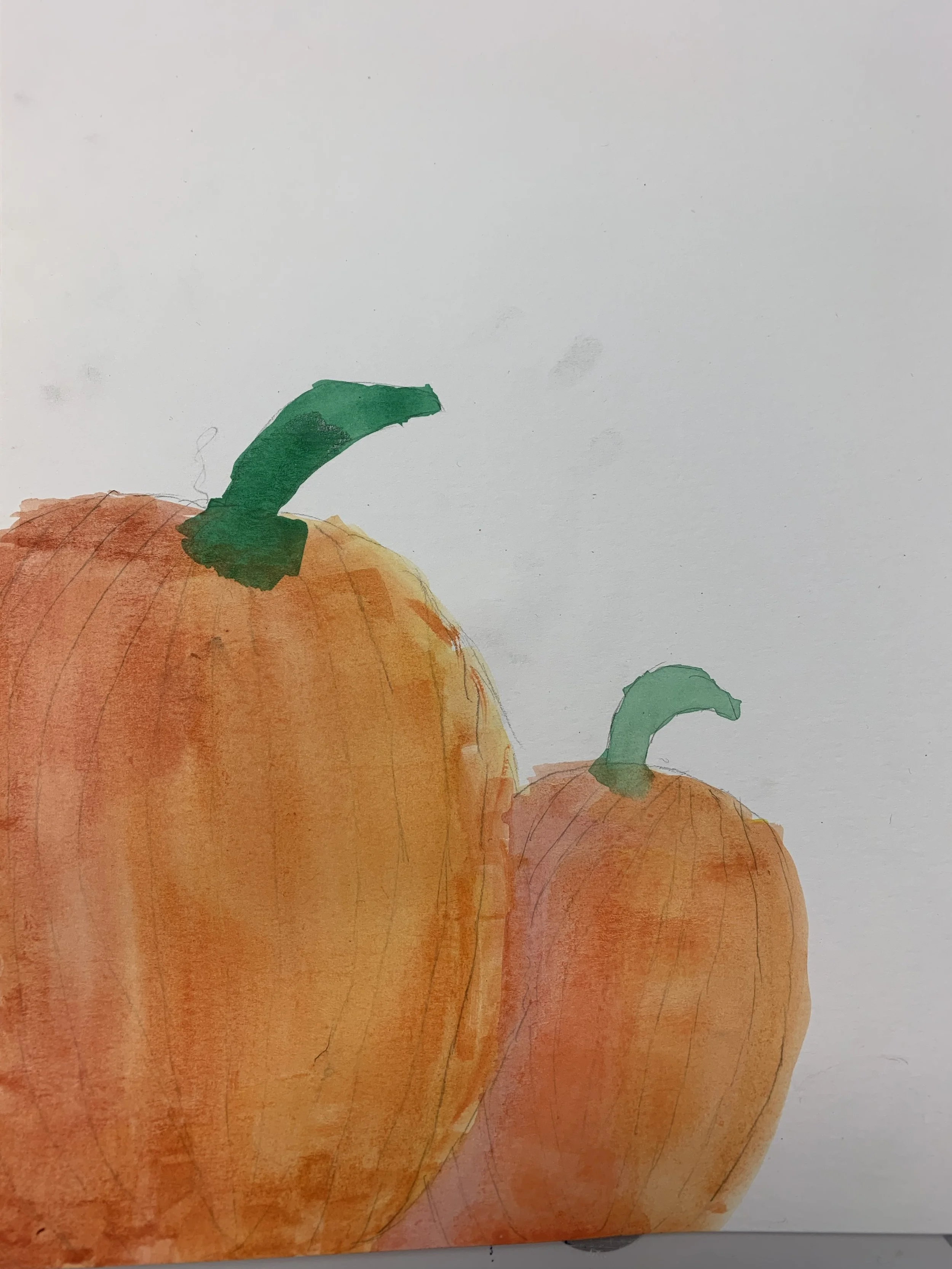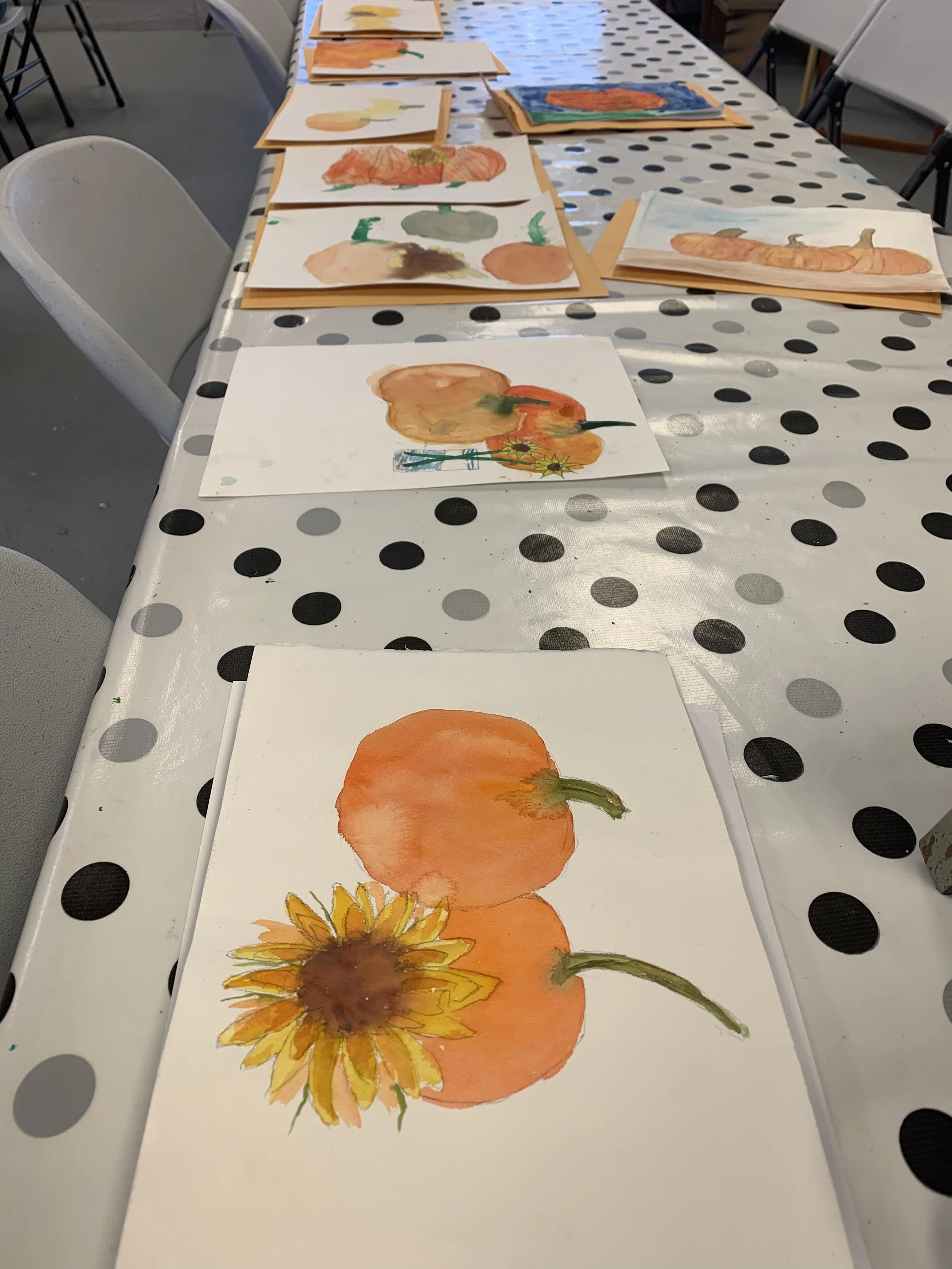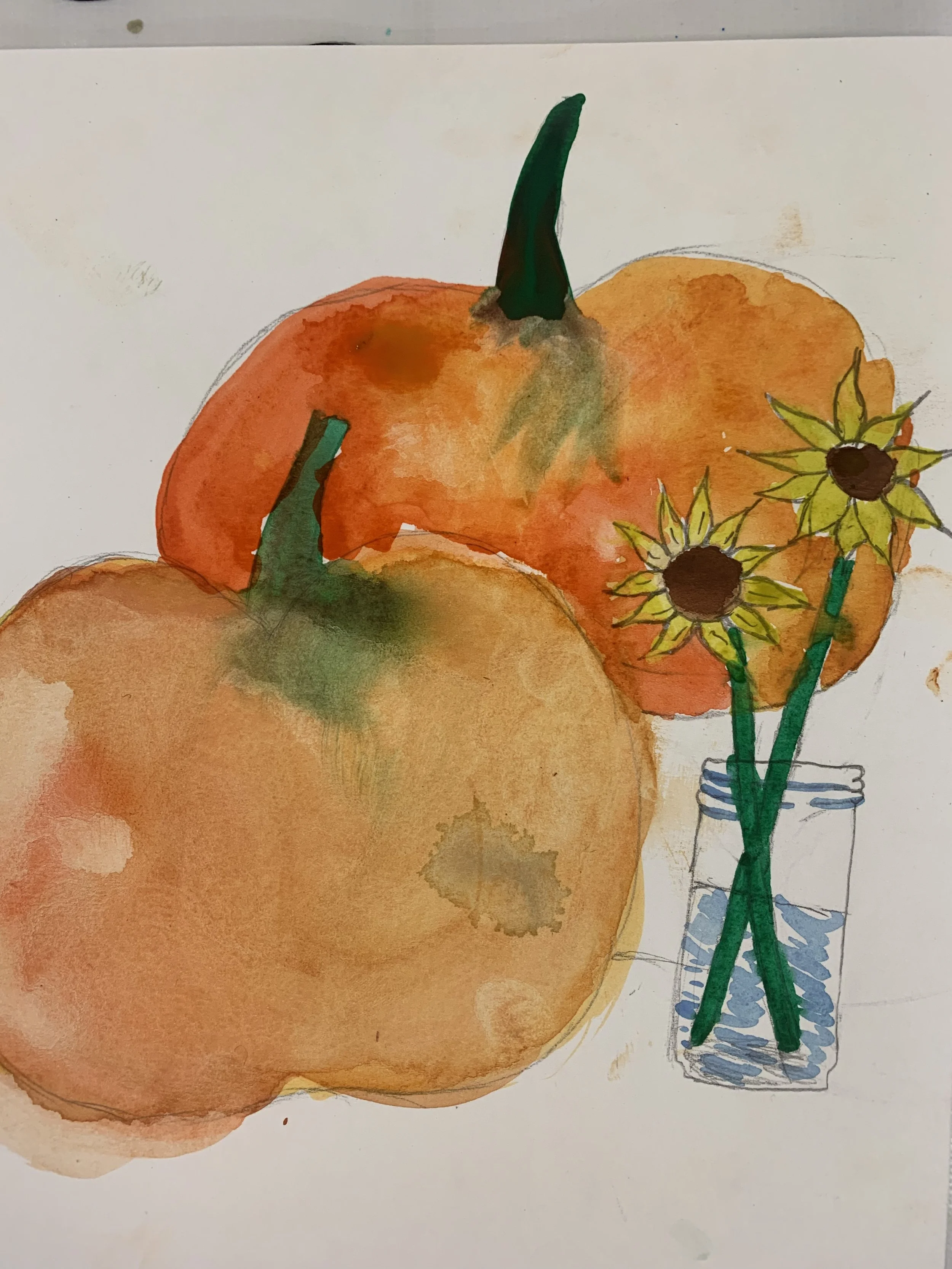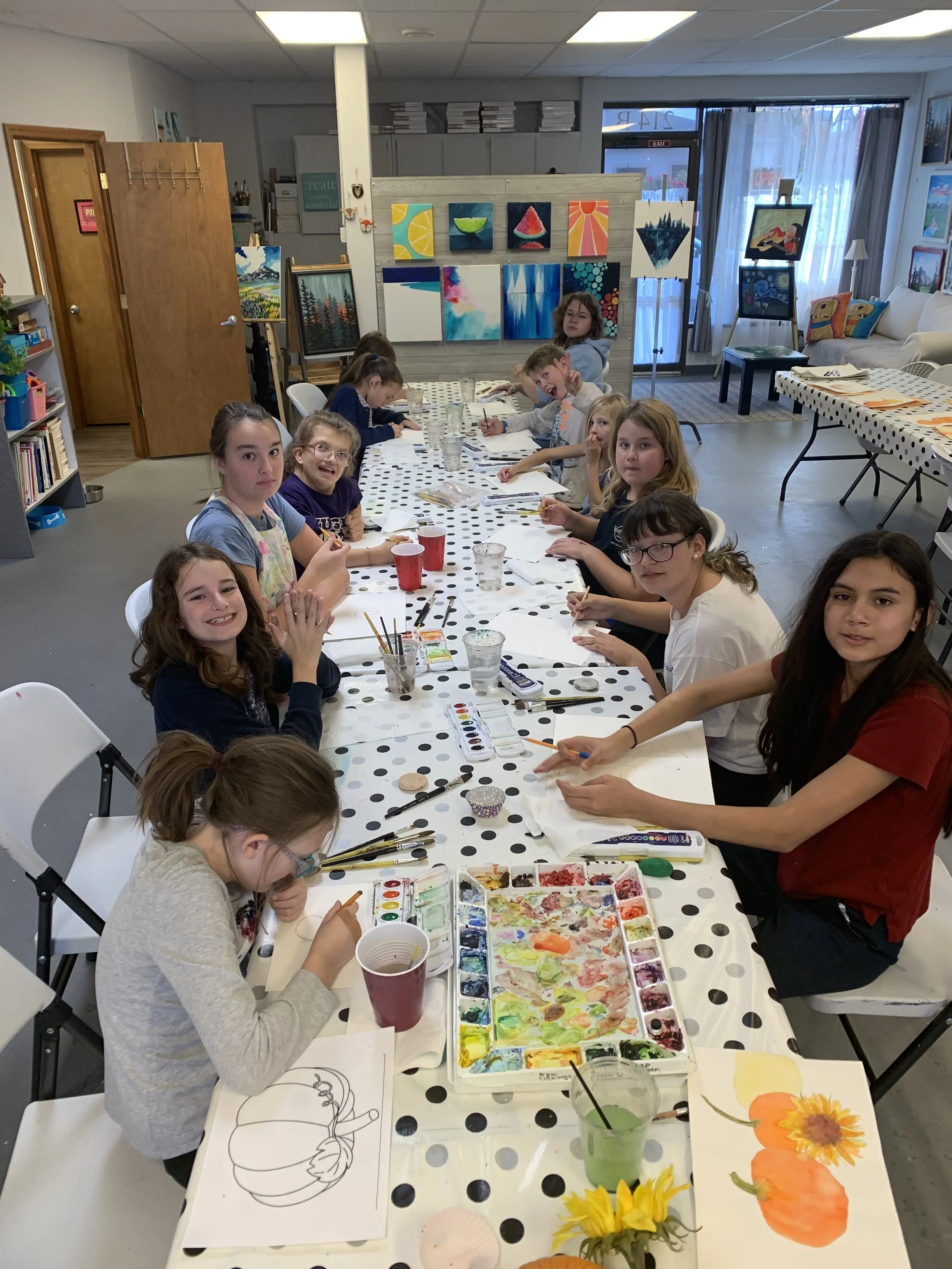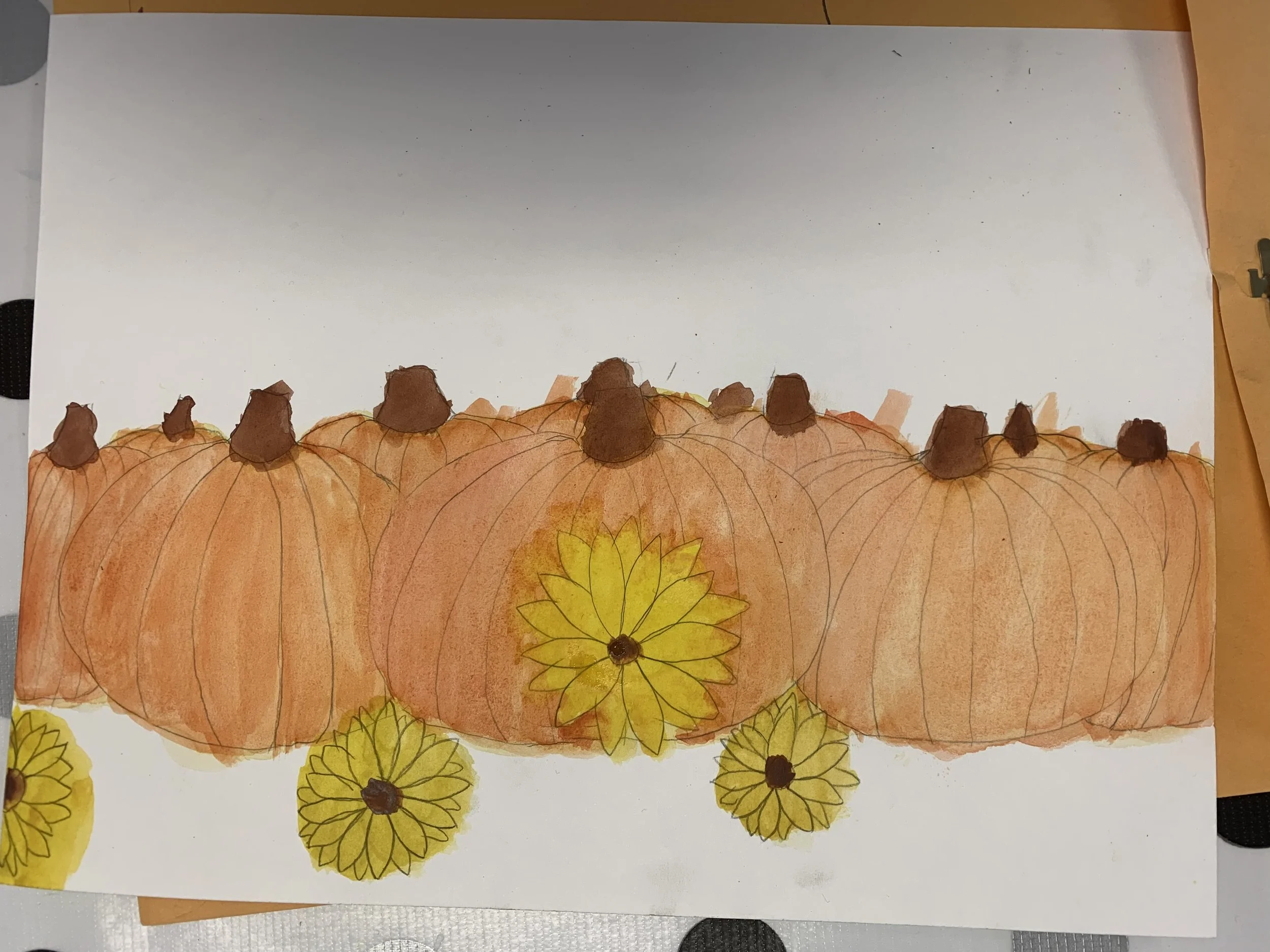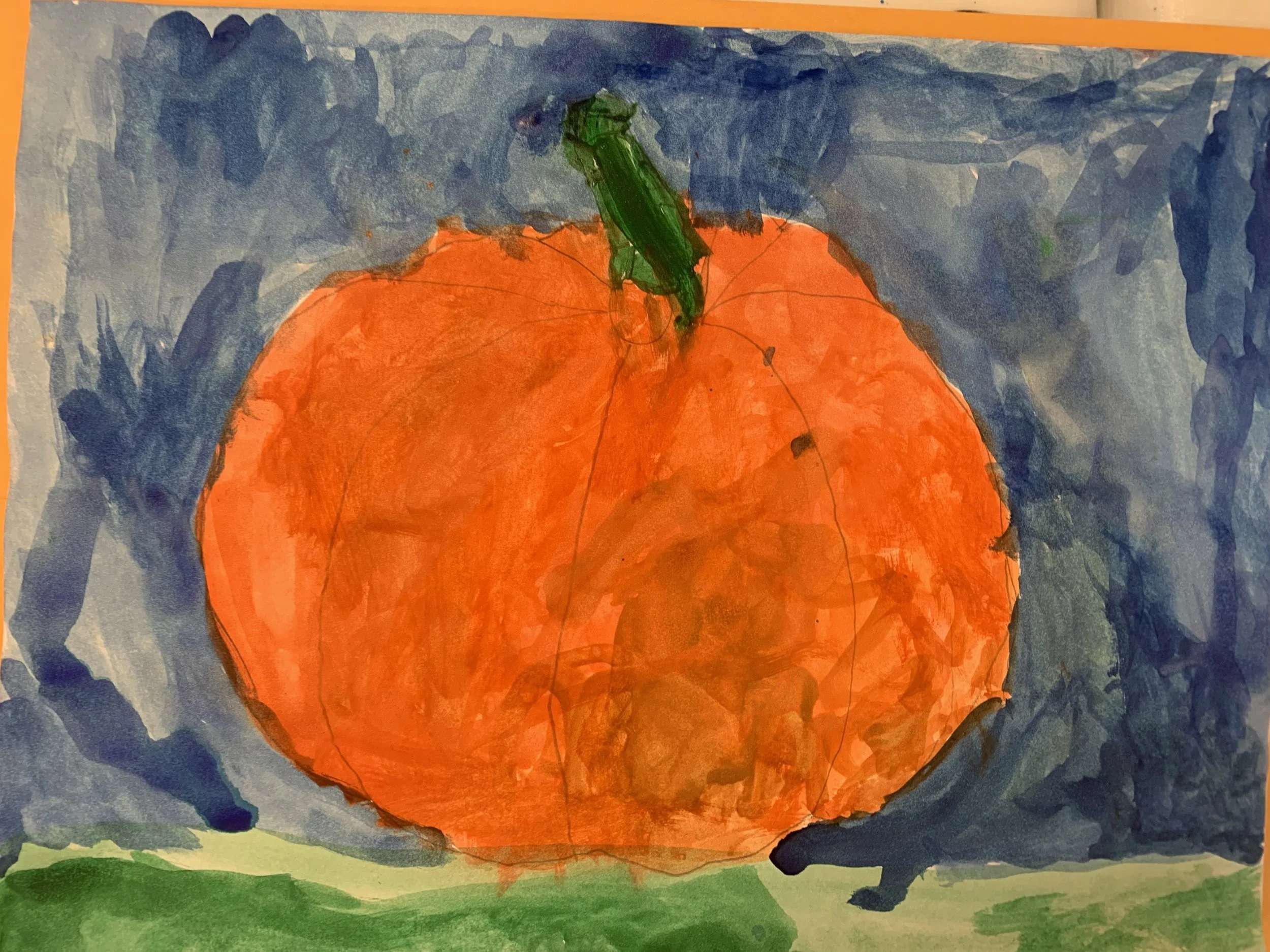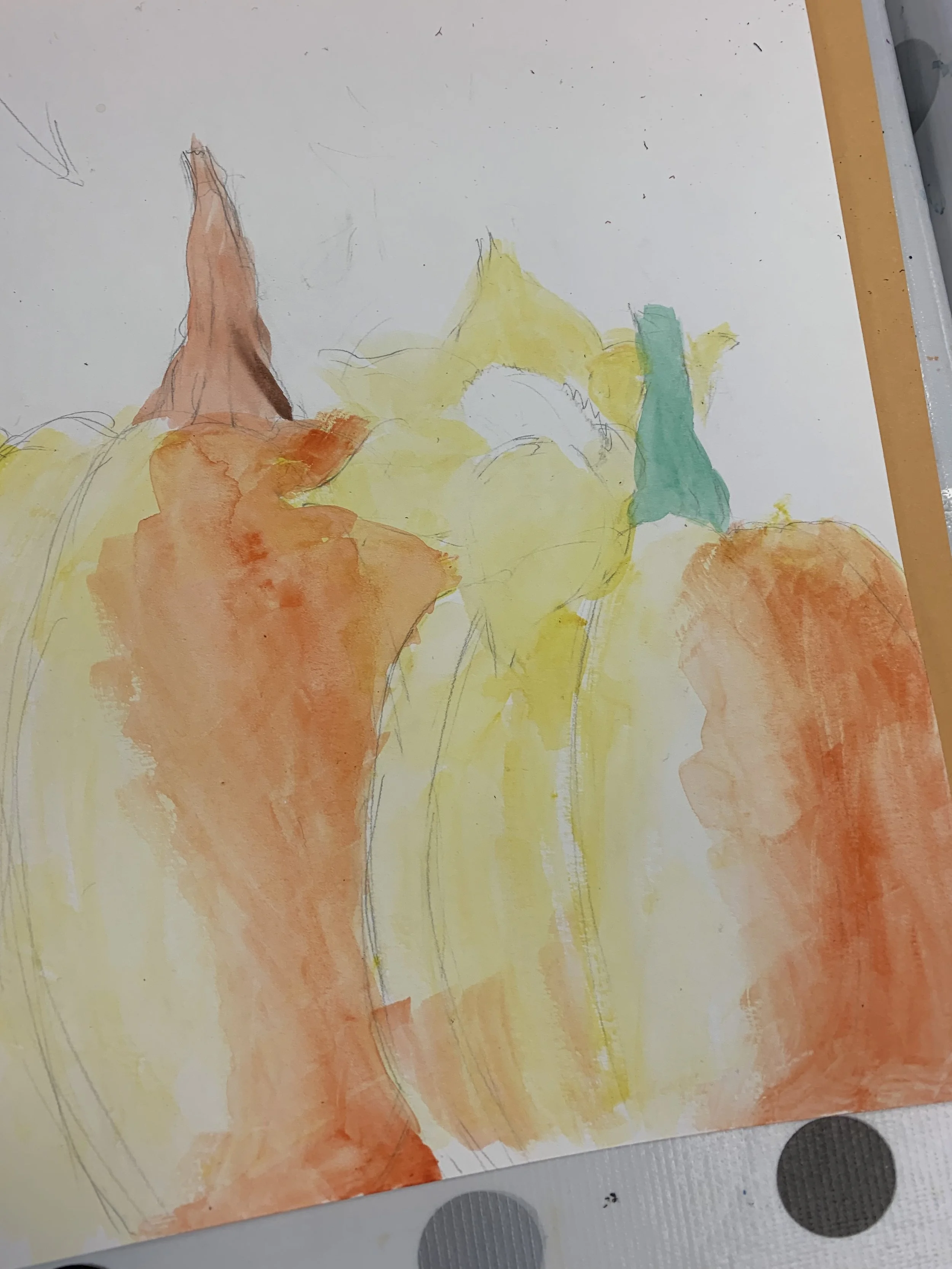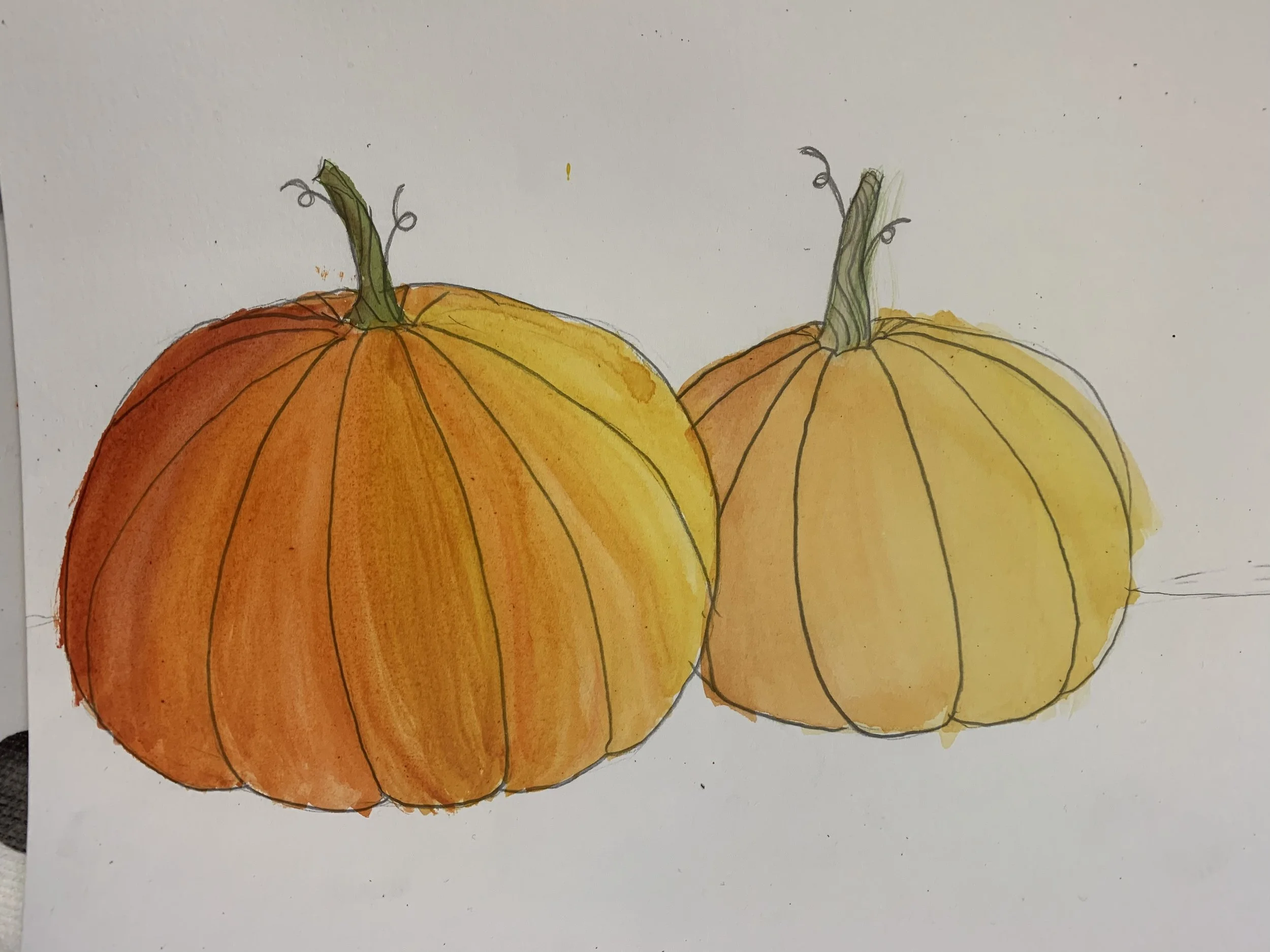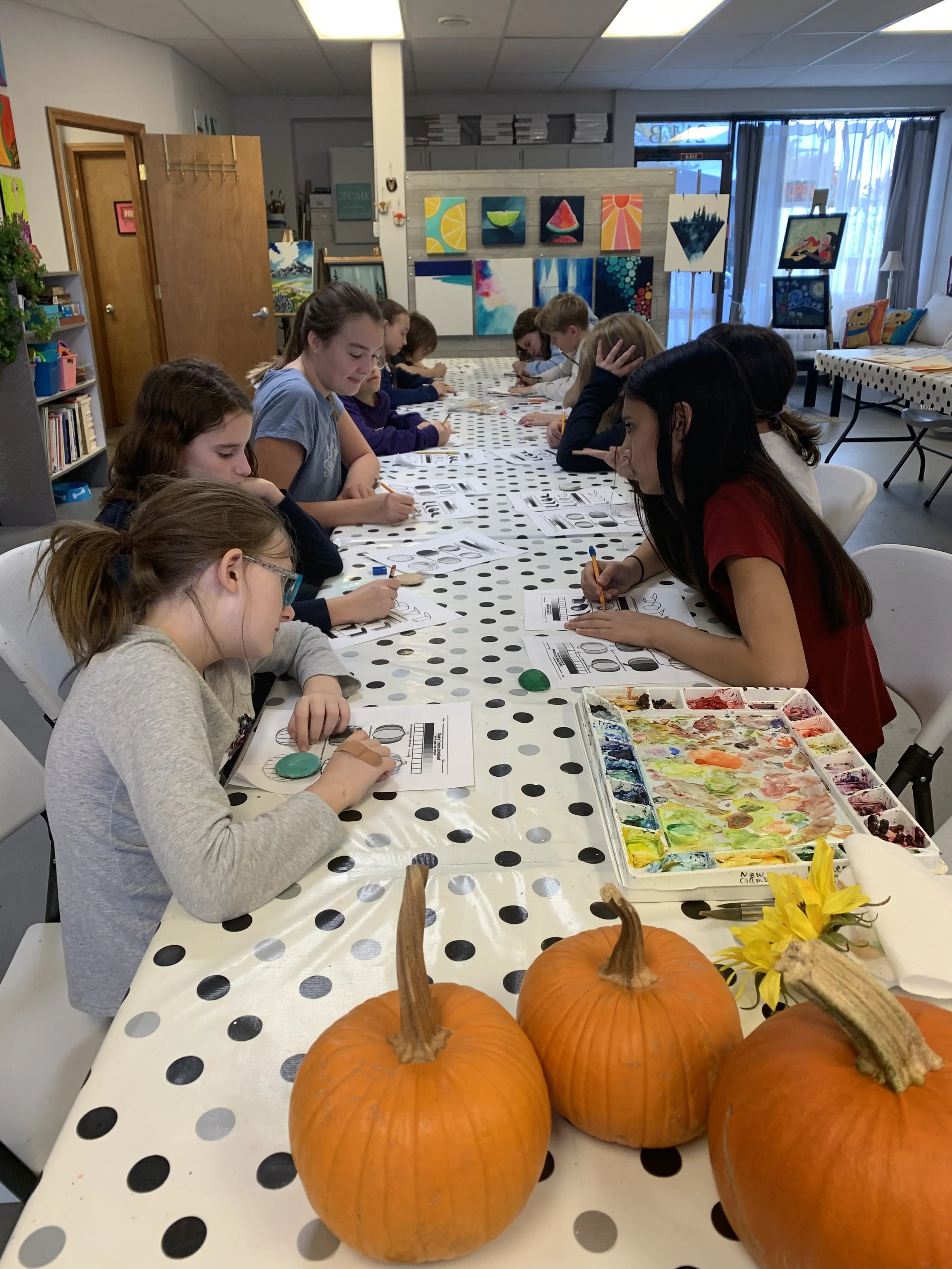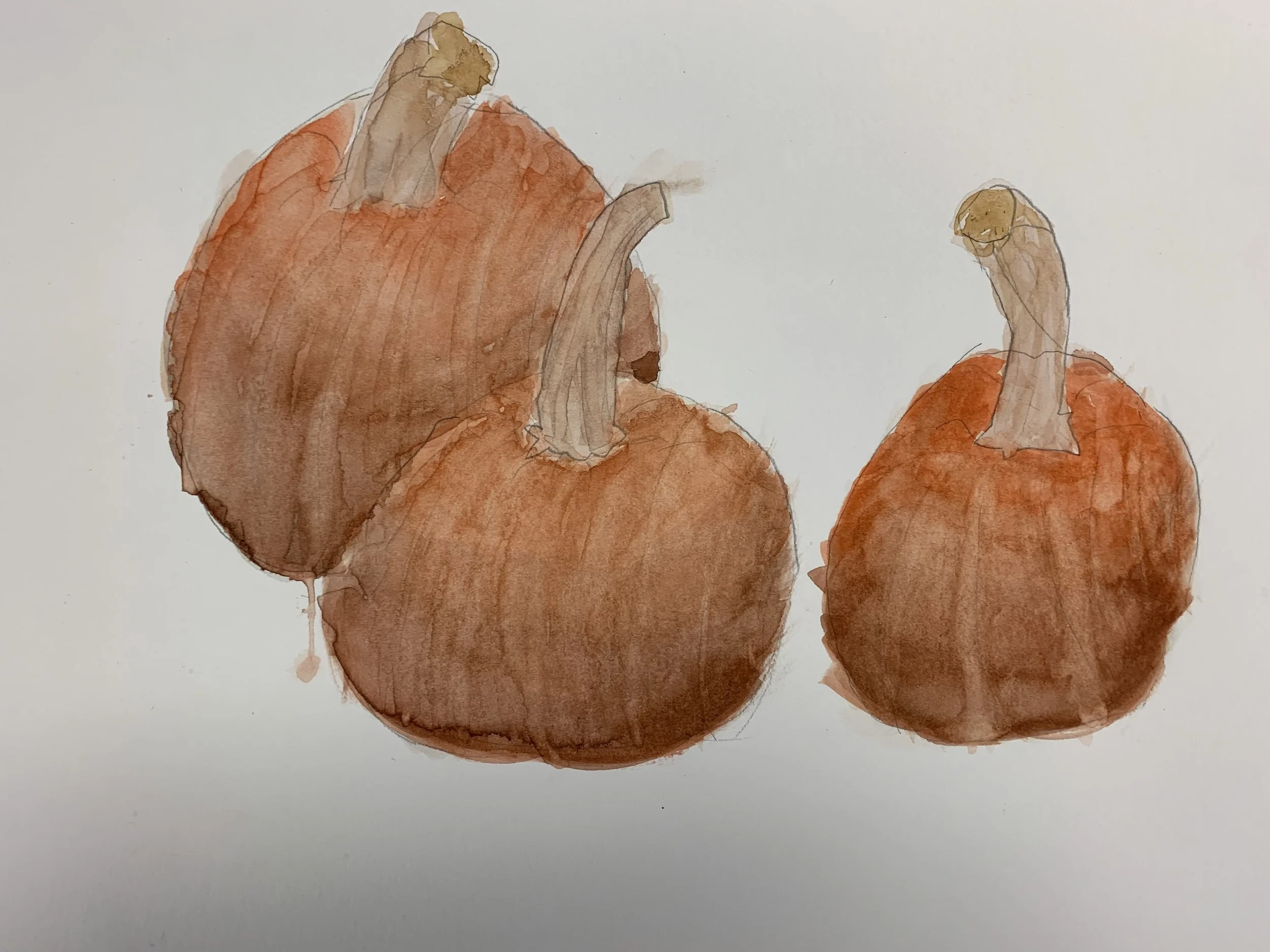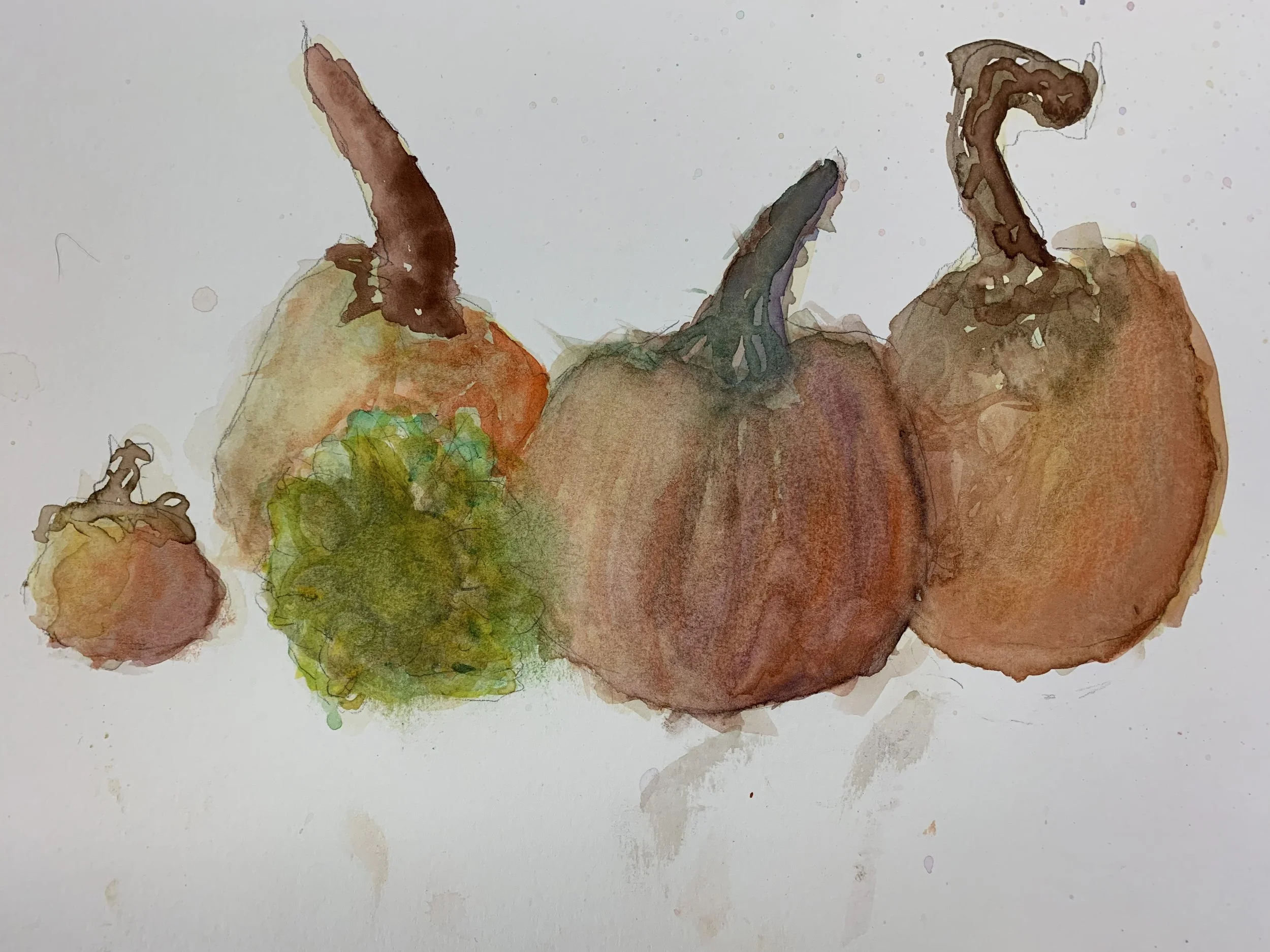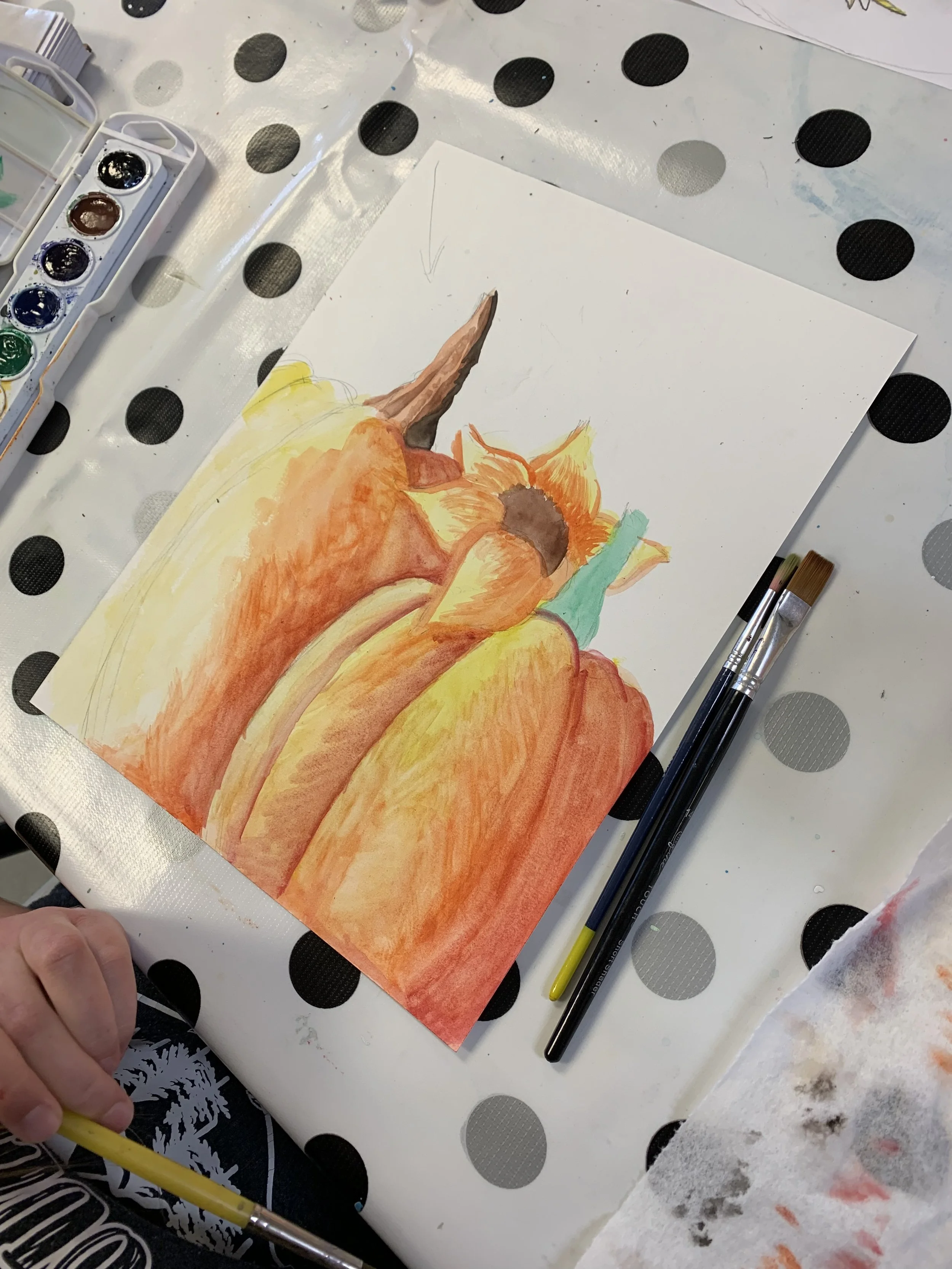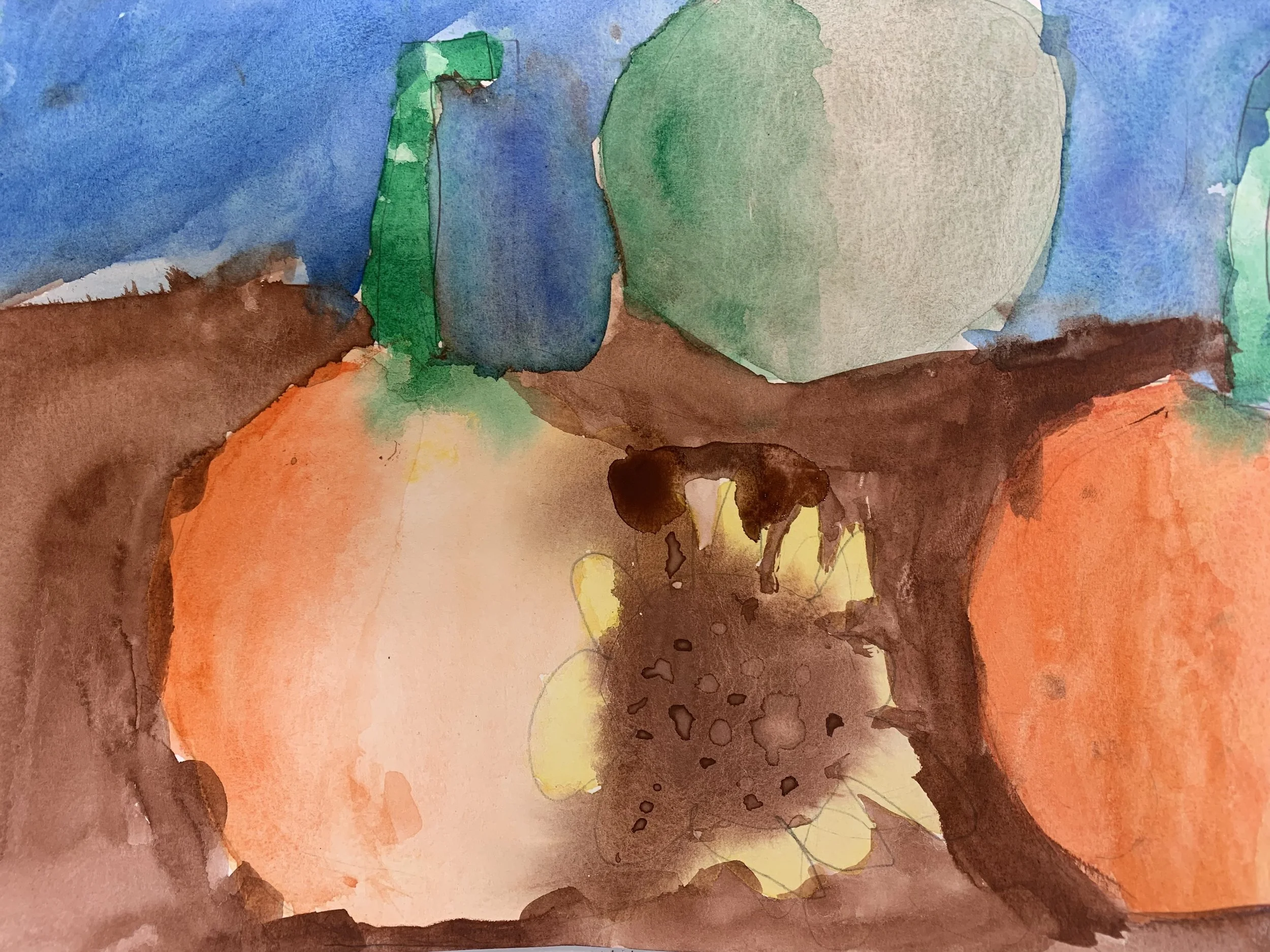Roosters 🐔
My older class is learning some watercolor technique while painting a rooster. Wet in wet, wet on dry, and dry on dry. No two roosters looked alike because all the drawing was free hand. They could choose to paint just the head or the whole body. I had some color reference photos to gather inspiration but it was up to each student if they wanted to try and stick to true rooster colors or go whimsical.
This class also had the option of the dry watercolor boxed paint or creating their own palette with wet tube paint on their own pallet.
Christmas Houses
Parent/child Christmas painting.
Sweet Landscapes
I’m obsessed with skycapes; just take a look at my “landscape” section on this website.
My students created some lovely pieces.
Reluctant Artist...
This guy has graciously shown up for private art classes for a full year. When he first came, I reminded him he could hardly draw a straight line. Not really but he needed improvement. With his mom’s request of “strictly drawing,” we did just that- pencil, paper, eraser. (At Christmastime I let him burst into a bit of color with a winter scene in watercolor.)
I was so glad to get his recent call asking for another year of art!
Grandma’s Art Camp ⛺️
13 grandchildren were old enough to participate so I rented the studio space to fit us all in. Erin came ‘round the first morning with Spudnut doughnuts 🍩.
Getty Museum
The Getty museum building on its own is a glittering white marble art piece. The ride up the hill in their tram is worth the trip just for that view. And then you get to see the amazing art collection as well.
Clymer Art Museum Solo Show
This is a thrill for me to get my own show and have the very talented, Matthew Lennon, curate. To be able to drop off my art and know he will arrange and hang the show perfectly is a privilege. Andrew and I enjoyed the reception complete with a lovely glass of wine.
One of the things about being at your own show incognito is getting to hear the patrons’ comments about the work without them feeling like they need to filter.
Actual Linoleum Blocks
The high school class worked diligently and created some great art.
A few little mishaps with the linoleum cutter but thankfully band aids were available. I’m thrilled with the creative designs. Next week we print. I’ve discovered that acrylic paint definitely does not work as well as screen printing ink. Acrylic is too fluid and doesn’t adhere to the brayer to give a good even coat to the block.
When Life Hands You Lemons
My one hour class had the opportunity to meet for two straight hours in make up of an hour during spring break. I loved the little slower, less frantic pace. We worked in acrylic to paint a lemon branch. I had two of my own paintings for reference and various examples of the leaf shape and veins on the leaves.
One little girl finished her pieced and said, “This is the best painting I’ve ever done.”
Scrimshaw
Historically speaking, scrimshaw artists (aka “scrimshanders”) were whalemen, sailors, navy tars and merchant seamen who made their living on the sea. Life on a whaling vessel was often quite monotonous waiting for a whale sighting. Creating intricate art on the available materials was a great way to pass the time. Whaling voyages averaged 46 months. They used materials taken from sea animals, mainly whales but also porpoises, walruses, and even mollusks. They tended to depict nautical scenes and motifs: ships, flags, anchors, and so on.
It was a pleasure and an honor to pass the art of scrimshaw on to these artisans.
Jasper Johns and Andy Warhol
I introduced Jasper Johns and Andy Warhol to my students along with an exercise using the color wheel. The students decided whether to channel Johns or Warhol and then whether to use opposite colors or analogous colors for their pieces. I encouraged mixing their own shades of color instead of simply using the premixed color in the bottle. I love the way these are turning out!
Jasper Johns adhered to a strict set of motifs for a career that has spanned over 50 years, Johns combines texture, color, and line to create compositions that are inspired by known images, the most famous of which being flags, maps, and numbers.
For Jasper Johns, the familiar objects and signs of everyday life are ideal subjects for art. It was a radical notion in the mid-1950s.
Andy Warhol’s works explore the relationship between artistic expression, advertising, and celebrity culture that flourished by the 1960s, and span a variety of media, including painting, silkscreening, photography, film, and sculpture. Some of his best known works include the silkscreen paintings Campbell's Soup Cans (1962) and Marilyn Diptych (1962).
Van Gogh's Bedroom
Tying a famous artist in with an art project, I had all the students sketch their bedroom and bring it to class. They transferred their sketch to canvas and painted with acrylic.
Simple Prints
Every year I think I’ll introduce linocut and every year I opt for the styrofoam, when I imagine hands securing the linoleum on the far side of the linocut blade that might inadvertently slip and skip over the linoleum straight to the curve between the thumb and forefinger…Okay, that might have happened to me in grade school. I should get over it. Next year, we’re doing the real deal.
Styrofoam works fairly well though curves and circles are a little difficult to maneuver. But overall I love the finished look. We use real printing ink- not acrylic paints- on glass plates to load the brayer.
You have to remember that words and letters need to be imprinted backwards so they come out forwards on the print. !YADHTRIB YPPAH looks kind of cryptic until you print it.
Lined up to dry while they work on the next.
I love how the prior print color peeks through at the edges
This cat has so much personality!
This little artist just welcomed a baby sister into their family. The lion is her symbol for the fight she put up to get out of the hospital and go home to her family.
“HI”
“Hi,” to you too.
Older students can veer towards not being “cute” with their execution. (Pun intended.)
Always a dinosaur theme with this guy.
Collage Work
The idea for this project comes from my collage love/obsession. If you want to take a look at some amazing collage work look at Lance Letscher’s work. The detail is unbelievable.
Everyone had to draw a bird, fish or animal and do whimsical colors and designs on it; then put the being in an environment of their choosing.
Modge Podge is my favorite for this project.
These two worked solidly for two hours!
The little frogs are darling
Pumpkins for Fall
I love a good still life. And I’m drawn to the color orange so pumpkins are a delight.
I bought a few at a farm stand for reference. And we talked about light source and shadows.
Everyone was pretty thrilled to discover I’d replaced the ancient palletes with new ones.
I like the poetic license this artist took to add the vase of flowers
This artist turned my 3 pumpkin set up into a field of pumpkins.
I love the boldness
Great work on the lines following the shape of the pumpkin
Wrapped Rocks
I love smooth rocks so when I saw this art form of naturally dressing them up in leather and jute twine with twigs and reeds, I knew I wanted to try.
My grandchildren came for an evening and we finally did it. We had invited the kids for dinner but the dinner turned secondary and we sat at the dining room table eating lasagne while wrapping rocks. When we ran out of rocks Athan and Fox each took a run to the river to collect a few more.
The process is mesmerizing and finally hours later when it was too dark to see outside, they biked home with headlamps.
Jute twine and sticks.
Summer Flowers
I had the privilege of teaching three talented women- three generations of a family- to paint a floral piece using acrylics. I already had the head’s up that they were talented, so I did a general instruction intro and then they did these beautiful paintings.
Plein Air in a Windstorm
Maybe the worst wind in months and so I had scheduled a plein air painting day with my classes. Our final hurrah before summer break.
I had to go around with masking tape to secure their masterpieces and even then water cups were blown over and and paint brushes took flight.
I mentioned that some people go out in snowstorms and rainstorms to capture the clouds and atmosphere so it was all very genuine to the act.
“En plein air, or plein air painting, is the act of painting outdoors. This method contrasts with studio painting or academic rules that might create a predetermined look.”
Barn Raising
A barn in three mediums. First a sketch, make sure to get all the subtle details. Then in watercolor. You can be a little loose. Finally, in acrylic.




